More Photo Galleries
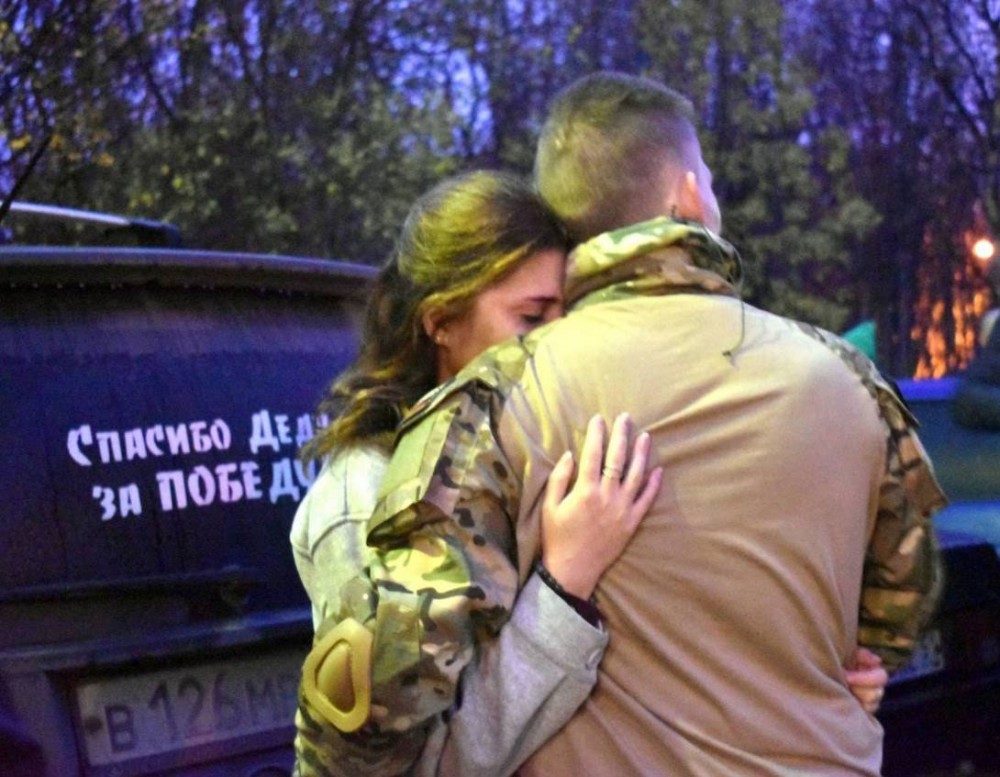 A last hug. Man from the Pechenga rayon going to war. Photo: Andrei Kuznetsov on Telegram
A last hug. Man from the Pechenga rayon going to war. Photo: Andrei Kuznetsov on Telegram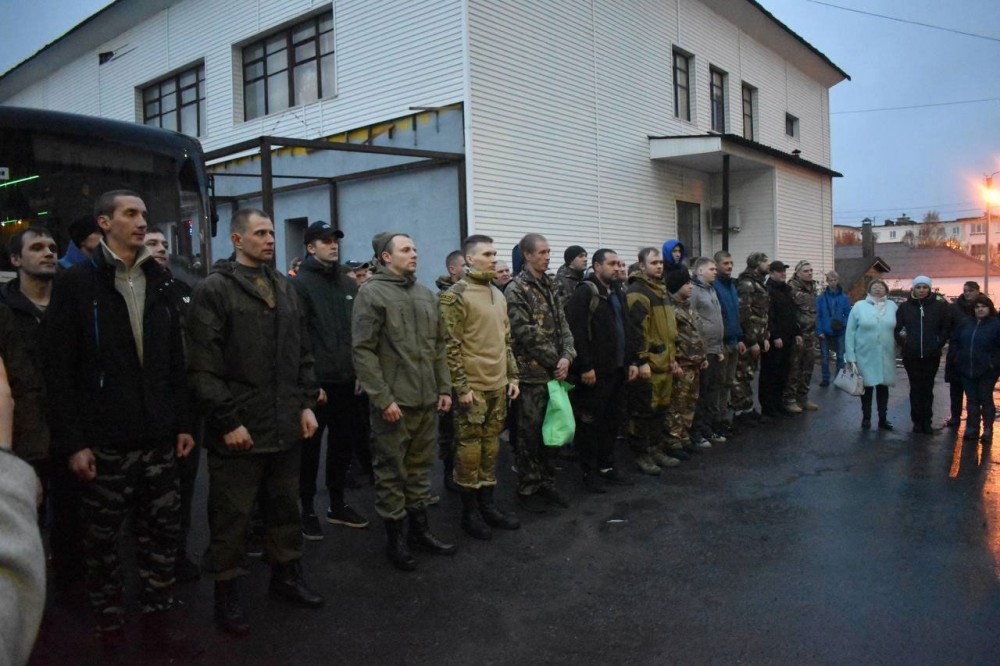 Mobilisation along border to Finland and Norway. Drafted men from the Pechenga rayon. Photo: town Mayor Andrei Kuznetsov on Telegram
Mobilisation along border to Finland and Norway. Drafted men from the Pechenga rayon. Photo: town Mayor Andrei Kuznetsov on Telegram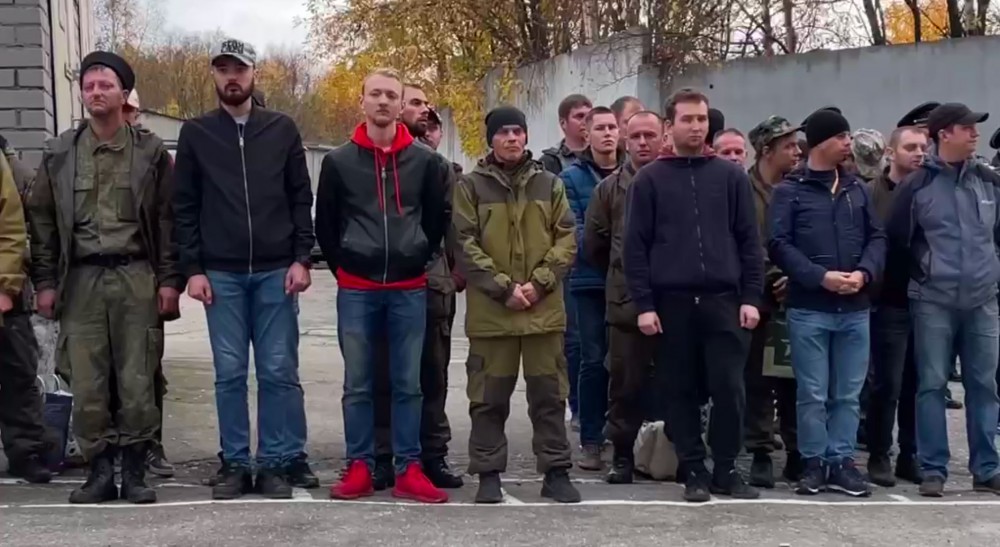 Drafted men from Murmansk. Photo: Governor Chibis on Telegram
Drafted men from Murmansk. Photo: Governor Chibis on Telegram Young indigenous Nenets men from the Yamal-Nenets region going to war. Photo: Governor Artyukhov on Telegram
Young indigenous Nenets men from the Yamal-Nenets region going to war. Photo: Governor Artyukhov on Telegram Mobilisation in Murmansk. Photo: Governor Chibis on Telegram
Mobilisation in Murmansk. Photo: Governor Chibis on Telegram Governor Dmitry Artyukhov speaks to young men from the Yamal-Nenets region head of their departure to the battlefield. Photo: Artyukhov on Telegram
Governor Dmitry Artyukhov speaks to young men from the Yamal-Nenets region head of their departure to the battlefield. Photo: Artyukhov on Telegram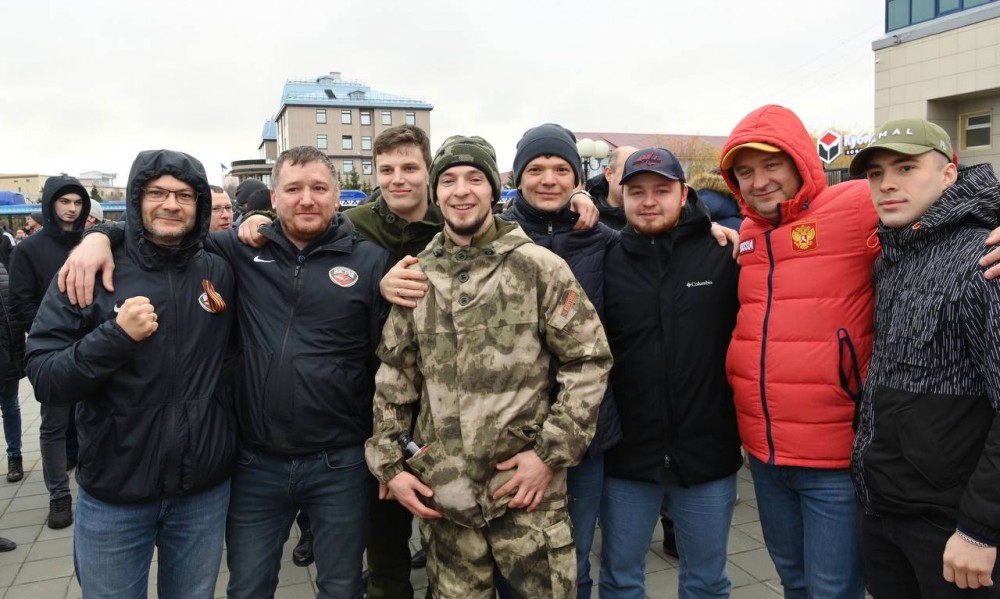 Smiles ahead of the battle. Men from Yamal-Nenets region going to War. Photo: Governor Artyukhov on Telegram
Smiles ahead of the battle. Men from Yamal-Nenets region going to War. Photo: Governor Artyukhov on Telegram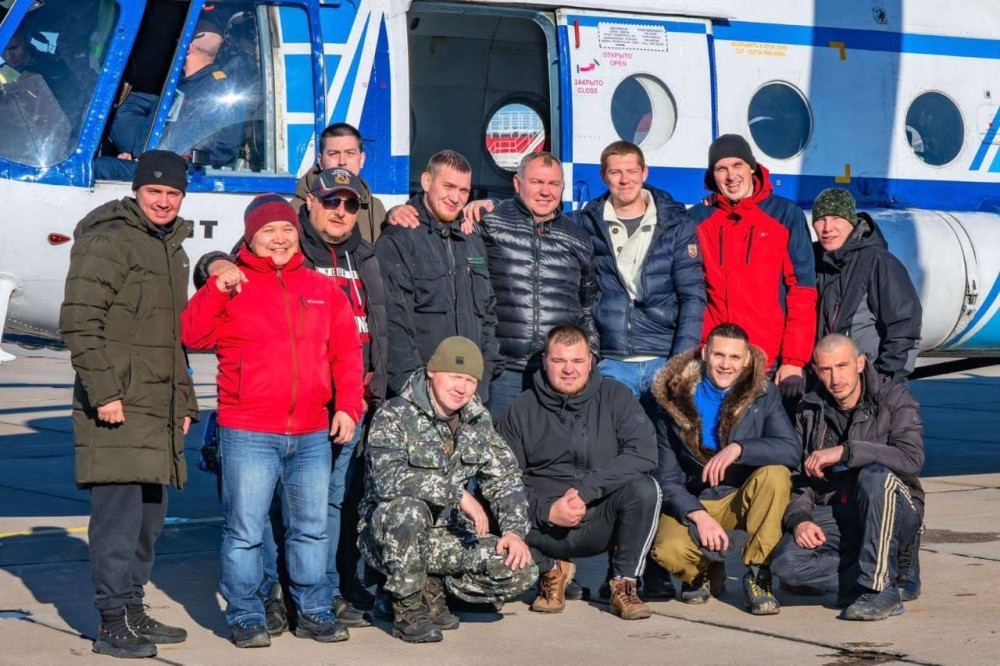 From the Yamal tundra til war. Photo: Governor Dmitry Artyukhov on Telegram
From the Yamal tundra til war. Photo: Governor Dmitry Artyukhov on Telegram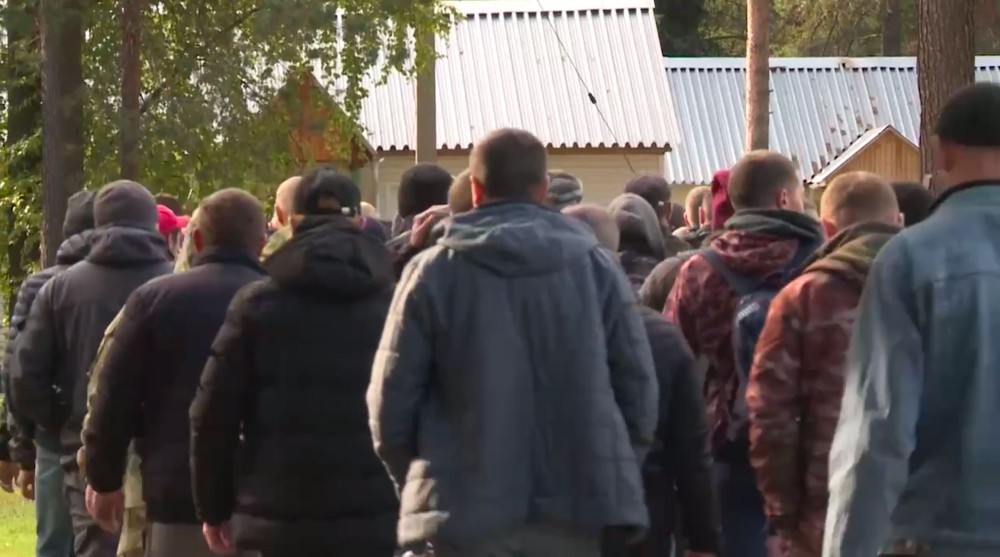 Komi men on their way to war. Photo: Governor Vladimir Uiba on Telegram
Komi men on their way to war. Photo: Governor Vladimir Uiba on Telegram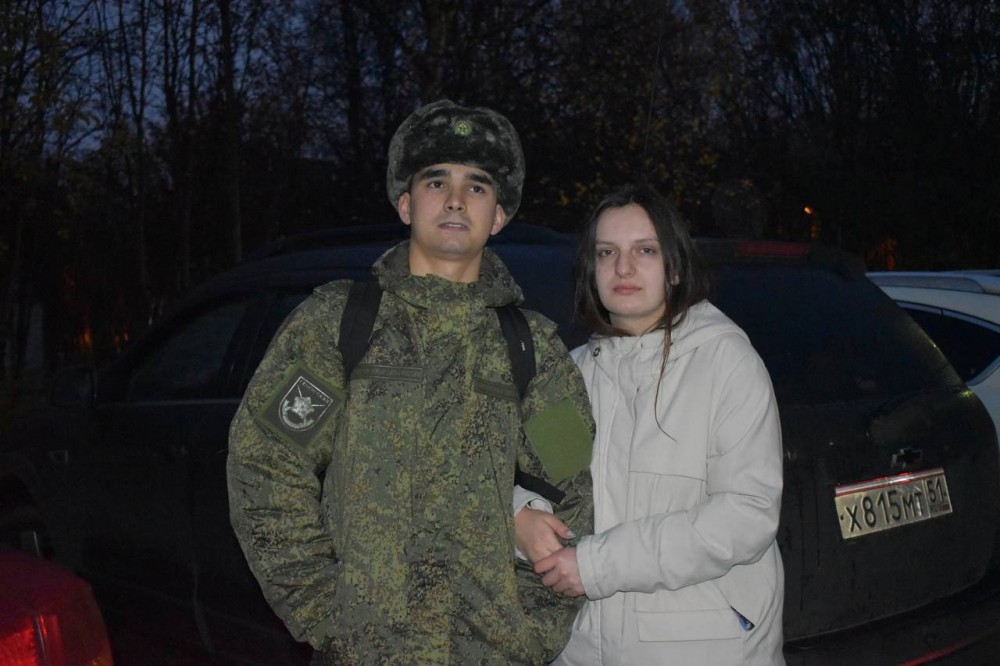 Last good-bye in Pechenga. Photo: town Mayor Kuznetsov
Last good-bye in Pechenga. Photo: town Mayor Kuznetsov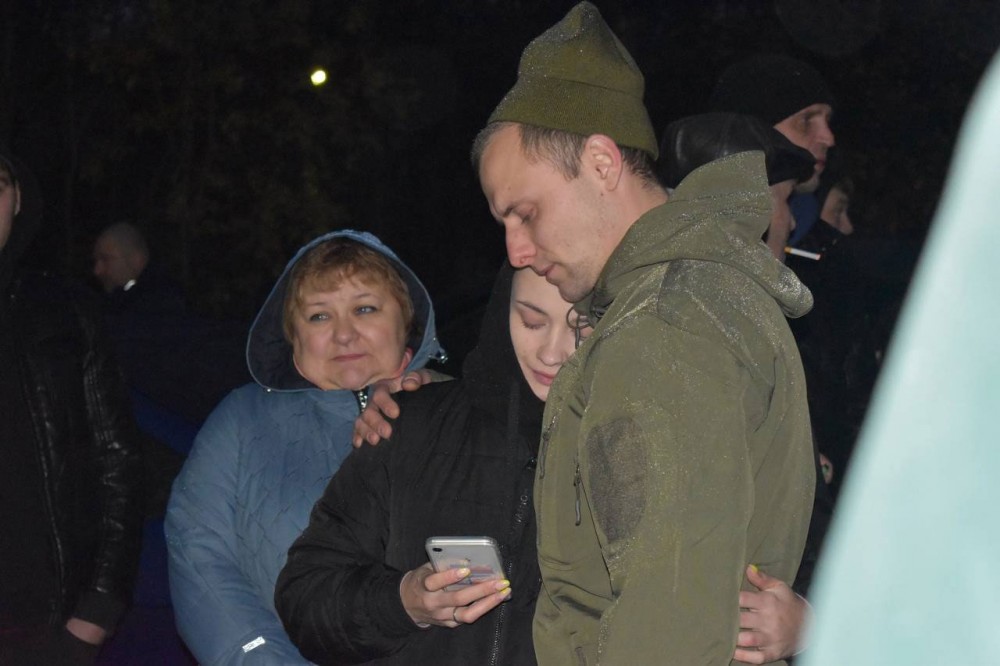 Last good-bye in Pechenga. Photo: Andrei Kuznetsov on Telegram
Last good-bye in Pechenga. Photo: Andrei Kuznetsov on Telegram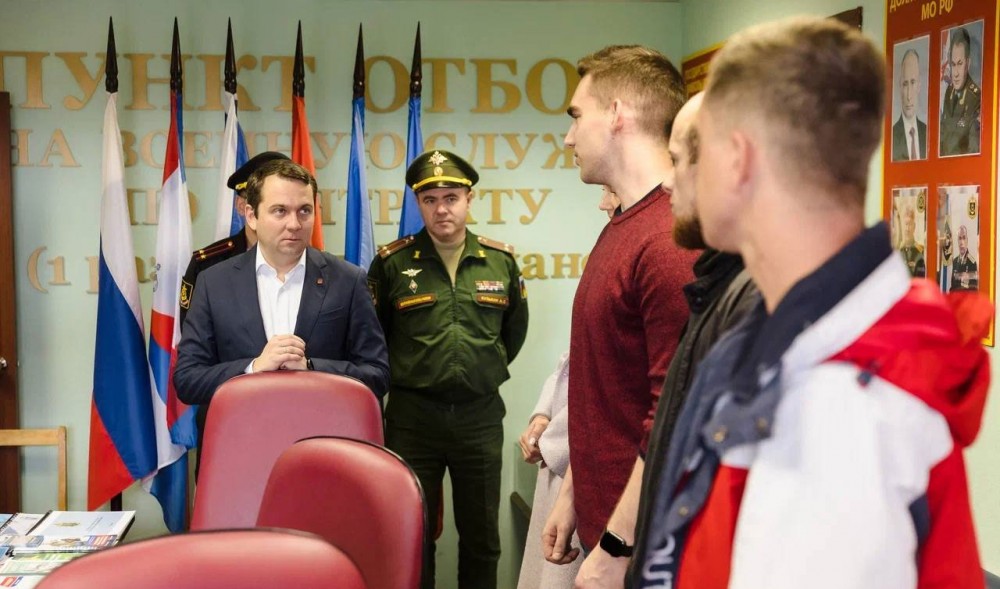 Murmansk Governor Andrei Chibis speaks to local drafted men. Photo: Chibis on Telegram
Murmansk Governor Andrei Chibis speaks to local drafted men. Photo: Chibis on Telegram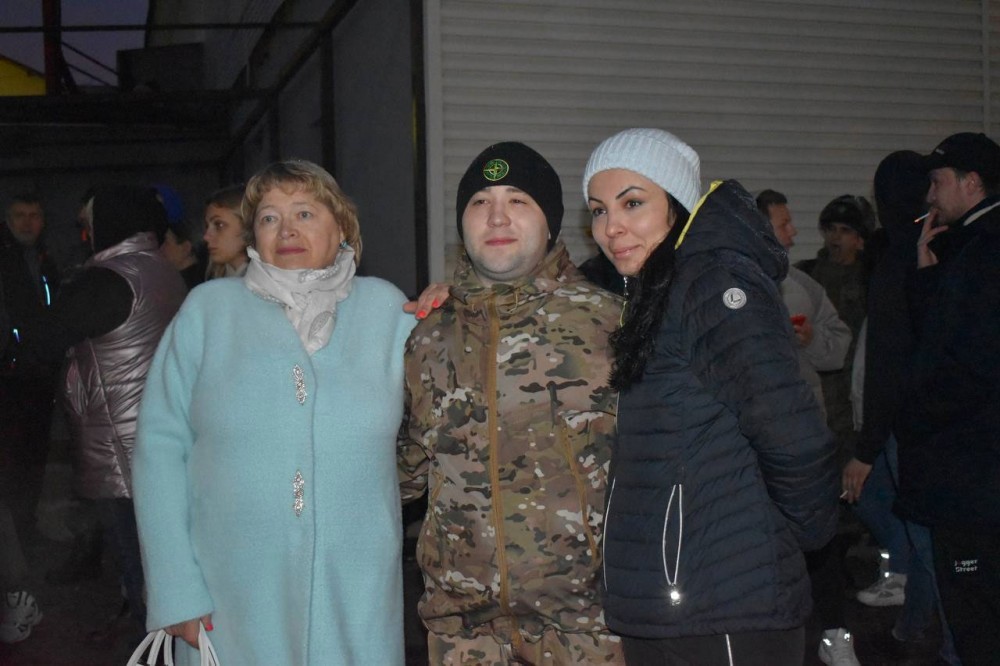 Local man from Pechenga rayon says farewell to relatives ahead of departure for the battlefields. Photo: Andrei Kuznetsov on Telegram
Local man from Pechenga rayon says farewell to relatives ahead of departure for the battlefields. Photo: Andrei Kuznetsov on Telegram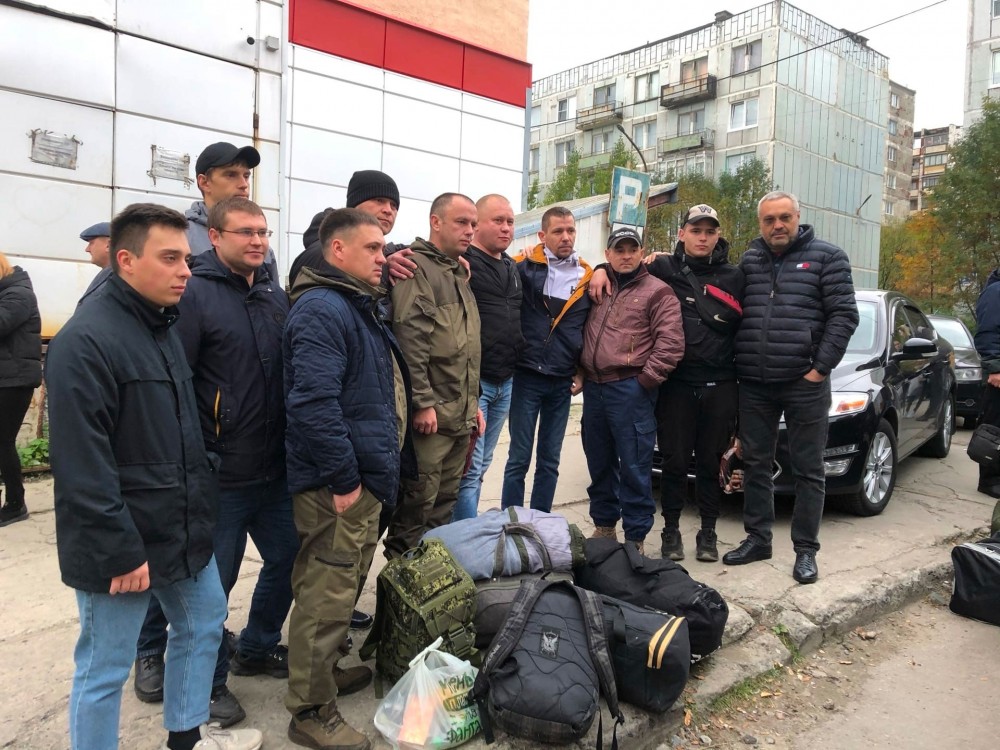 Drafted men from Aleksandrovsk, Kola Peninsula. Photo: vk.com/zatogadjievo
Drafted men from Aleksandrovsk, Kola Peninsula. Photo: vk.com/zatogadjievo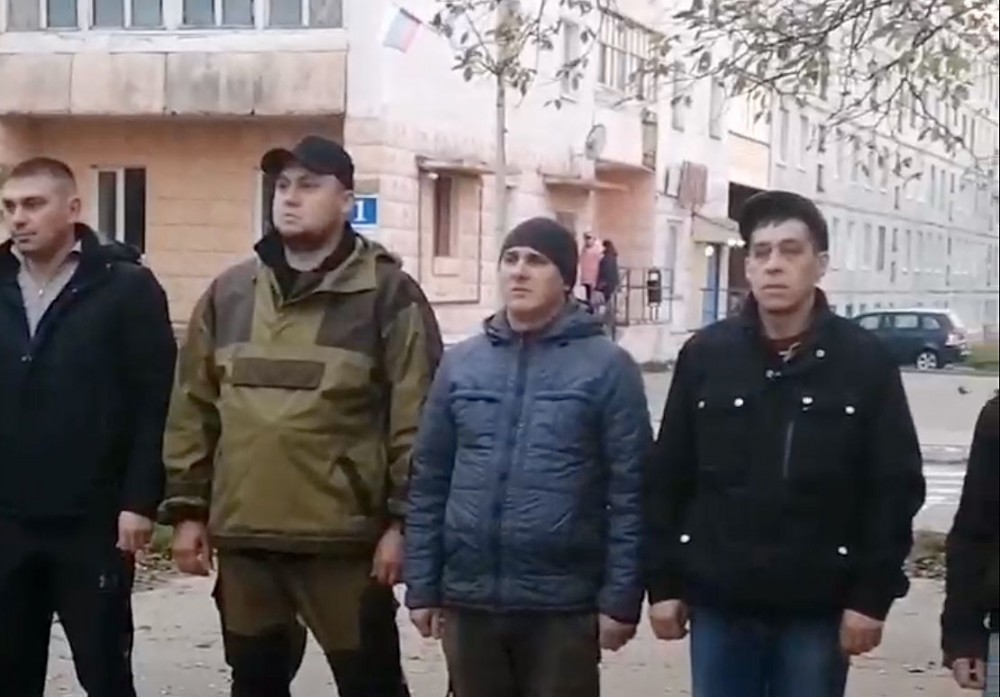 Drafted men from Gadzhievo, Murmansk region. Photo: vk.com/zatogadjievo
Drafted men from Gadzhievo, Murmansk region. Photo: vk.com/zatogadjievo Last good-bye in Snezhnegorsk, Kola Peninsula. Photo: vk.com/zatogadjievo
Last good-bye in Snezhnegorsk, Kola Peninsula. Photo: vk.com/zatogadjievo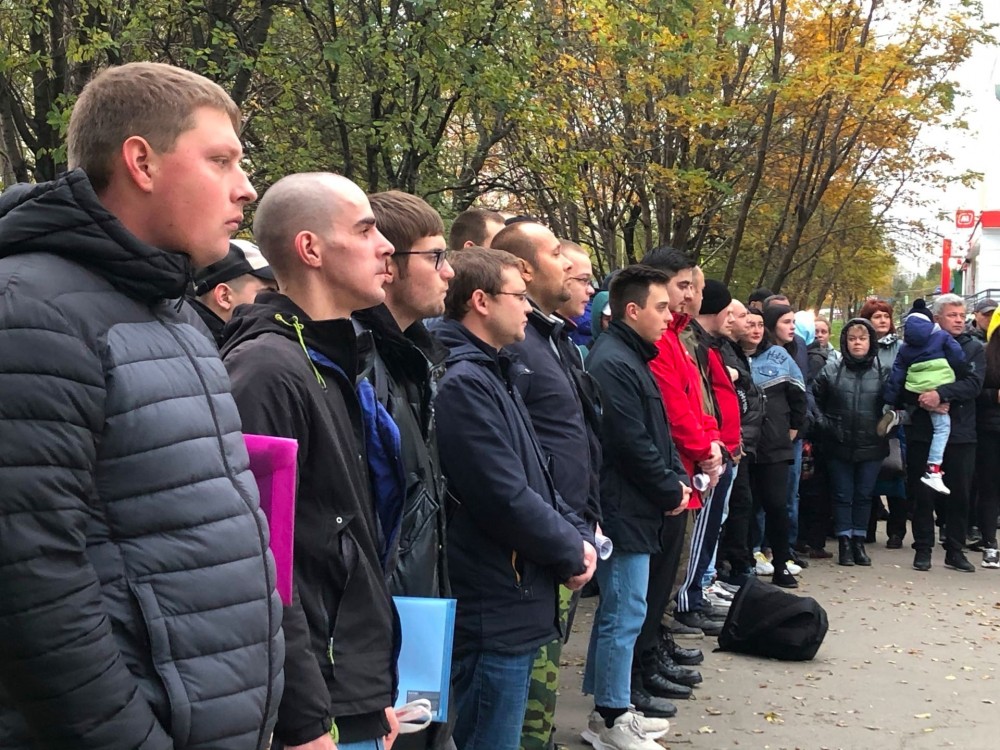 Drafted men from Aleksandrovsk, Kola Peninsula. Photo: vk.com/zatogadjievo
Drafted men from Aleksandrovsk, Kola Peninsula. Photo: vk.com/zatogadjievo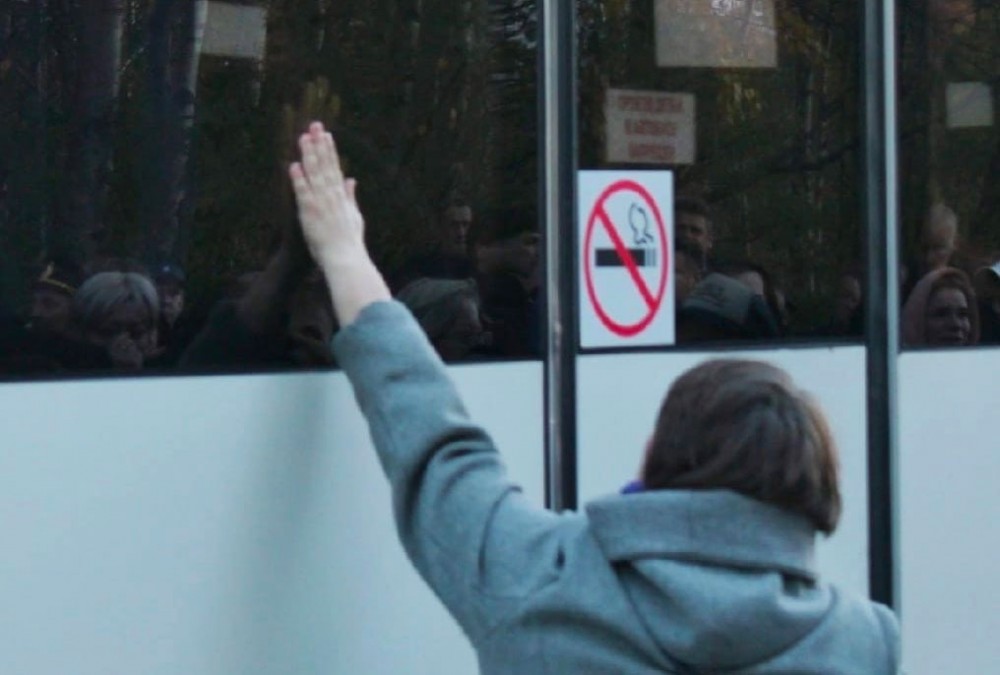 Mobilization in Kandalaksha, Murmansk region. Photo: vk.com/iprosolenko
Mobilization in Kandalaksha, Murmansk region. Photo: vk.com/iprosolenko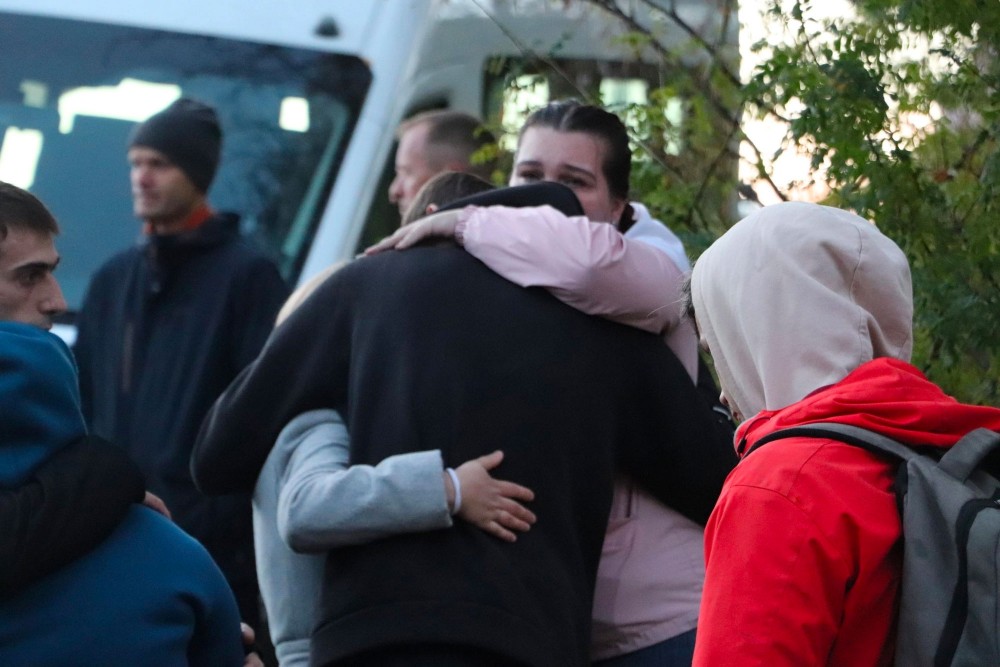 Last good-bye in Kandalaksha. Photo: vk.com/iprosolenko
Last good-bye in Kandalaksha. Photo: vk.com/iprosolenko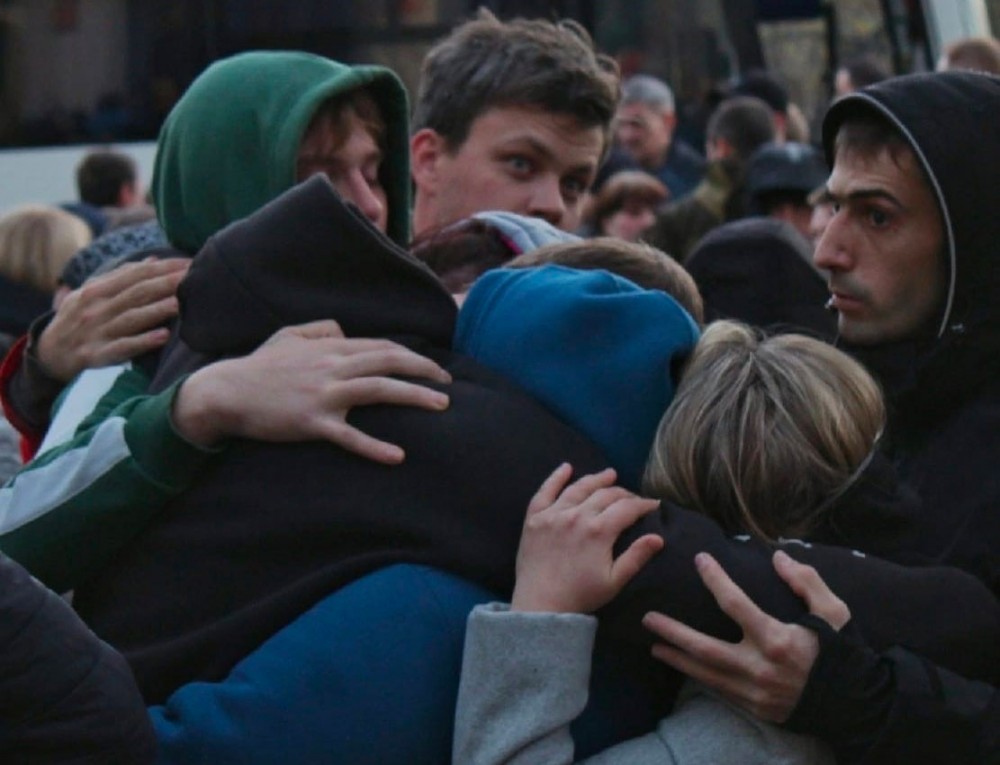 Young people from Kandalaksha going to war. Photo: vk.com/iprosolenko
Young people from Kandalaksha going to war. Photo: vk.com/iprosolenko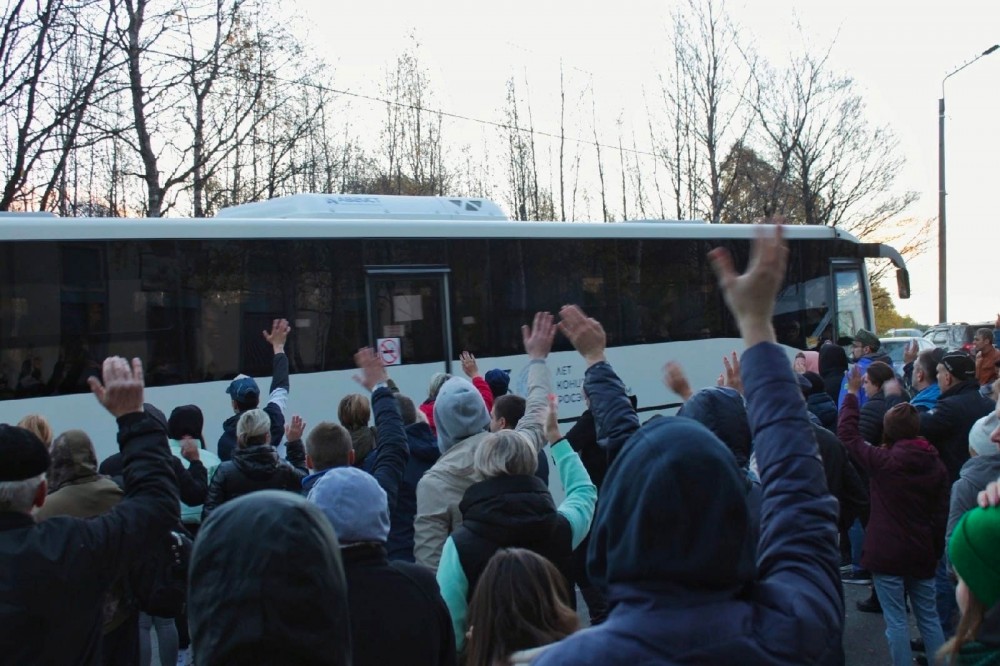 Friends and relatives say farewell to drafted men from Kandalaksha, Murmansk region. Photo: vk.com/iprosolenko
Friends and relatives say farewell to drafted men from Kandalaksha, Murmansk region. Photo: vk.com/iprosolenko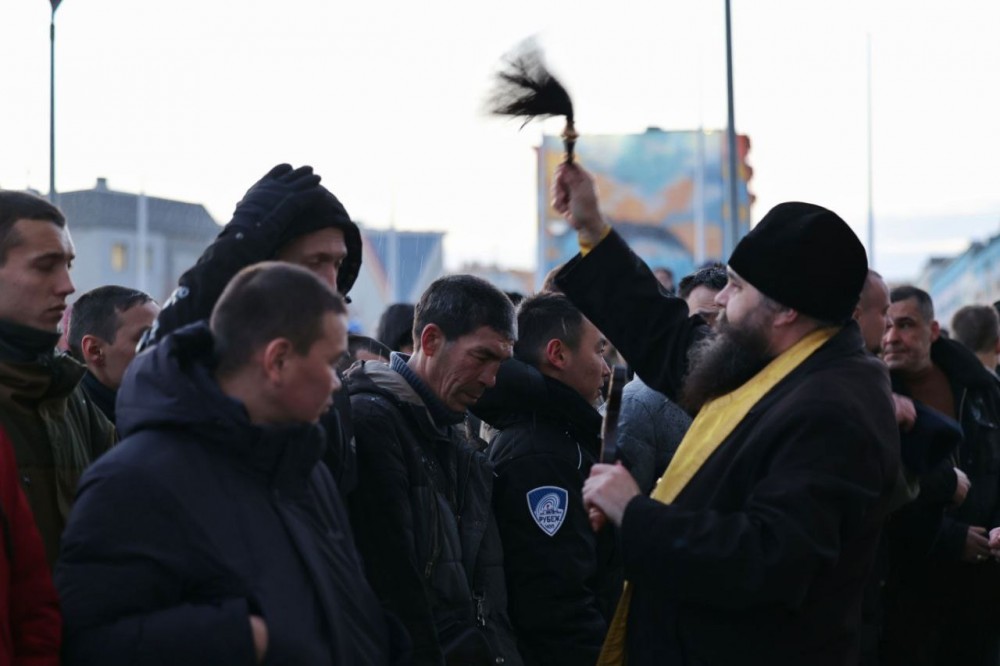 Mobilization in Chukotka. Photo: Governor Roman Kopin on Telegram
Mobilization in Chukotka. Photo: Governor Roman Kopin on Telegram Mobilization in Chukotka. Photo: Governor Roman Kopin on Telegram
Mobilization in Chukotka. Photo: Governor Roman Kopin on Telegram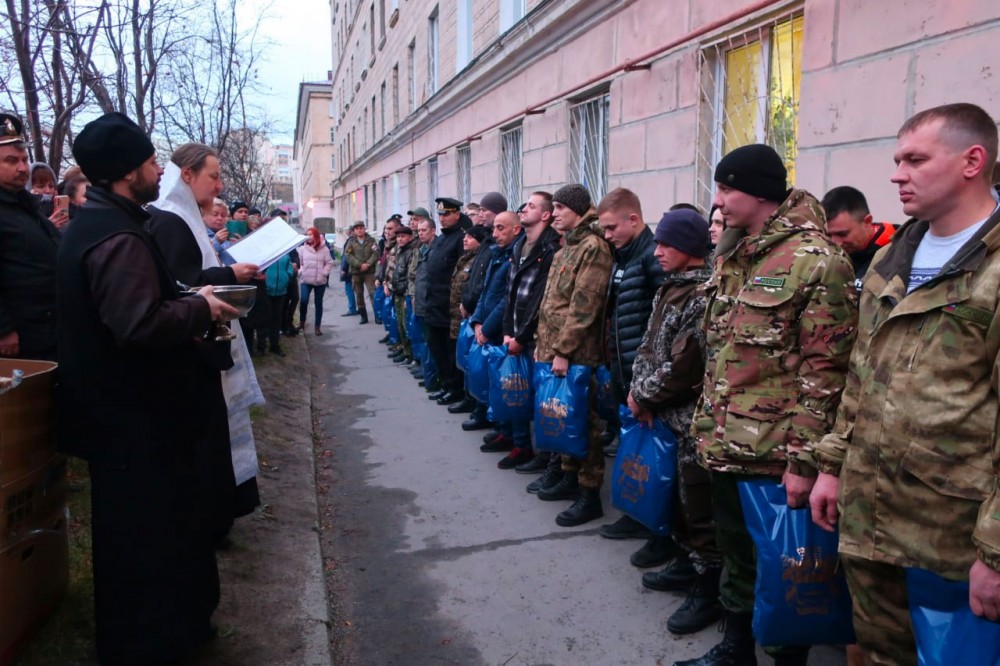 Blessing by the archbishop. Photo: church of Severomorsk
Blessing by the archbishop. Photo: church of Severomorsk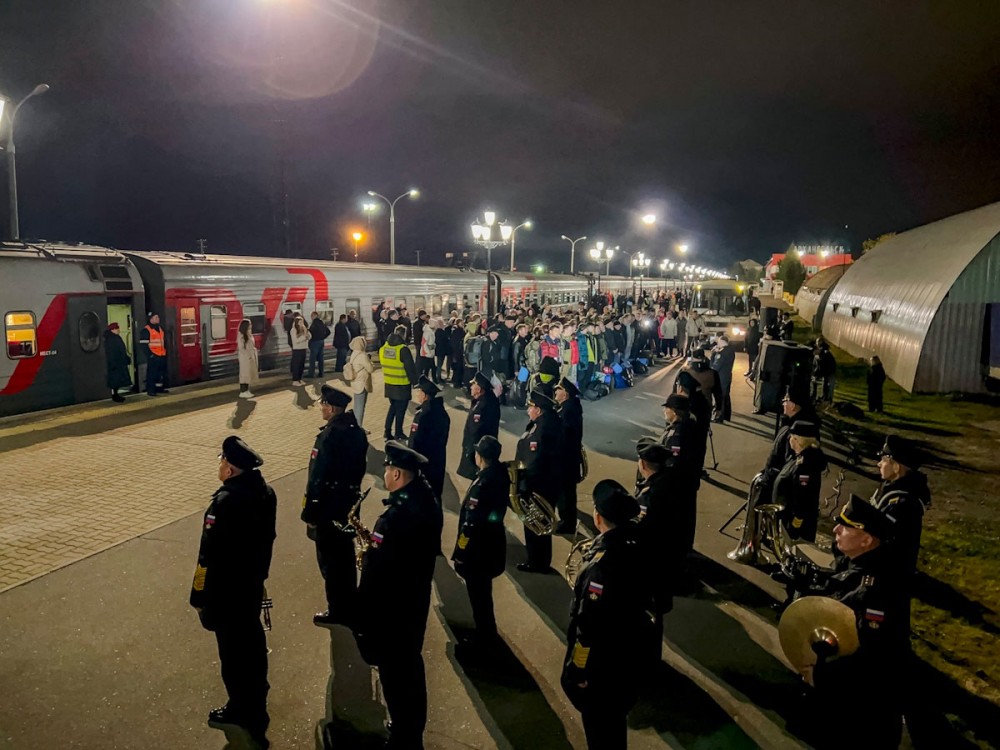 Marching band plays for departing reservists in Arkhangelsk. Photo: Governor Tsybulsky on VK
Marching band plays for departing reservists in Arkhangelsk. Photo: Governor Tsybulsky on VK
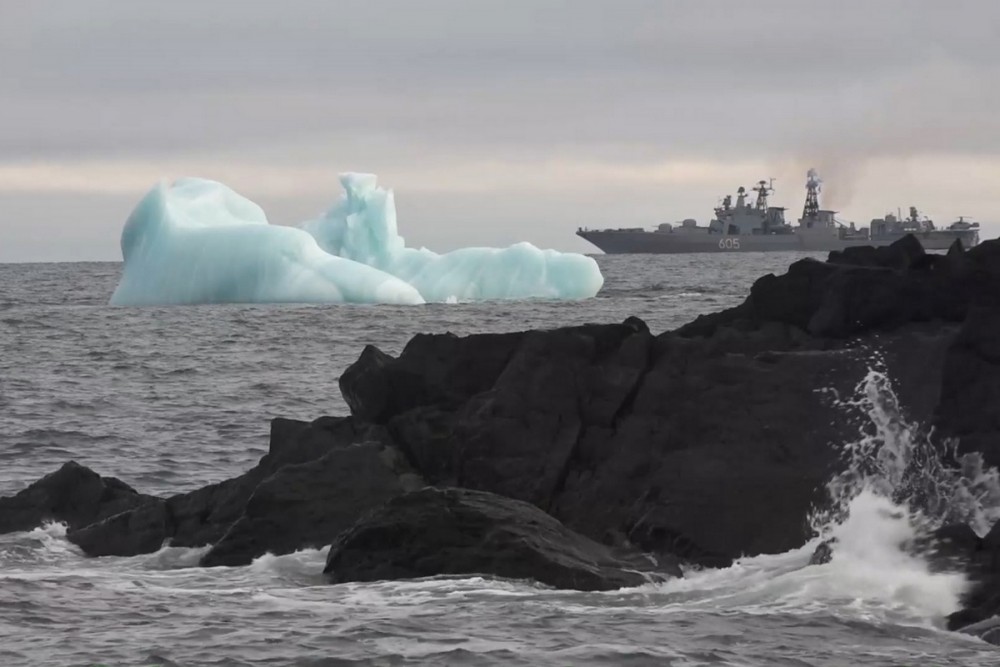 Photo: Northern Fleet press service
Photo: Northern Fleet press service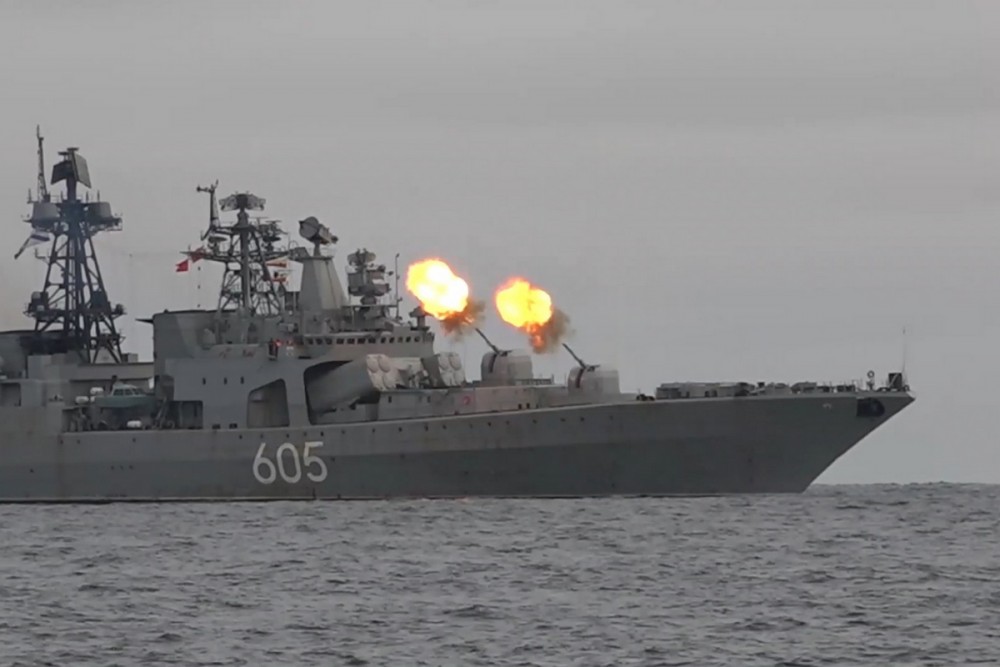 Photo: Northern Fleet press service
Photo: Northern Fleet press service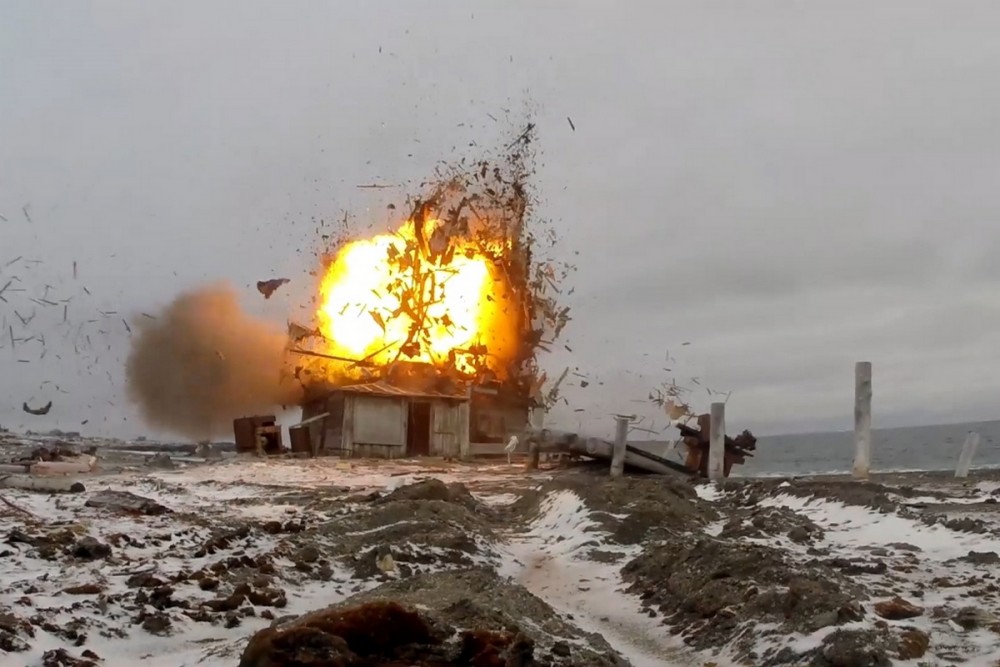 Photo: Northern Fleet press service
Photo: Northern Fleet press service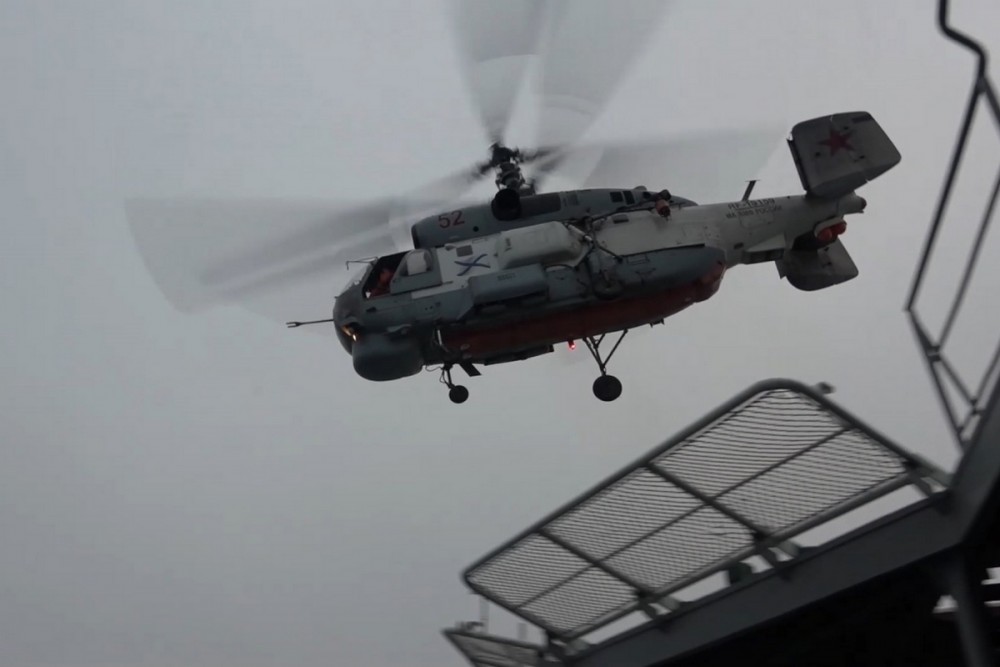 Photo: Northern Fleet press service
Photo: Northern Fleet press service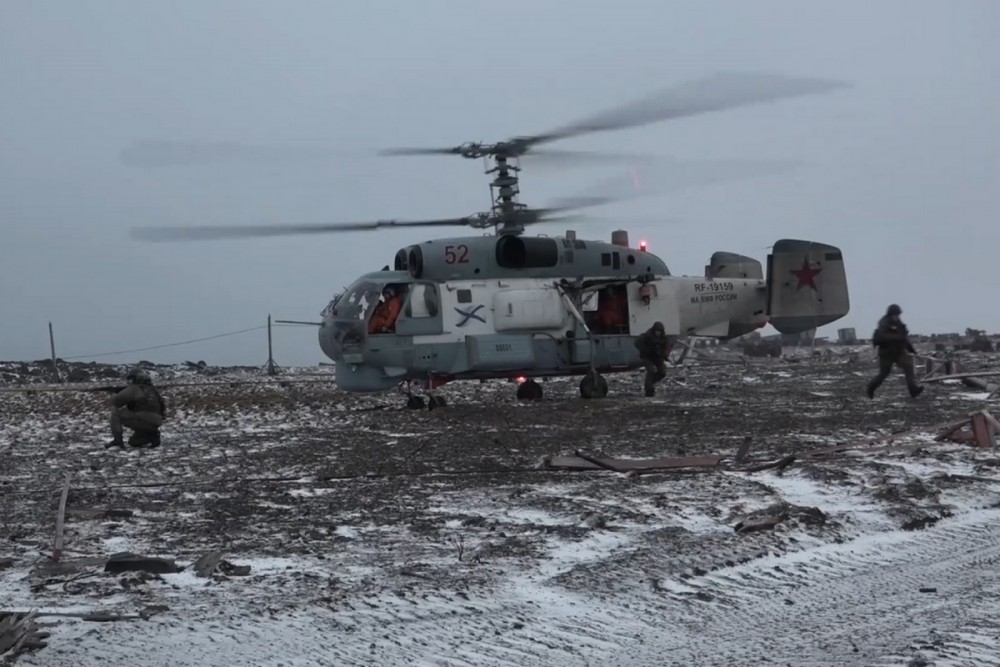 Photo: Northern Fleet press service
Photo: Northern Fleet press service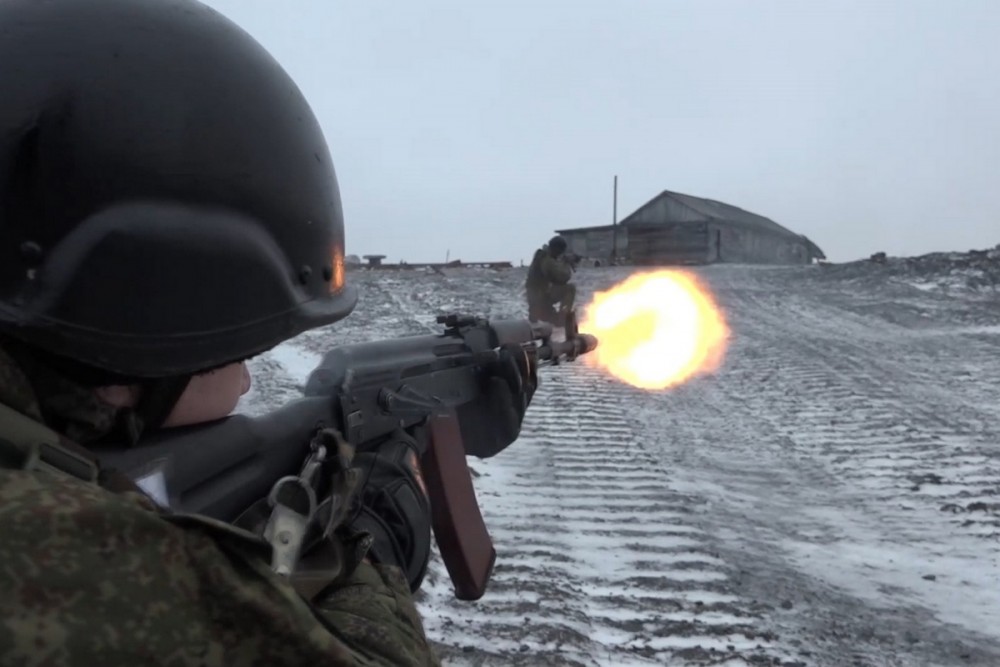 Photo: Northern Fleet press service
Photo: Northern Fleet press service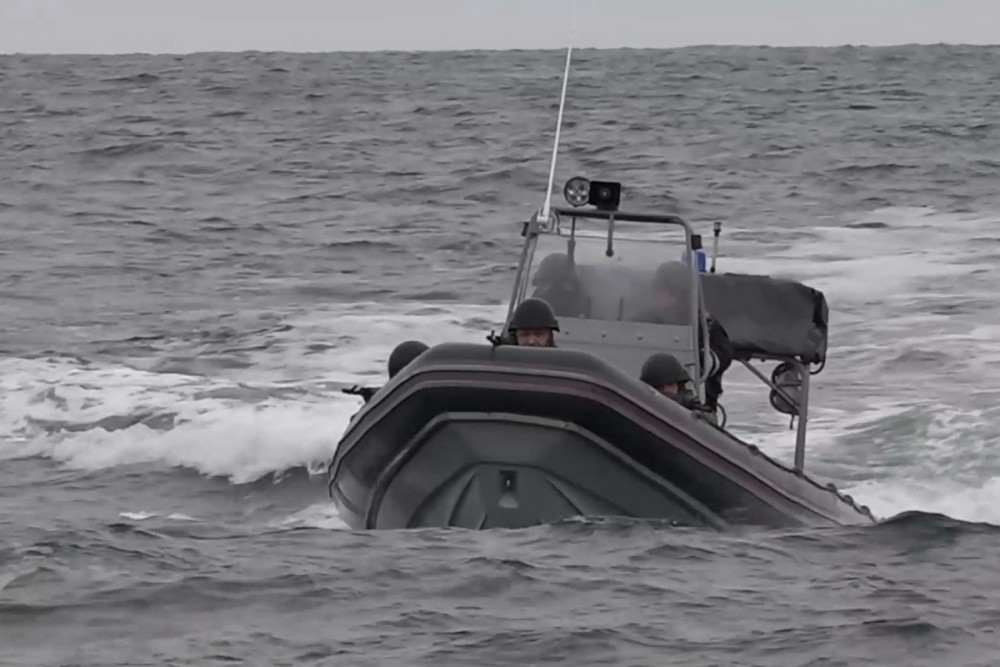 Photo: Northern Fleet press service
Photo: Northern Fleet press service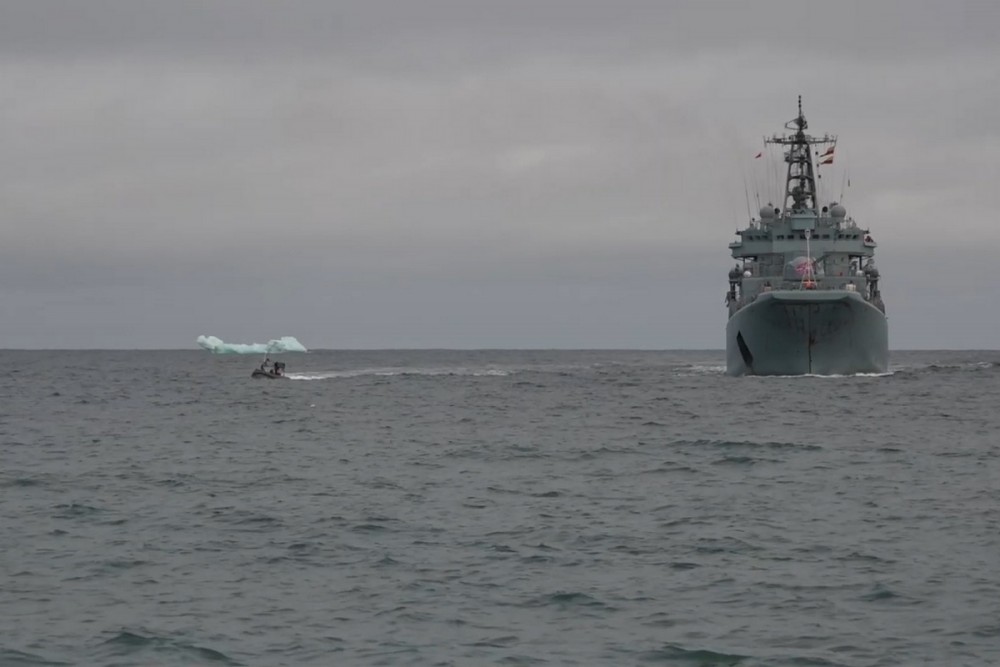 Photo: Northern Fleet press service
Photo: Northern Fleet press service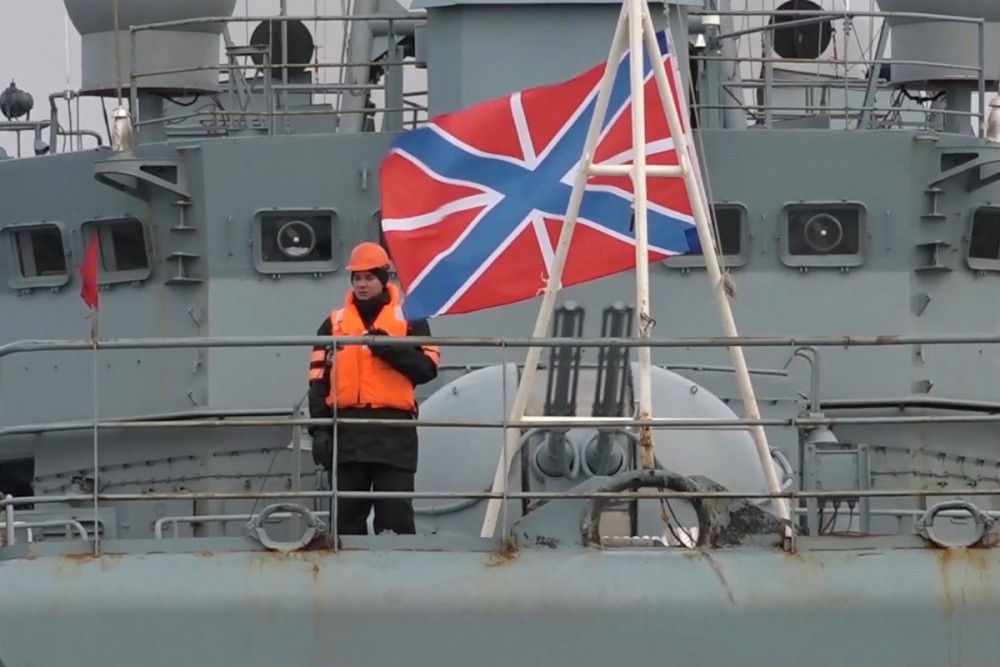 Photo: Northern Fleet press service
Photo: Northern Fleet press service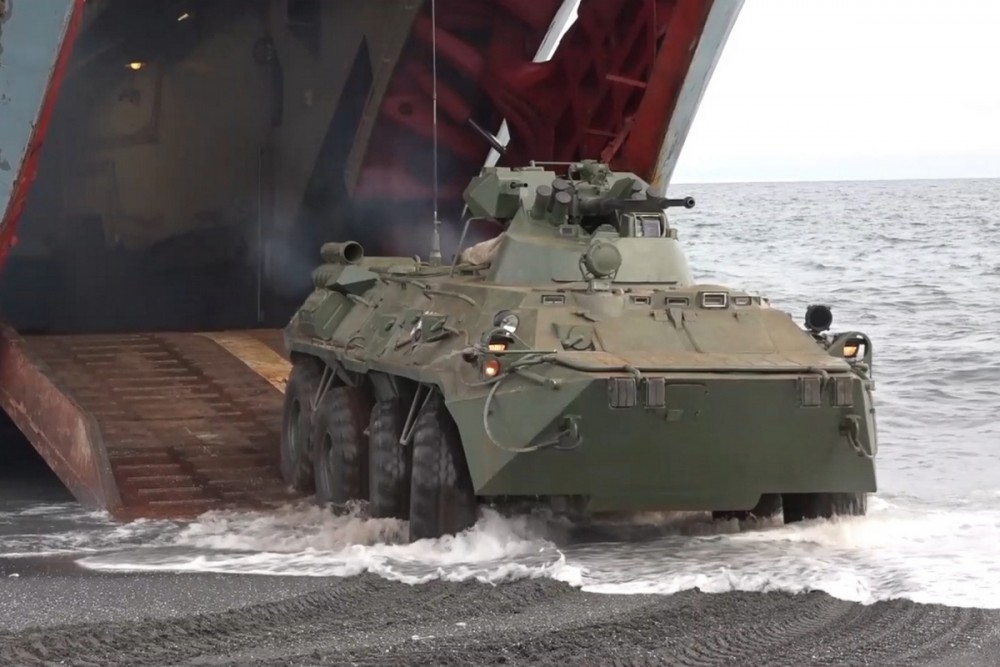 Photo: Northern Fleet press service
Photo: Northern Fleet press service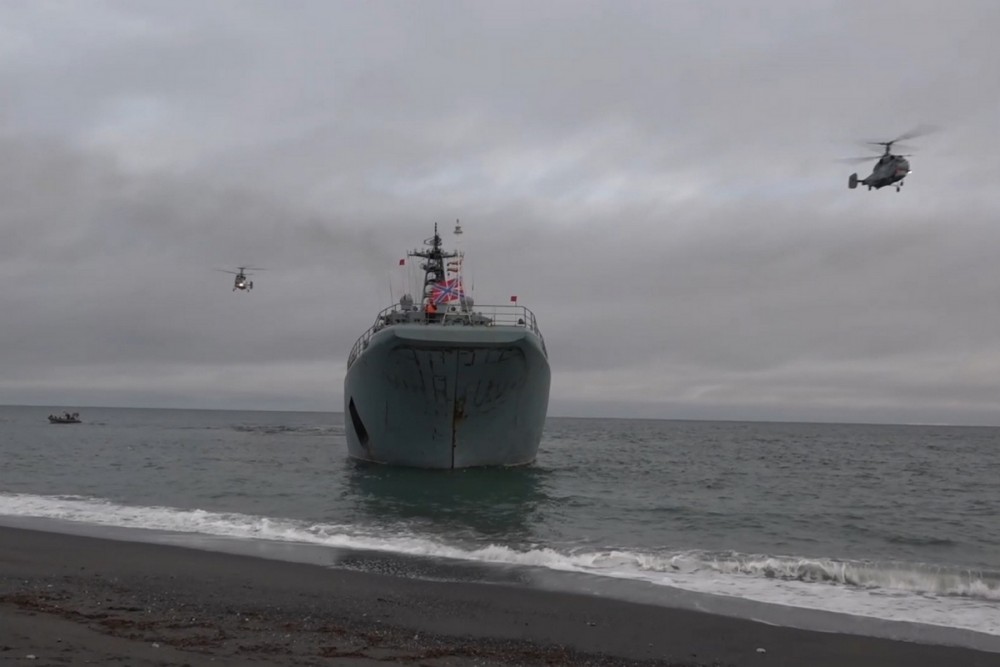 Photo: Northern Fleet press service
Photo: Northern Fleet press service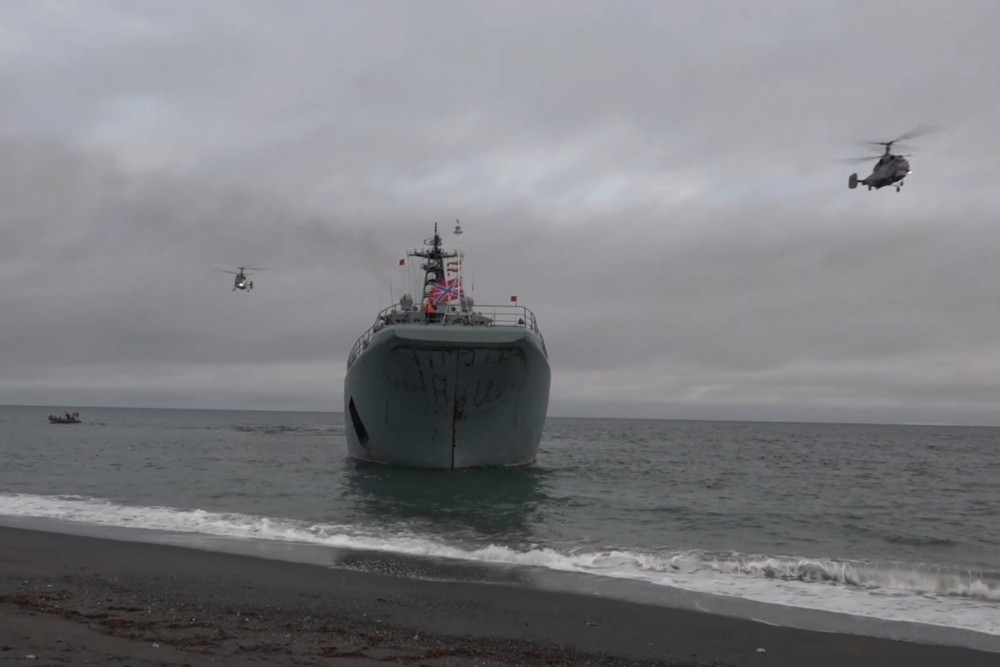 Photo: Northern Fleet press service
Photo: Northern Fleet press service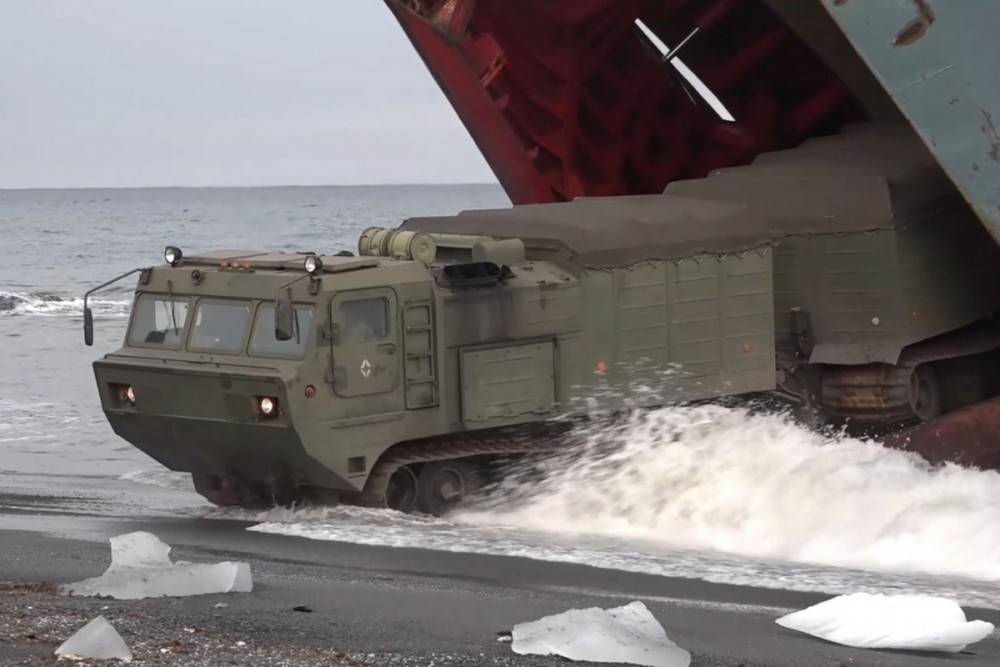 Photo: Northern Fleet press service
Photo: Northern Fleet press service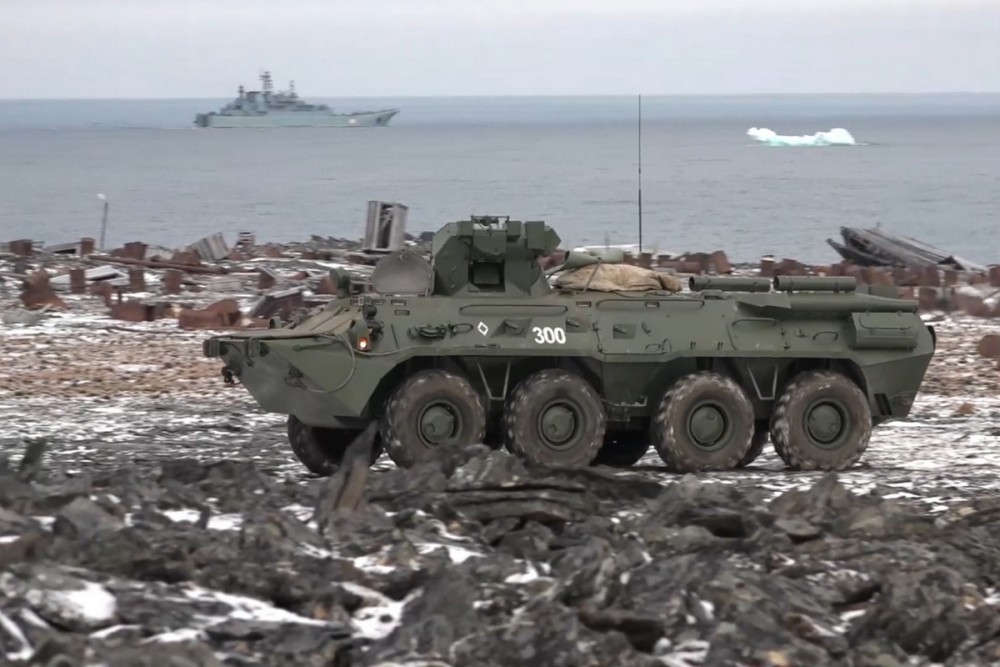 Photo: Northern Fleet press service
Photo: Northern Fleet press service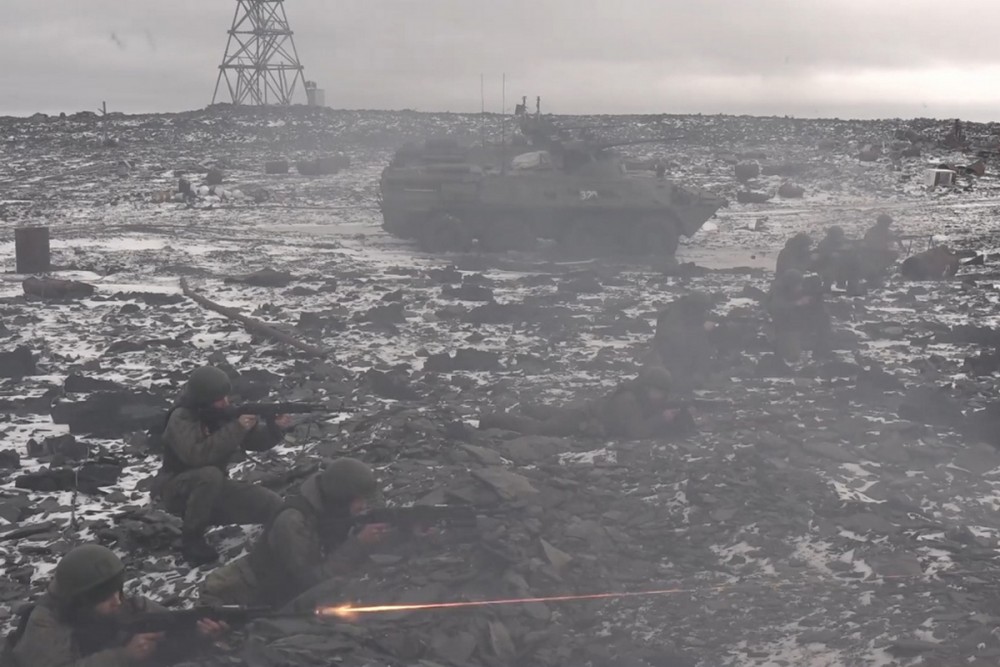 Photo: Northern Fleet press service
Photo: Northern Fleet press service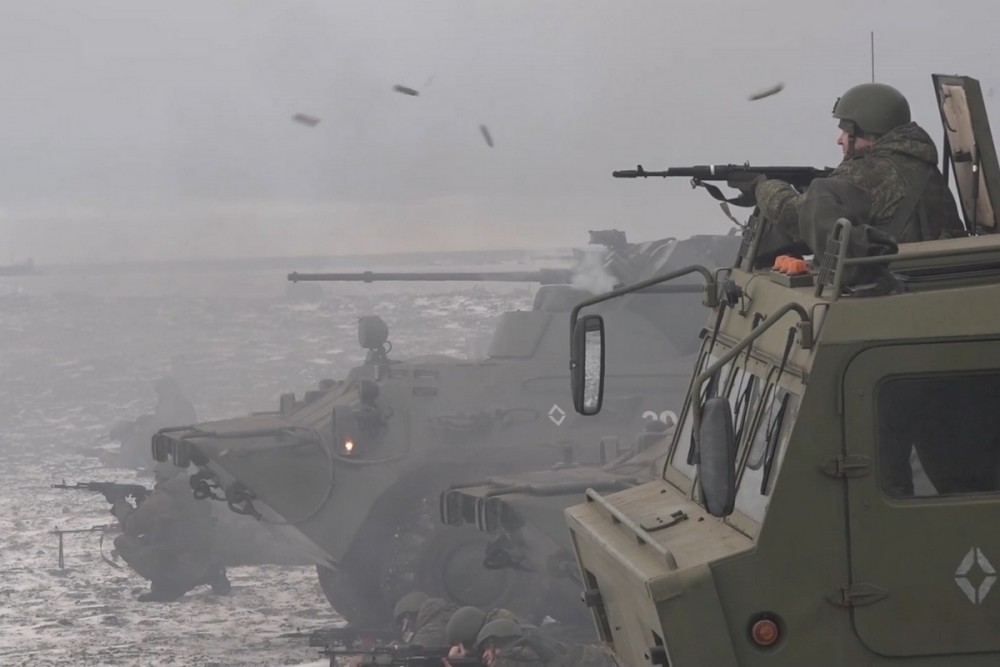 Photo: Northern Fleet press service
Photo: Northern Fleet press service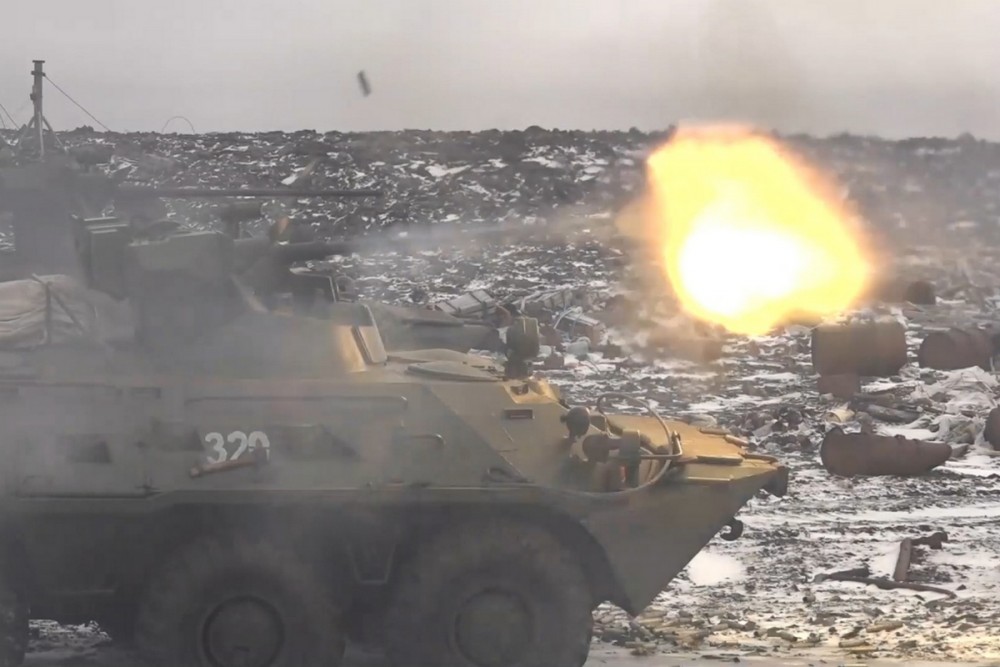 Photo: Northern Fleet press service
Photo: Northern Fleet press service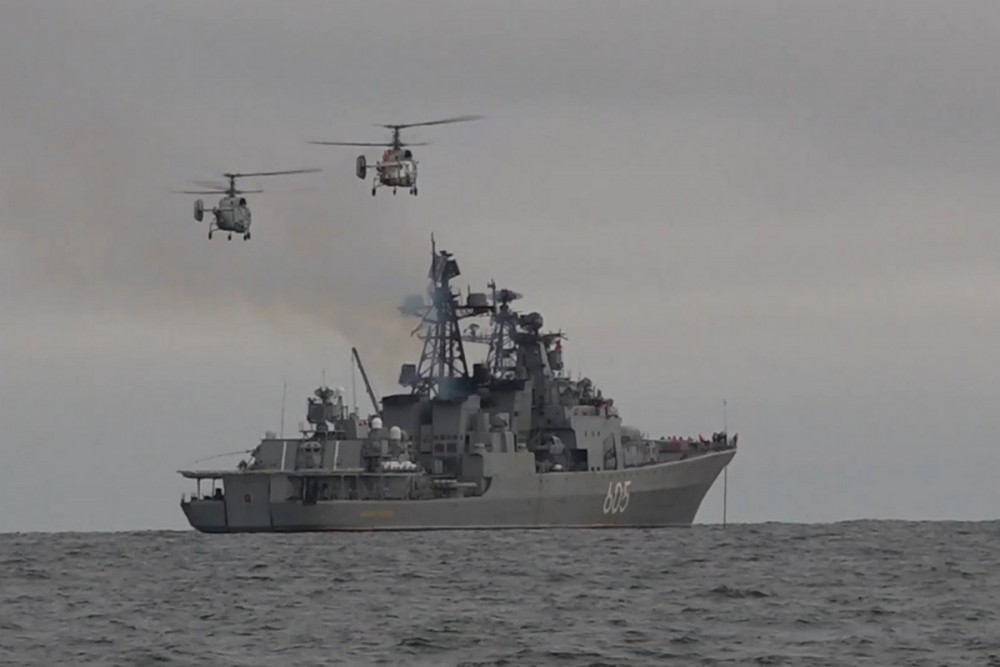 Photo: Northern Fleet press service
Photo: Northern Fleet press service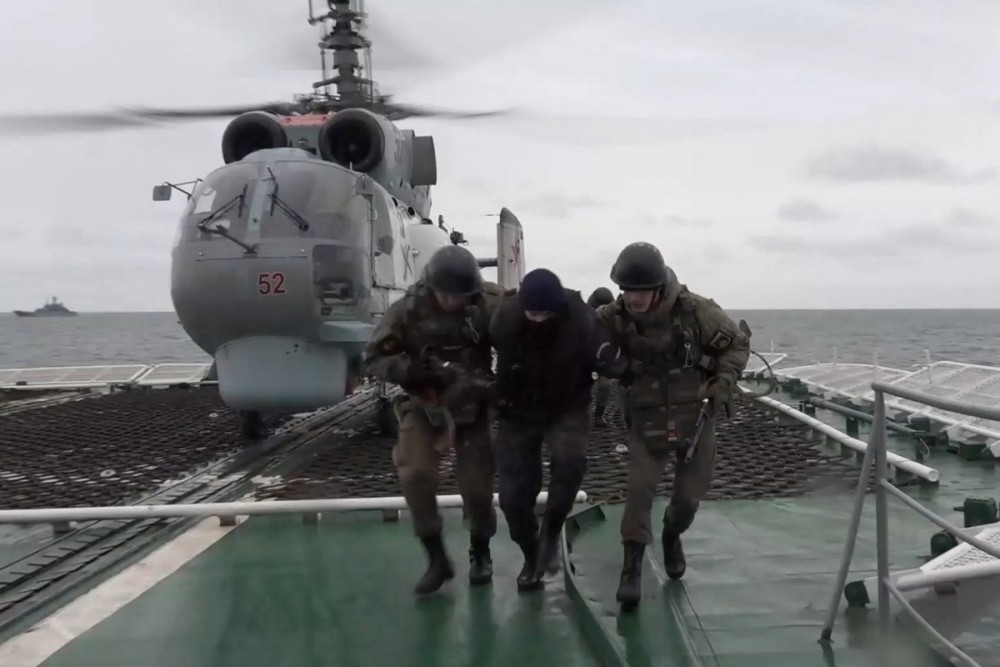 Photo: Northern Fleet press service
Photo: Northern Fleet press service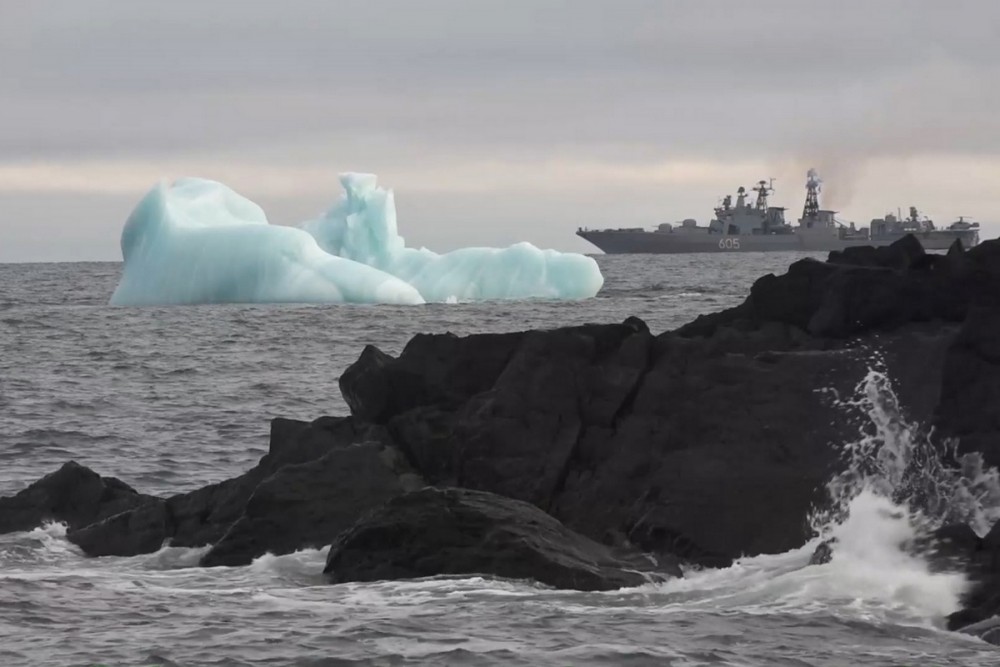 Photo: Northern Fleet press service
Photo: Northern Fleet press service
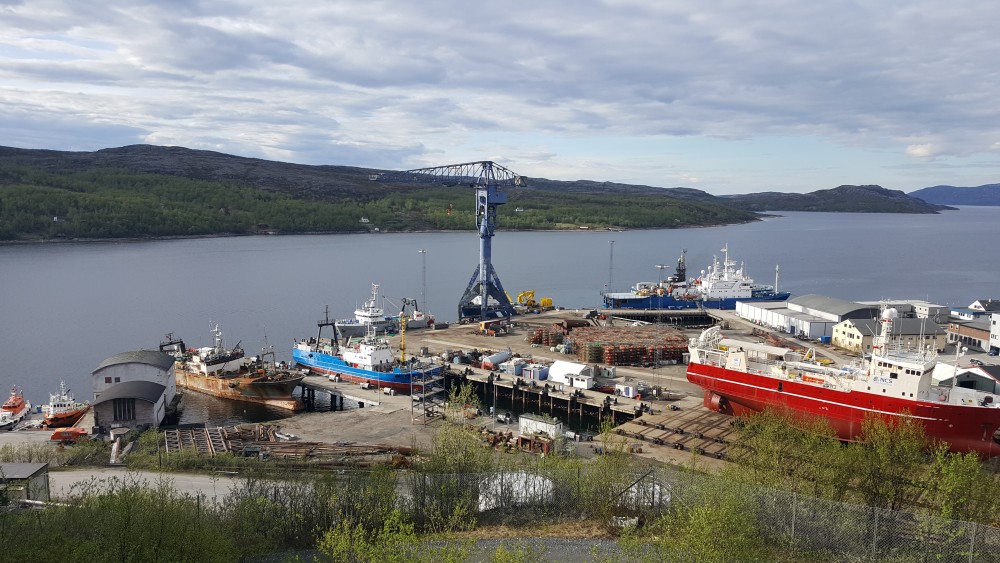 KIMEK shipyard and other port facilities in Kirkenes are frequently serving Russian fishing boats. Photo: Thomas Nilsen
KIMEK shipyard and other port facilities in Kirkenes are frequently serving Russian fishing boats. Photo: Thomas Nilsen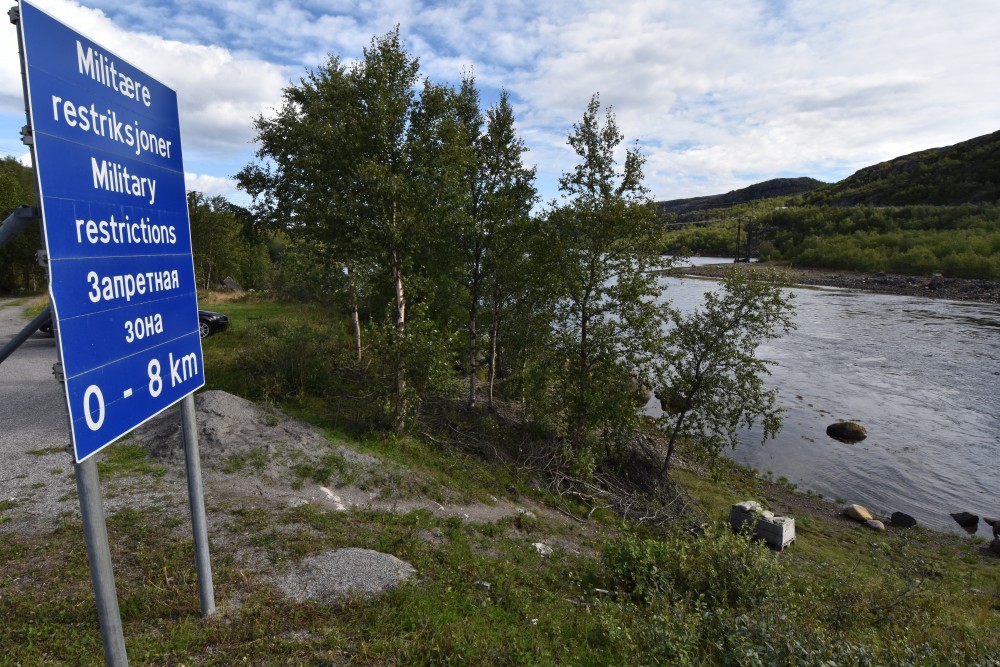 The sign, also with Russian text, informs travellers about entering the area of restriction in vicinity to the Garrison of Sør-Varanger. Photo: Thomas Nilsen
The sign, also with Russian text, informs travellers about entering the area of restriction in vicinity to the Garrison of Sør-Varanger. Photo: Thomas Nilsen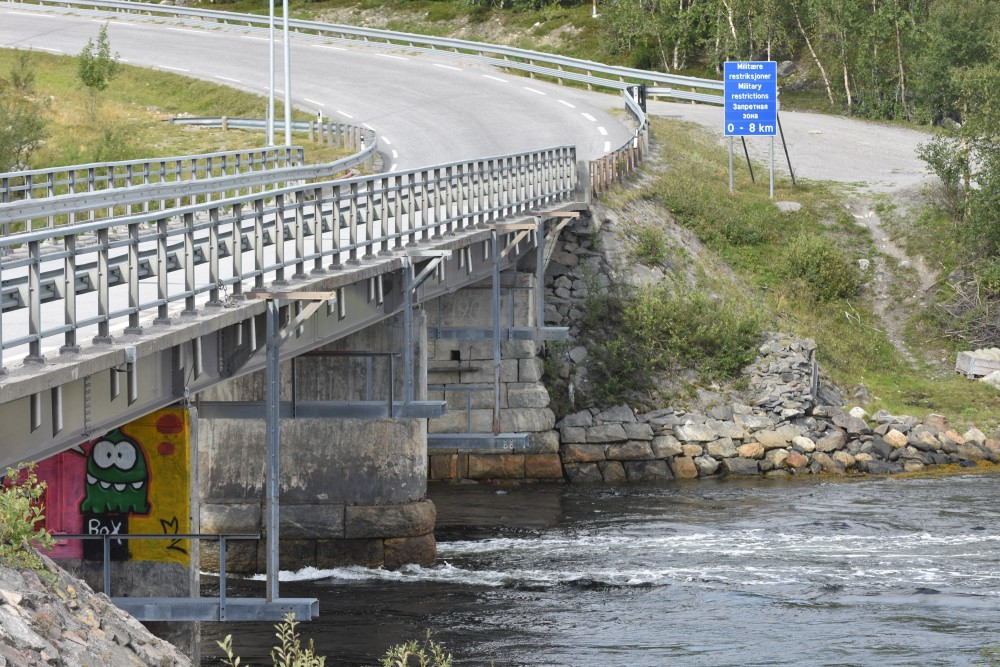 Strømmen bridge crosses over Langfjorden south of Kirkenes. The European Route E6 is the only road linking the border areas to Russia with the rest of Finnmark region in northernmost Norway. Photo: Thomas Nilsen
Strømmen bridge crosses over Langfjorden south of Kirkenes. The European Route E6 is the only road linking the border areas to Russia with the rest of Finnmark region in northernmost Norway. Photo: Thomas Nilsen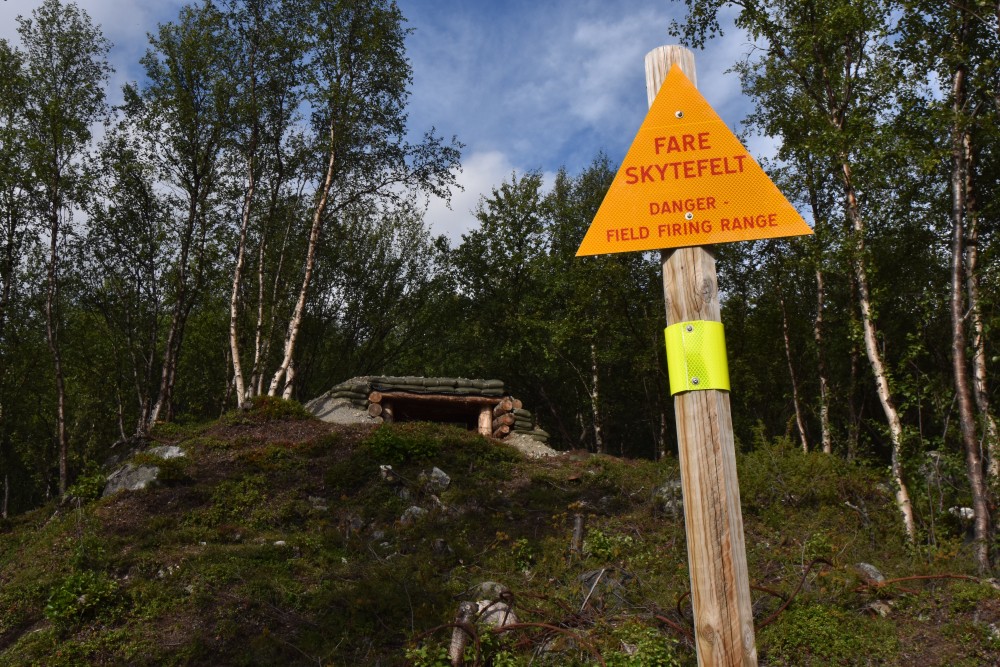 A sandbagged guard post is overlooking the Strømmen bridge not far from the shoreline. Photo: Thomas Nilsen
A sandbagged guard post is overlooking the Strømmen bridge not far from the shoreline. Photo: Thomas Nilsen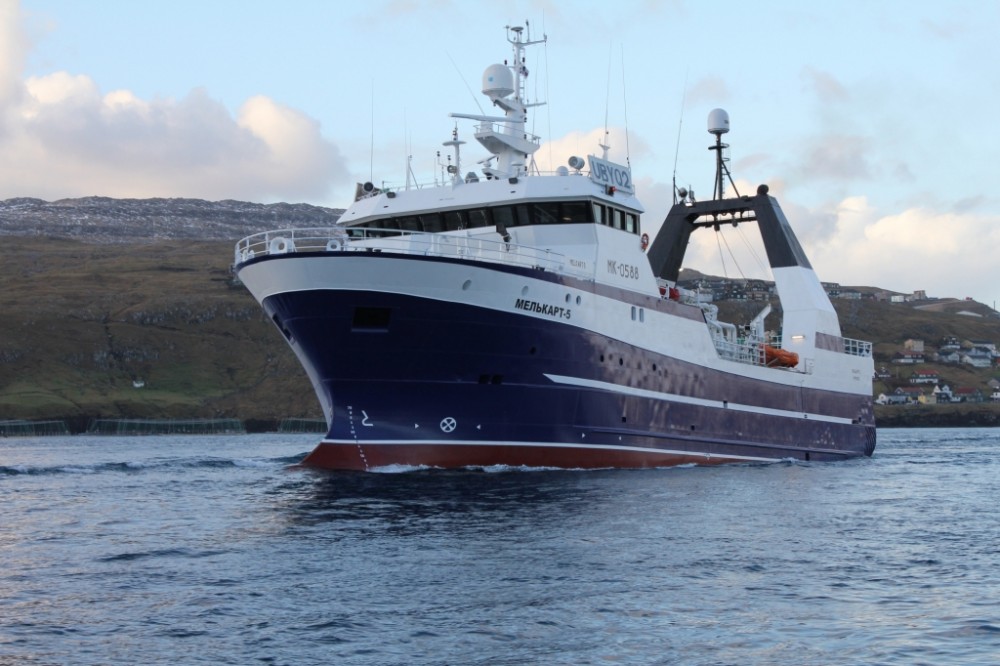 The "Melkart-5" is a Russian flagged trawler owned by Murman Seafood. Photo: Murman SeaFood
The "Melkart-5" is a Russian flagged trawler owned by Murman Seafood. Photo: Murman SeaFood
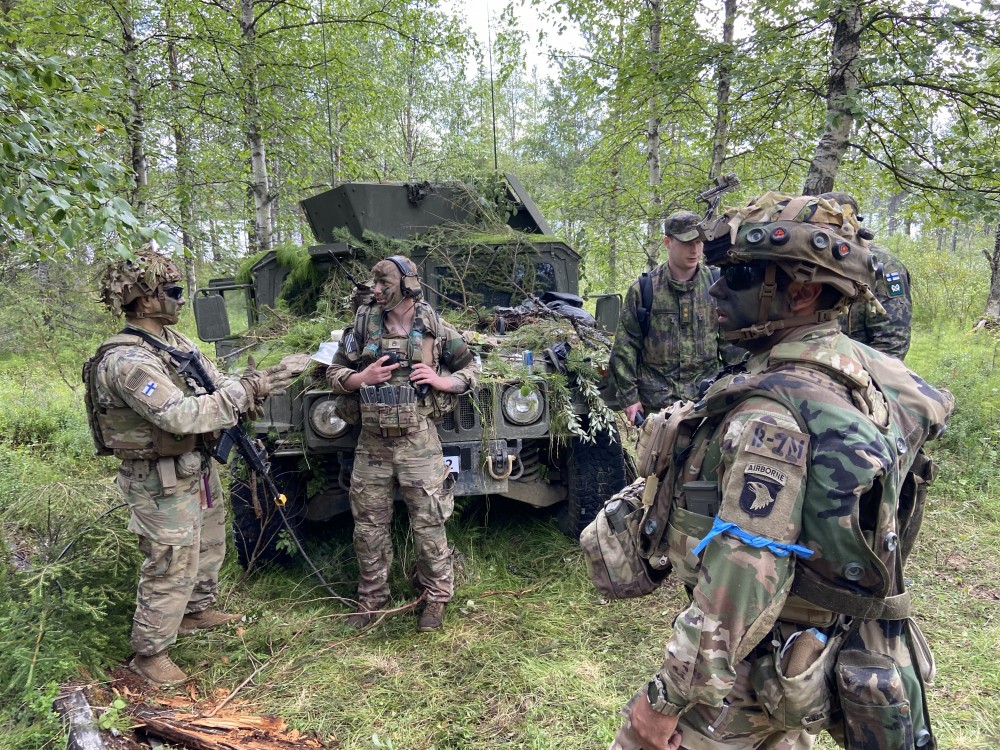 U.S. Soldiers assigned to “Viper Company”, 1st Battalion, 26th Infantry Regiment, 2nd Brigade Combat Team, 101st Airborne Division (Air Assault) brought military terrain vehicles to the exercise Ryske 2022. Photo: Thomas Nilsen
U.S. Soldiers assigned to “Viper Company”, 1st Battalion, 26th Infantry Regiment, 2nd Brigade Combat Team, 101st Airborne Division (Air Assault) brought military terrain vehicles to the exercise Ryske 2022. Photo: Thomas Nilsen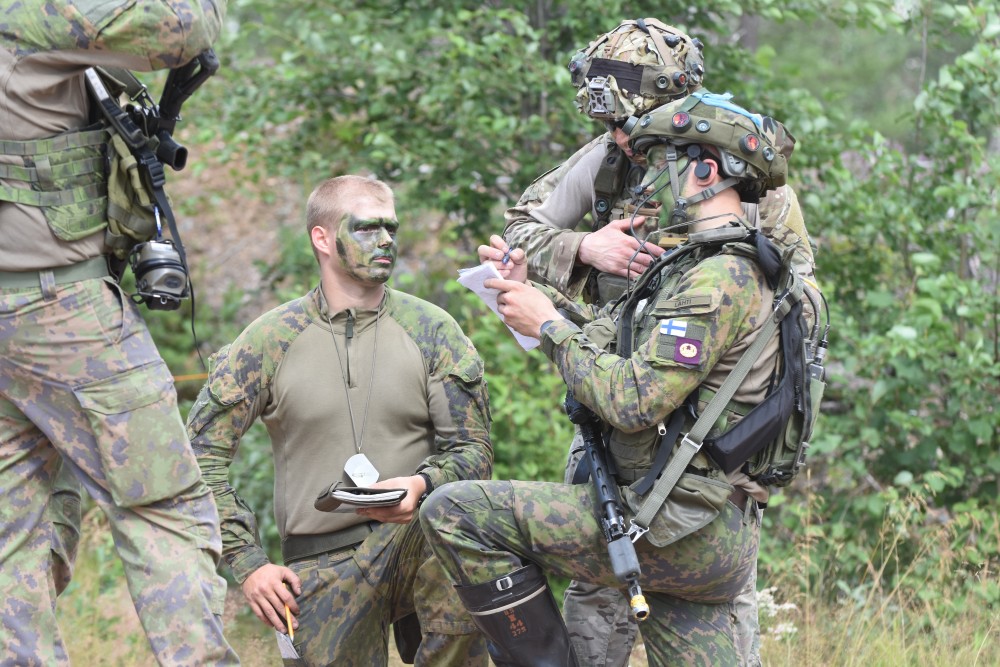 Finnish soldiers from the Jaeger Brigade in Sodankylä. Photo: Thomas Nilsen
Finnish soldiers from the Jaeger Brigade in Sodankylä. Photo: Thomas Nilsen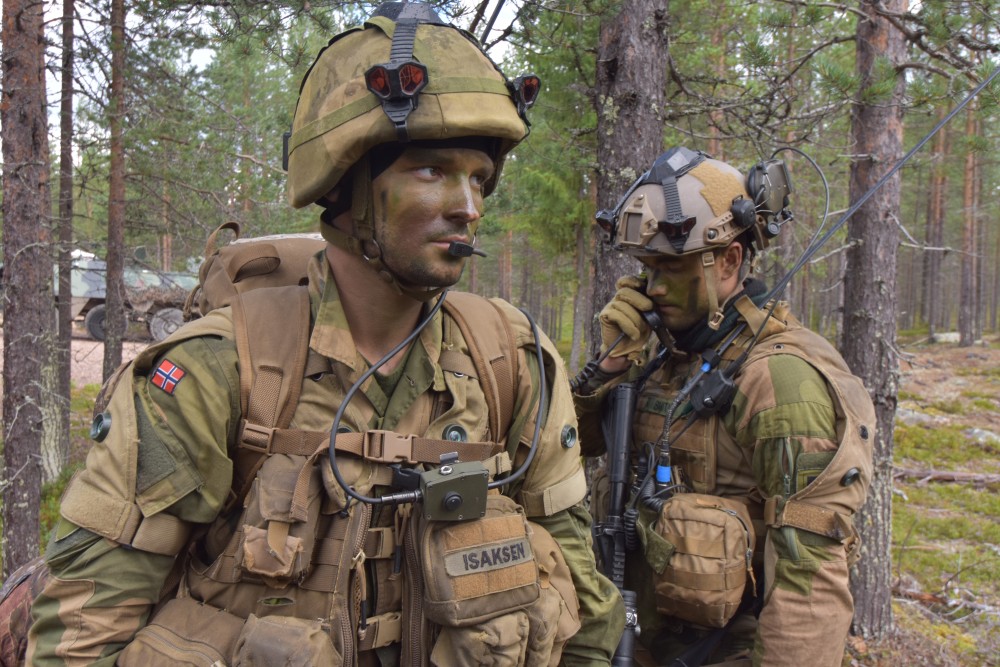 Conscript Adrian Isaksen and Lt. Anders Smith with the Porsanger battalion were in charge of radio communication during the exercise. Photo: Thomas Nilsen
Conscript Adrian Isaksen and Lt. Anders Smith with the Porsanger battalion were in charge of radio communication during the exercise. Photo: Thomas Nilsen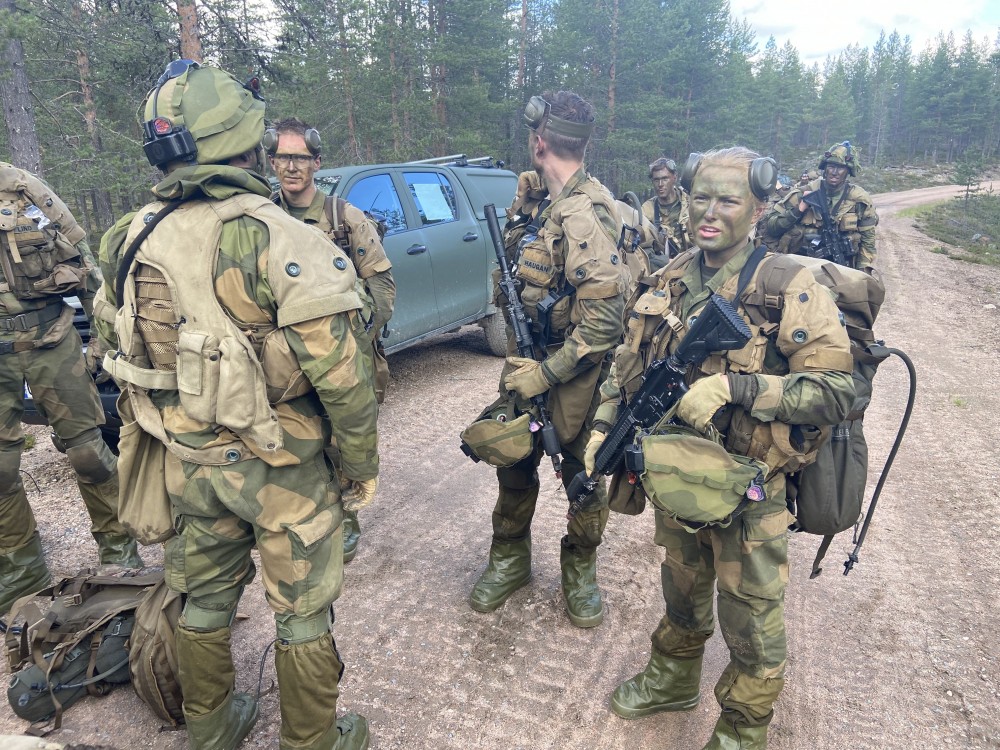 Some 150 soldiers from the Porsanger battalion participated in exercise Ryske 22. Photo: Thomas Nilsen
Some 150 soldiers from the Porsanger battalion participated in exercise Ryske 22. Photo: Thomas Nilsen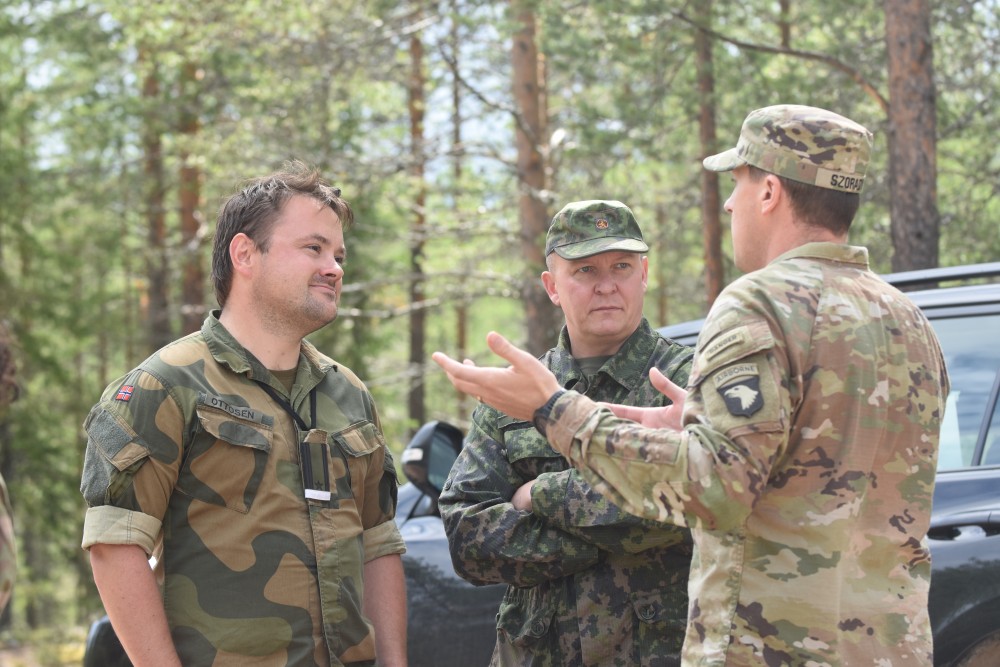 Three countries, three commanders, discussing the progress of exercise Ryske at the Rovajärvi artillery training ground in northern Finland. Photo: Thomas Nilsen
Three countries, three commanders, discussing the progress of exercise Ryske at the Rovajärvi artillery training ground in northern Finland. Photo: Thomas Nilsen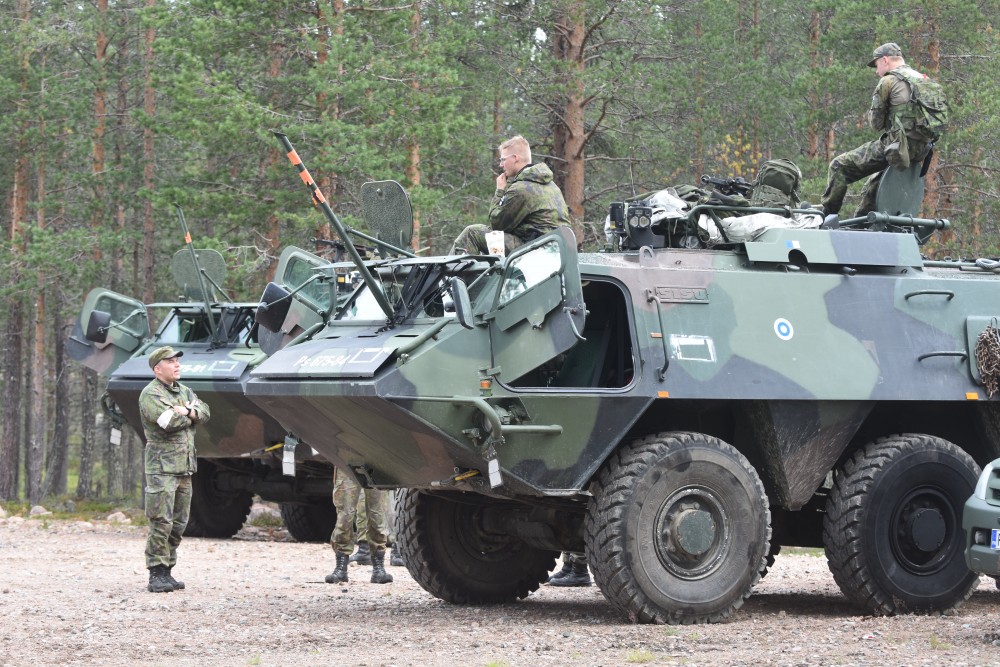 Finland's SISU armoured vehicles are used for transporting troops in the terrain. Photo: Thomas Nilsen
Finland's SISU armoured vehicles are used for transporting troops in the terrain. Photo: Thomas Nilsen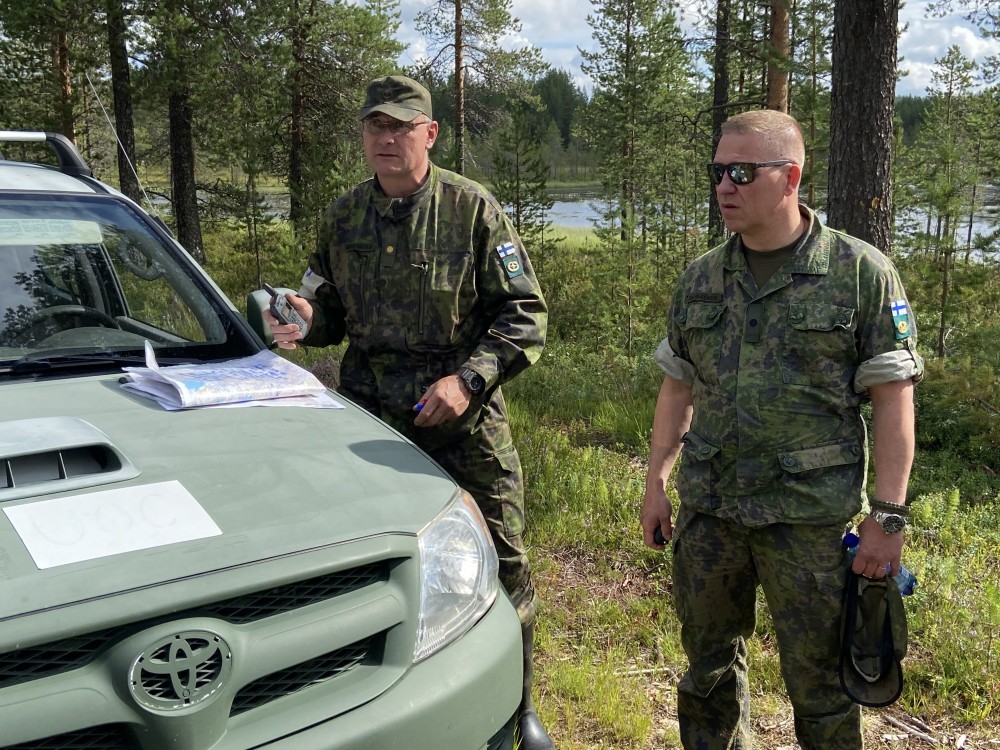 The Rovajärvi military training ground between Kemijärvi, Sodankylä and Rovaniemi in northern Finland is the largest for artillery exercises in Western Europe. Photo: Thomas Nilsen
The Rovajärvi military training ground between Kemijärvi, Sodankylä and Rovaniemi in northern Finland is the largest for artillery exercises in Western Europe. Photo: Thomas Nilsen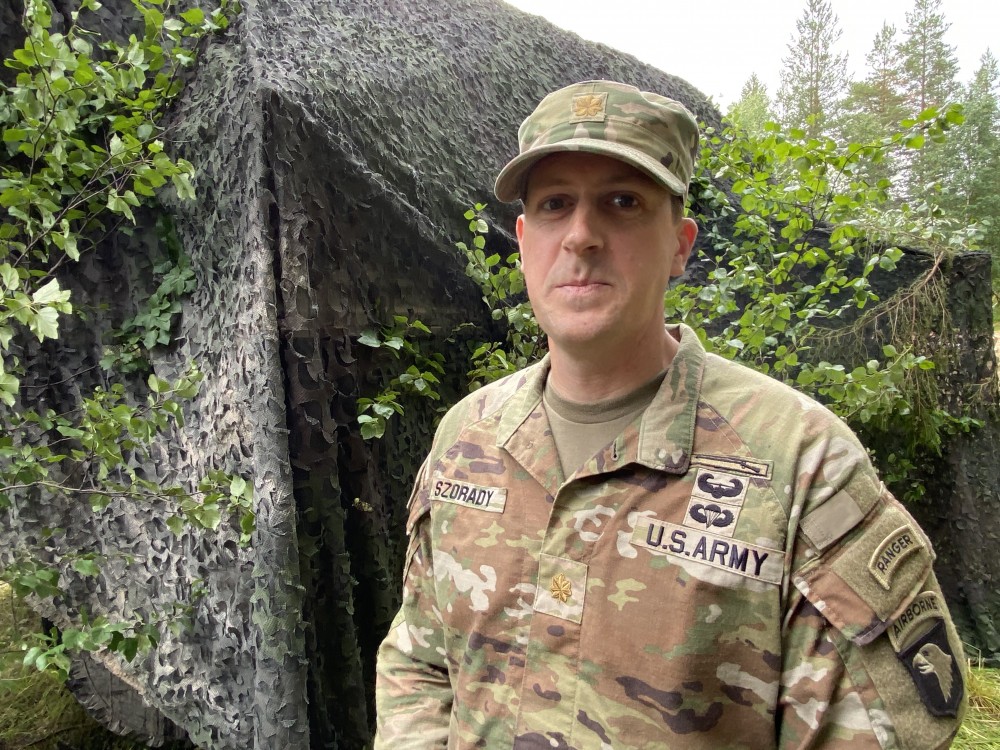 Commander Szorady led the U.S. Army airborne troopers participating in exercise Ryske 22. Photo: Thomas Nilsen
Commander Szorady led the U.S. Army airborne troopers participating in exercise Ryske 22. Photo: Thomas Nilsen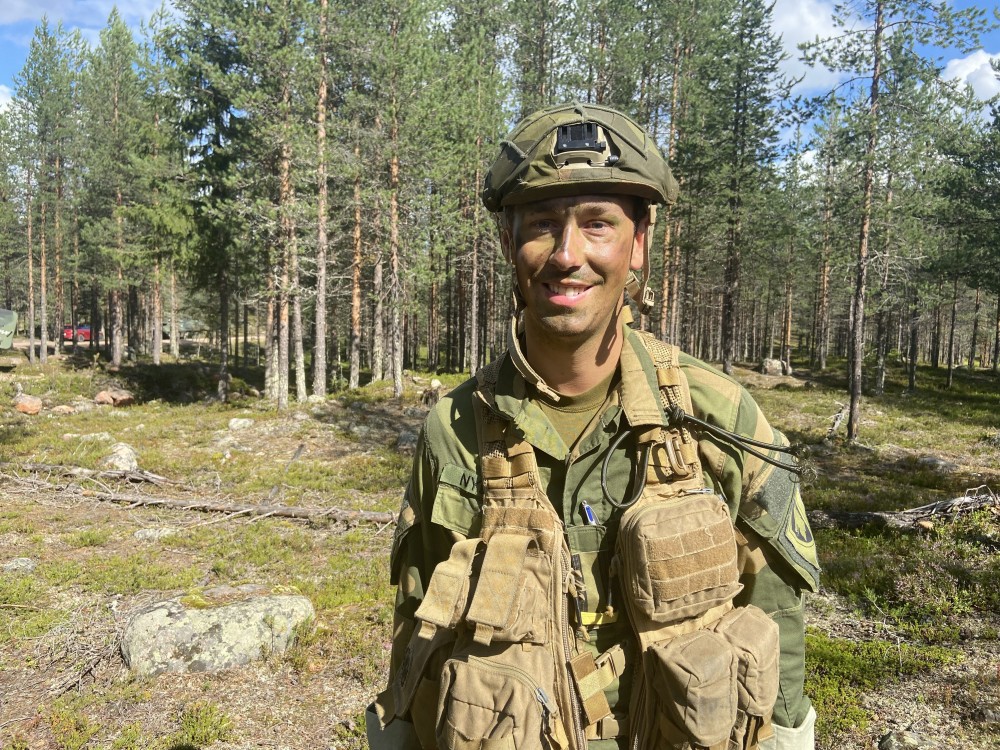 Company commander, Capt. Petter Nybøle Lie, with the Porsanger battalion. Photo: Thomas Nilsen
Company commander, Capt. Petter Nybøle Lie, with the Porsanger battalion. Photo: Thomas Nilsen Norwegian soldiers smiling after beating the U.S. troopers in one of the battles of exercise Ryske. Photo: Thomas Nilsen
Norwegian soldiers smiling after beating the U.S. troopers in one of the battles of exercise Ryske. Photo: Thomas Nilsen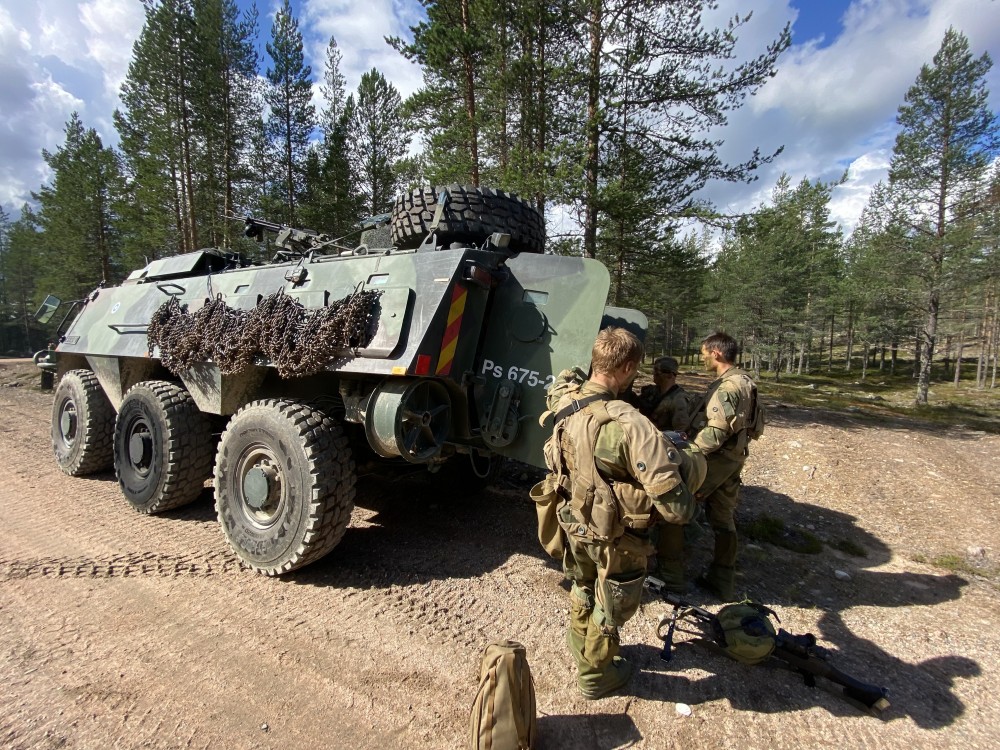 Photo: Thomas Nilsen
Photo: Thomas Nilsen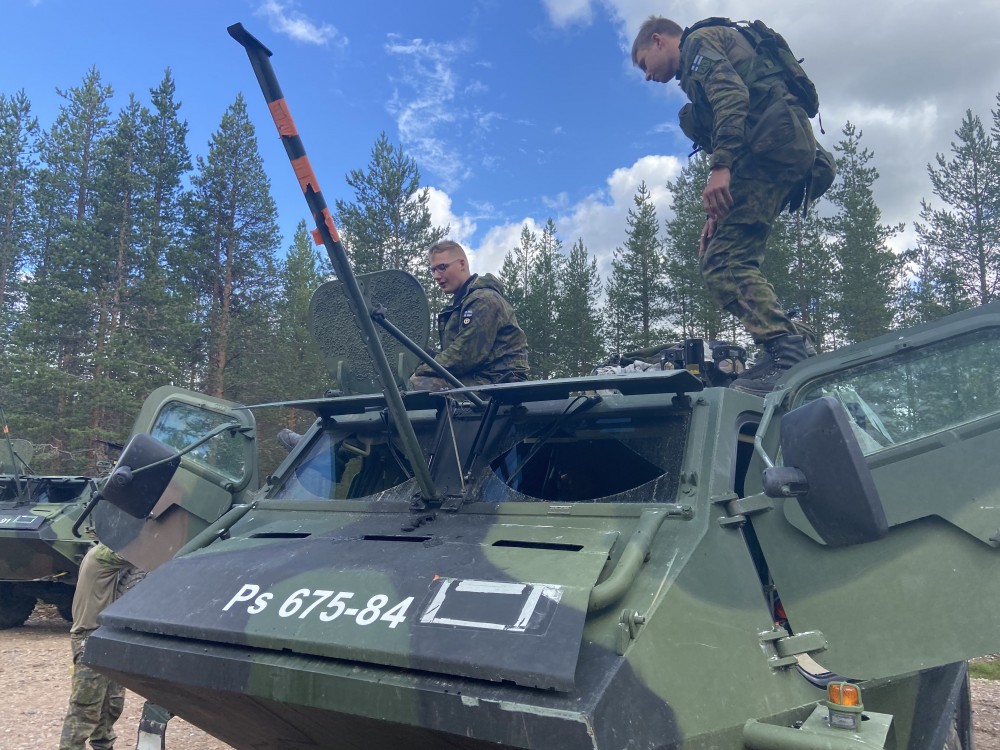 SISU XA (Patria Pasi) armoured personnel vehicle made in Finland. Photo: Thomas Nilsen
SISU XA (Patria Pasi) armoured personnel vehicle made in Finland. Photo: Thomas Nilsen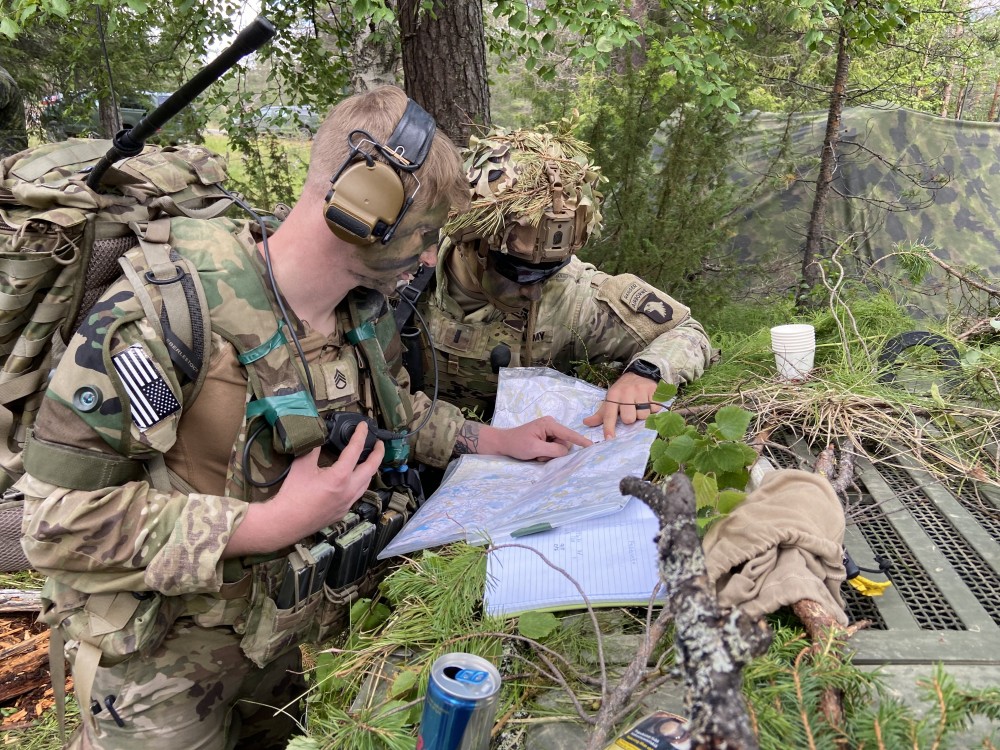 Two U.S. Army soldiers studying the map of the exercise area west of Kemijärvi. Photo: Thomas Nilsen
Two U.S. Army soldiers studying the map of the exercise area west of Kemijärvi. Photo: Thomas Nilsen
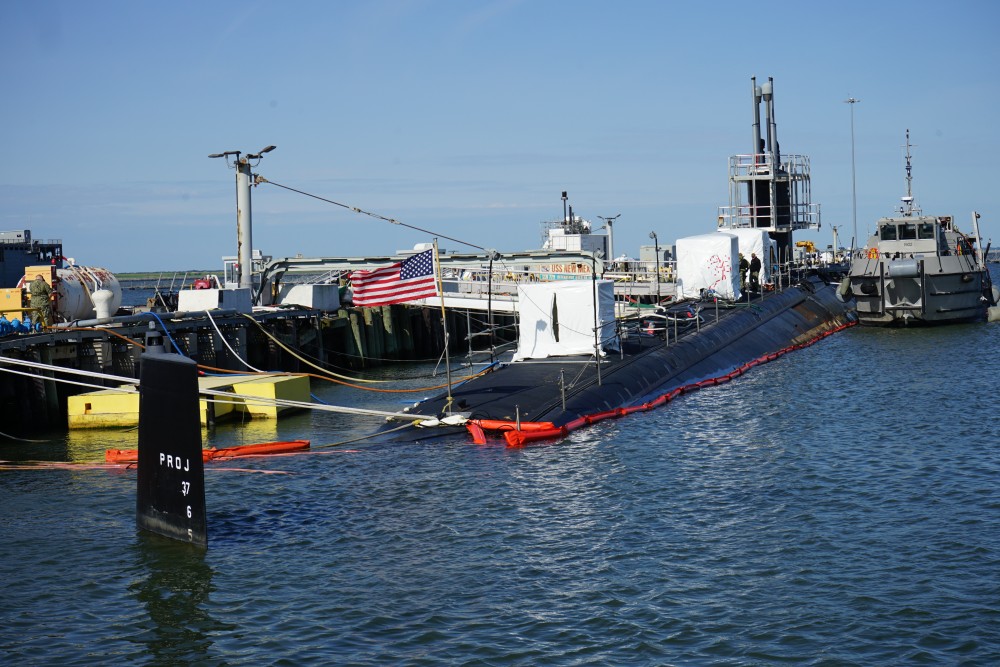 The «USS New Mexico» at Norfolk Naval Station. This Virginia class nuclear-powered fast-attack submarine made port call to Tromsø, northern Norway in May 2021. Photo: Thomas Nilsen
The «USS New Mexico» at Norfolk Naval Station. This Virginia class nuclear-powered fast-attack submarine made port call to Tromsø, northern Norway in May 2021. Photo: Thomas Nilsen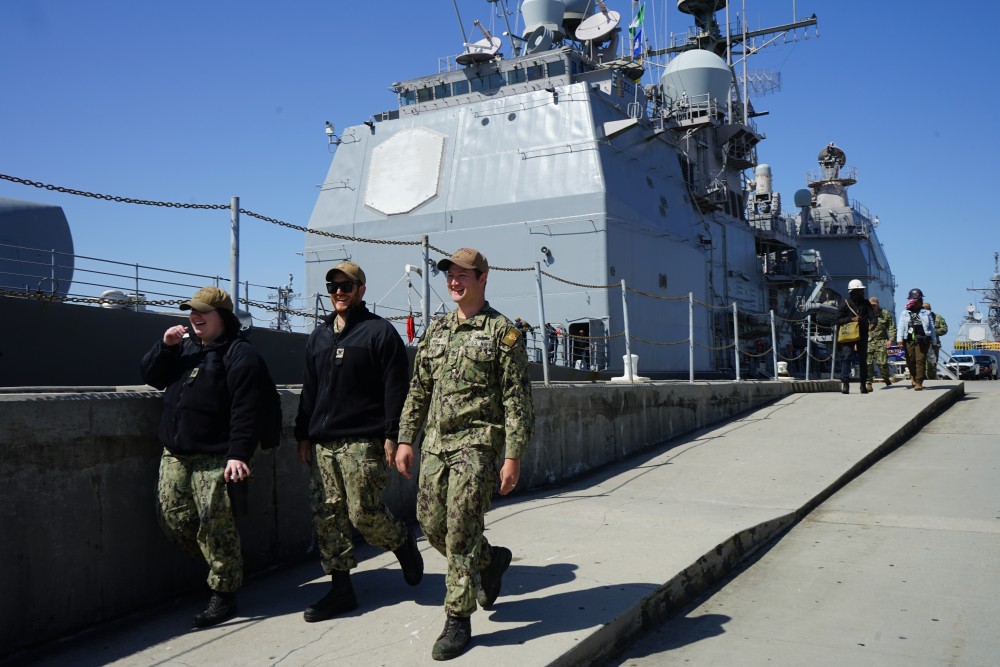 The «USS Vella Gulf» is a guided missile cruiser of the Ticonderoga class that normally sails together with aircraft carriers. Photo: Thomas Nilsen
The «USS Vella Gulf» is a guided missile cruiser of the Ticonderoga class that normally sails together with aircraft carriers. Photo: Thomas Nilsen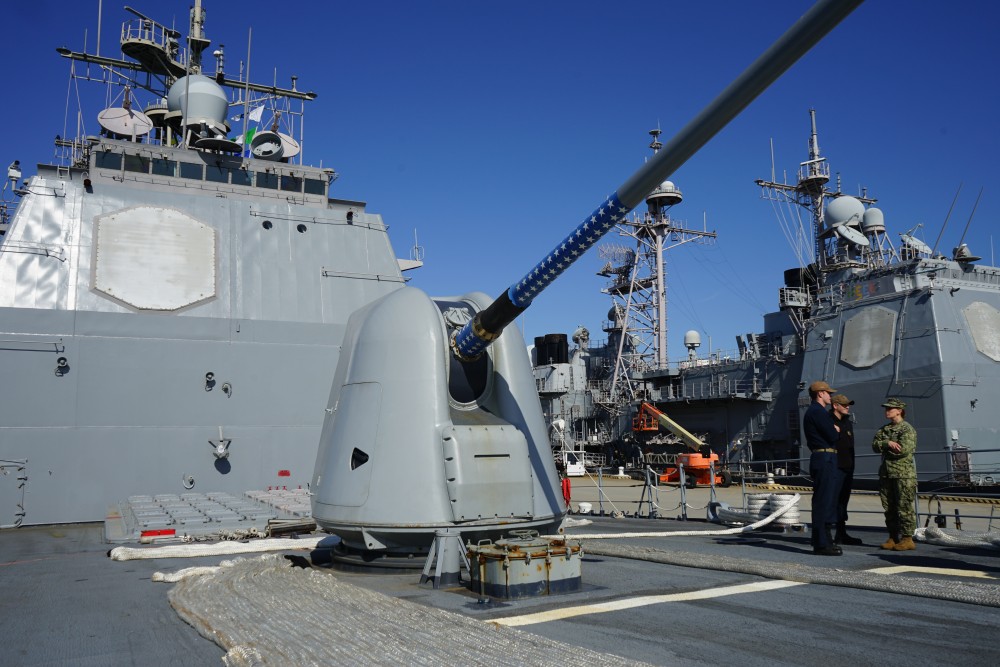 The «USS Vella Gulf» carries anti-submarine torpedoes and Tomahawk cruise missiles. It also has two lightweight guns like this one on the forward deck. Photo: Thomas Nilsen
The «USS Vella Gulf» carries anti-submarine torpedoes and Tomahawk cruise missiles. It also has two lightweight guns like this one on the forward deck. Photo: Thomas Nilsen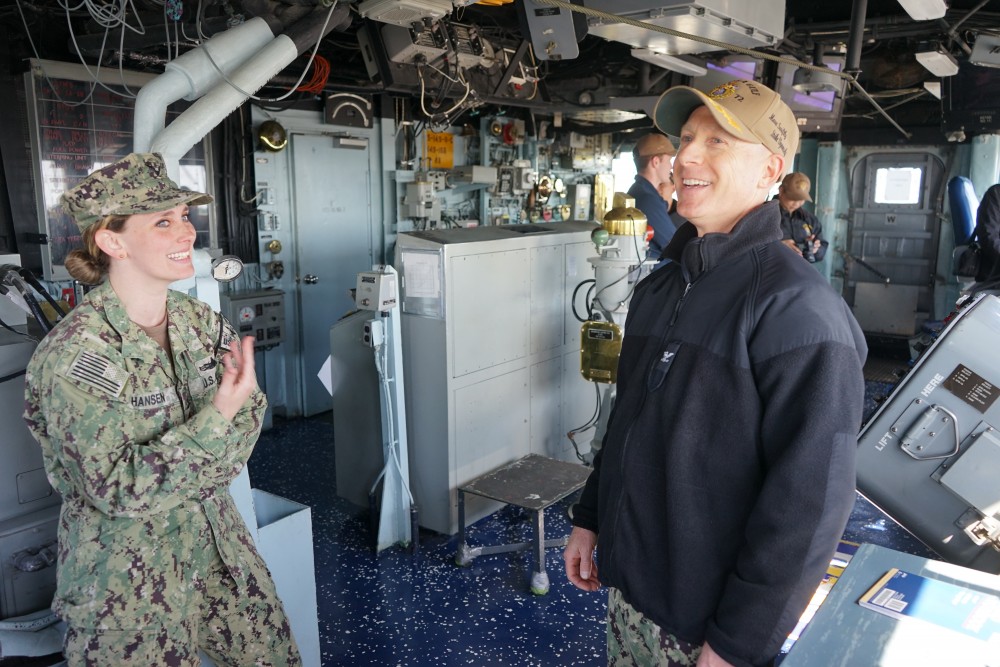 Capt. Michael Desmond (right) is Commanding Officer of «USS Vella Gulf». Photo: Thomas Nilsen
Capt. Michael Desmond (right) is Commanding Officer of «USS Vella Gulf». Photo: Thomas Nilsen NATO Headquarters for Supreme Allied Commander Transformation in Norfolk, Virginia. Photo: Thomas Nilsen
NATO Headquarters for Supreme Allied Commander Transformation in Norfolk, Virginia. Photo: Thomas Nilsen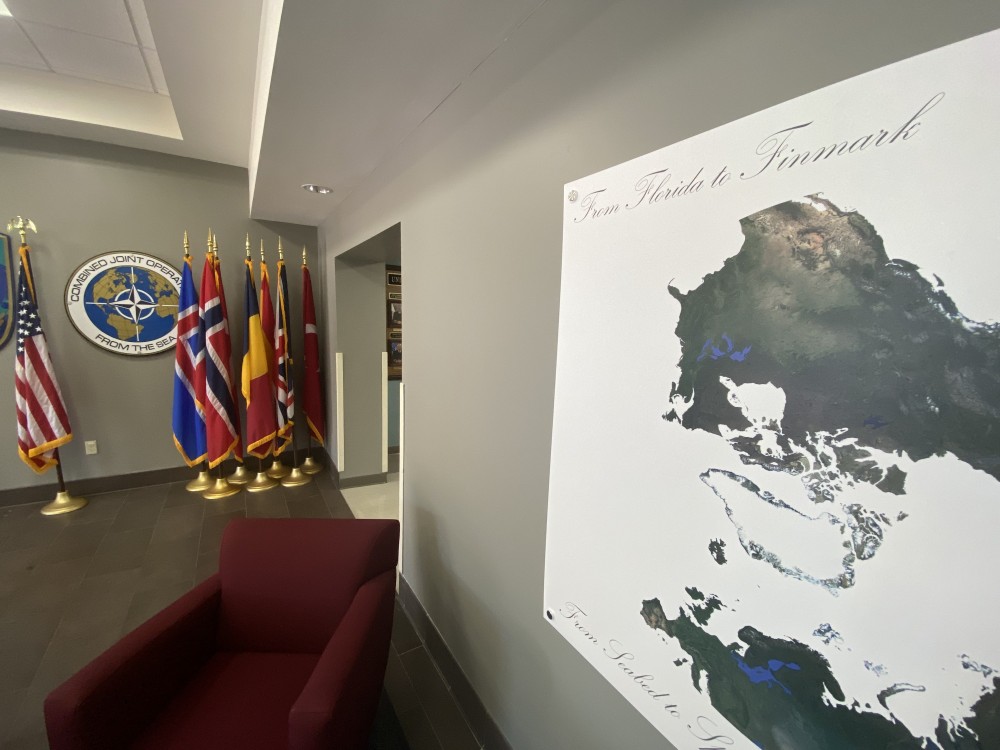 "From Florida to Finnmark - From Seabed to Space" reads the sign in the entrance hall to NATO's Joint Force Command Norfolk. Photo: Thomas Nilsen
"From Florida to Finnmark - From Seabed to Space" reads the sign in the entrance hall to NATO's Joint Force Command Norfolk. Photo: Thomas Nilsen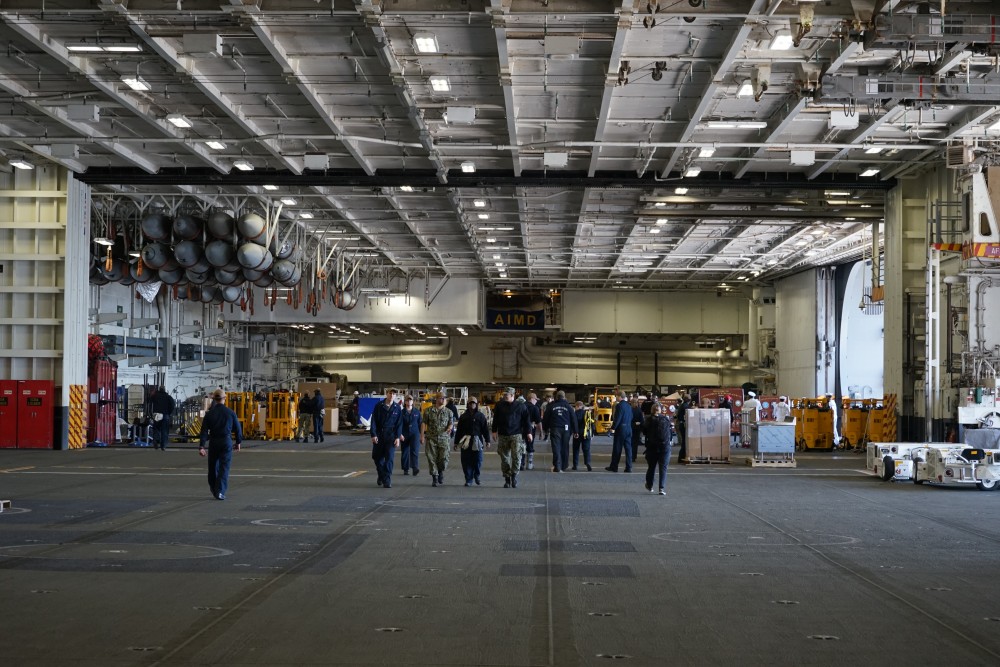 Hangar bay on «USS George H. W. Bush» - a carrier that can take more than 70 aircraft here and on the main flight deck. Photo: Thomas Nilsen
Hangar bay on «USS George H. W. Bush» - a carrier that can take more than 70 aircraft here and on the main flight deck. Photo: Thomas Nilsen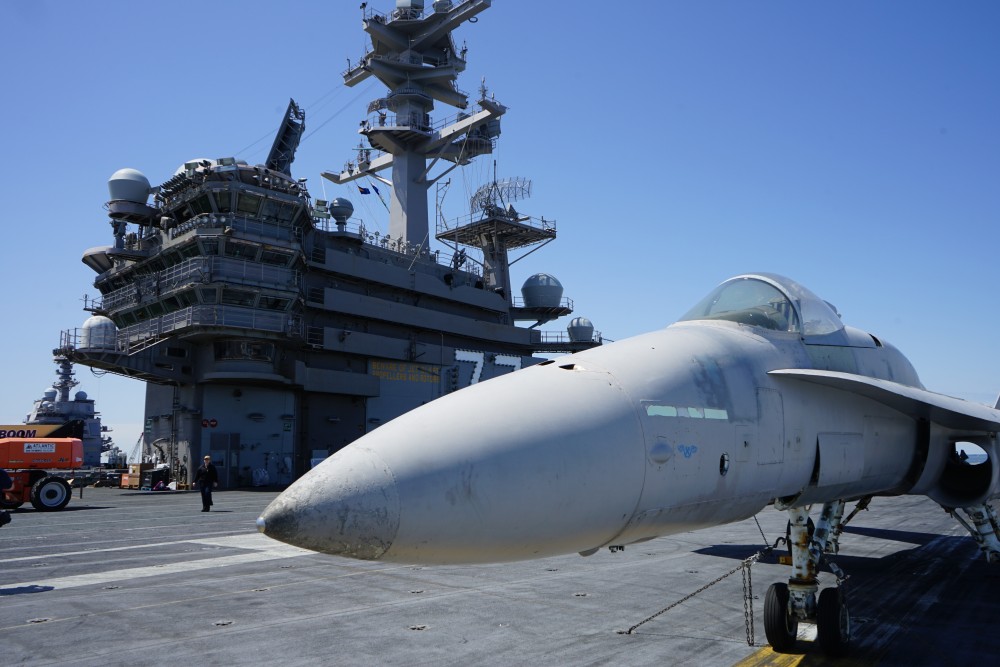 Flight deck on the aircraft carrier «USS George H. W. Bush». Photo: Thomas Nilsen
Flight deck on the aircraft carrier «USS George H. W. Bush». Photo: Thomas Nilsen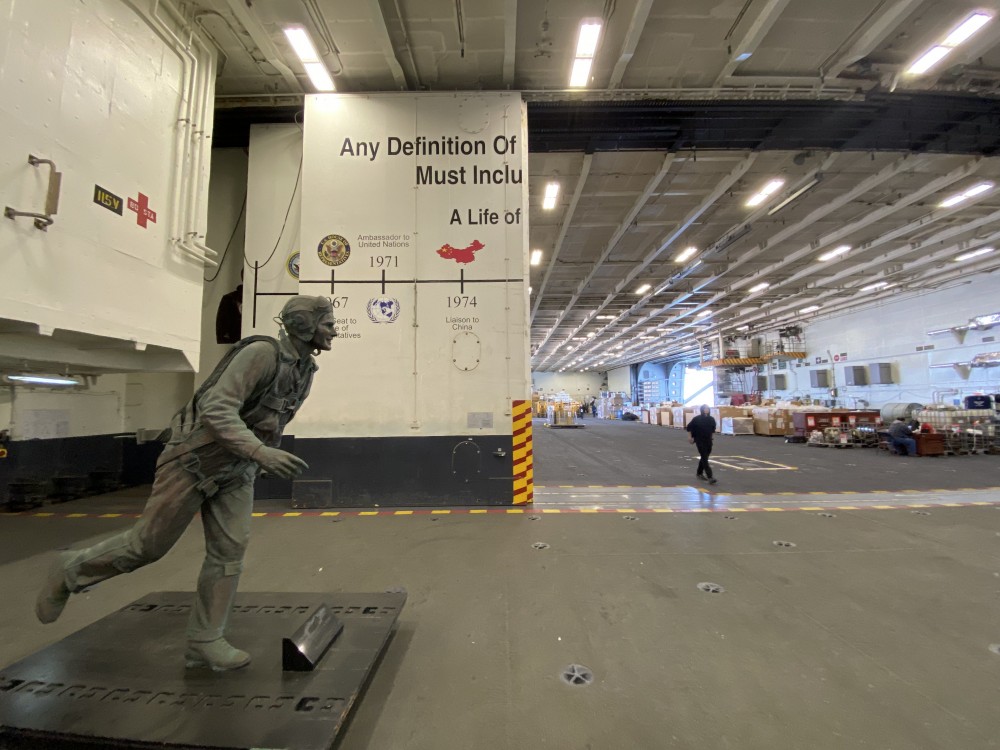 The carrier is named after George H. W. Bush who served as the 41st president of the United States from 1989 to 1993. A statue of Bush from the times he served as a pilot is placed in the hangar bay of the giant ship. Photo: Thomas Nilsen
The carrier is named after George H. W. Bush who served as the 41st president of the United States from 1989 to 1993. A statue of Bush from the times he served as a pilot is placed in the hangar bay of the giant ship. Photo: Thomas Nilsen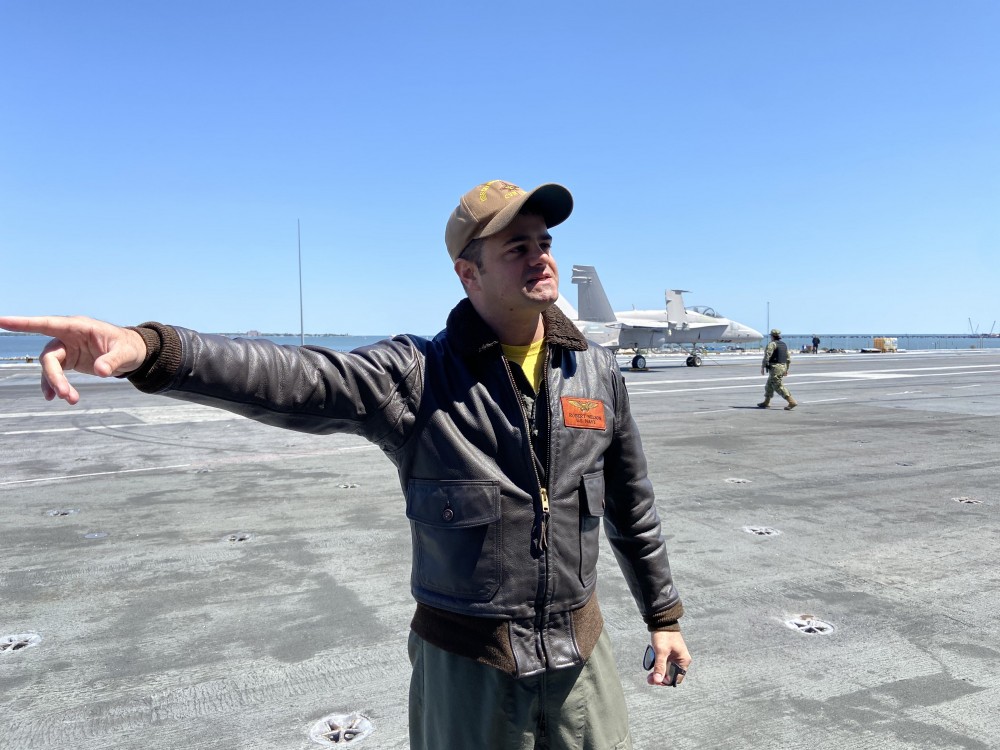 TOP GUN: A fighter jet can take off every 30-seconds from the flight deck. Photo: Thomas Nilsen
TOP GUN: A fighter jet can take off every 30-seconds from the flight deck. Photo: Thomas Nilsen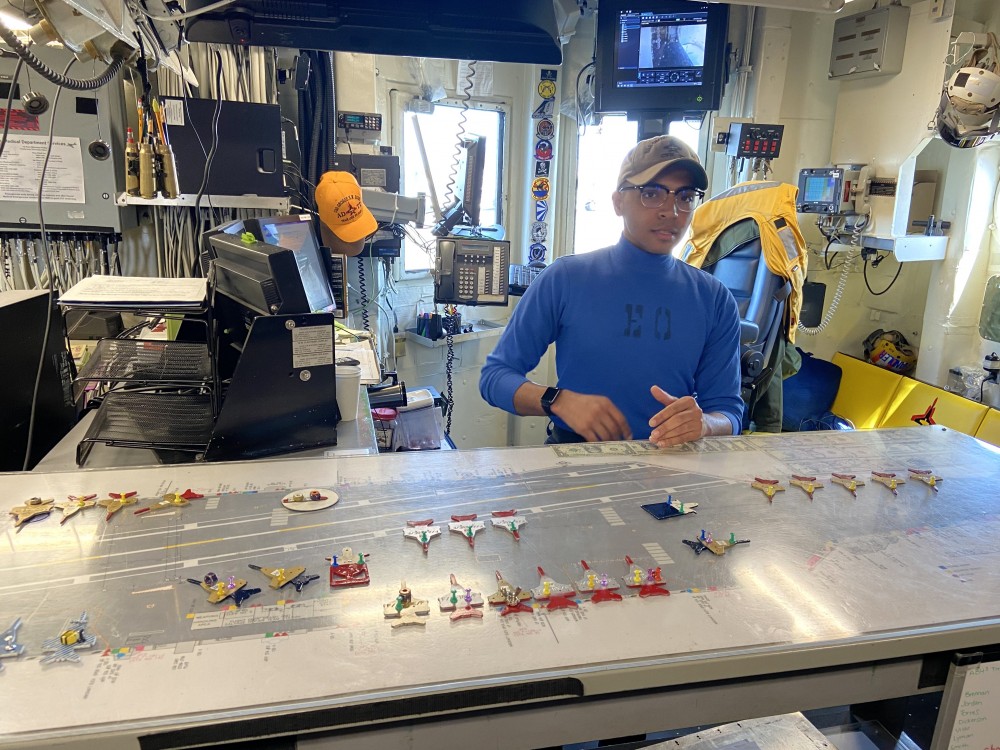 Models are used in the flight deck control room to keep overview of the aircraft positions. Photo: Thomas Nilsen
Models are used in the flight deck control room to keep overview of the aircraft positions. Photo: Thomas Nilsen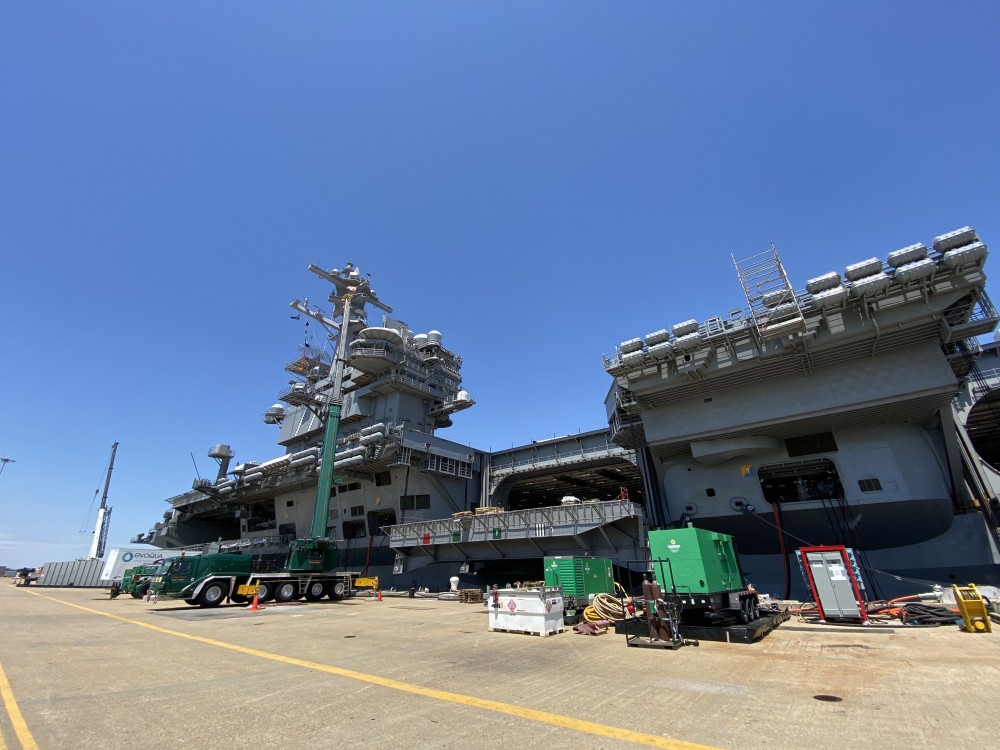 Fighter jets are lifted from the hangar bay to the flight deck. Photo: Thomas Nilsen
Fighter jets are lifted from the hangar bay to the flight deck. Photo: Thomas Nilsen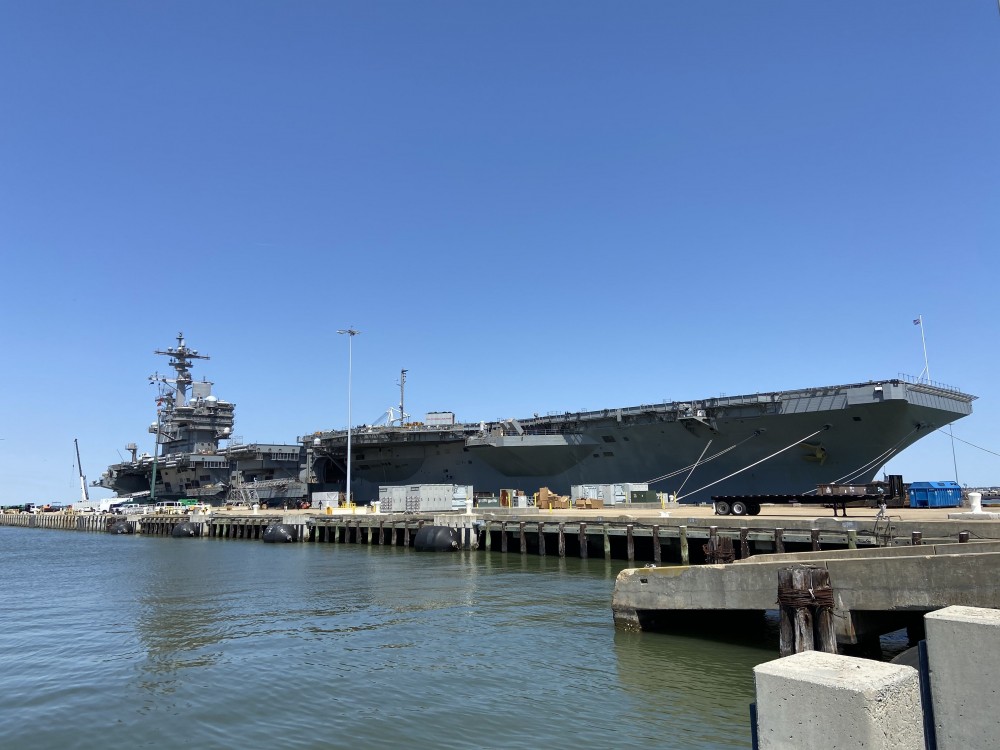 The «USS George H. W. Bush» is 333-meters long and has a weight of more than 100,000 tons - making it one of the largest warships in the world. Photo: Thomas Nilsen
The «USS George H. W. Bush» is 333-meters long and has a weight of more than 100,000 tons - making it one of the largest warships in the world. Photo: Thomas Nilsen
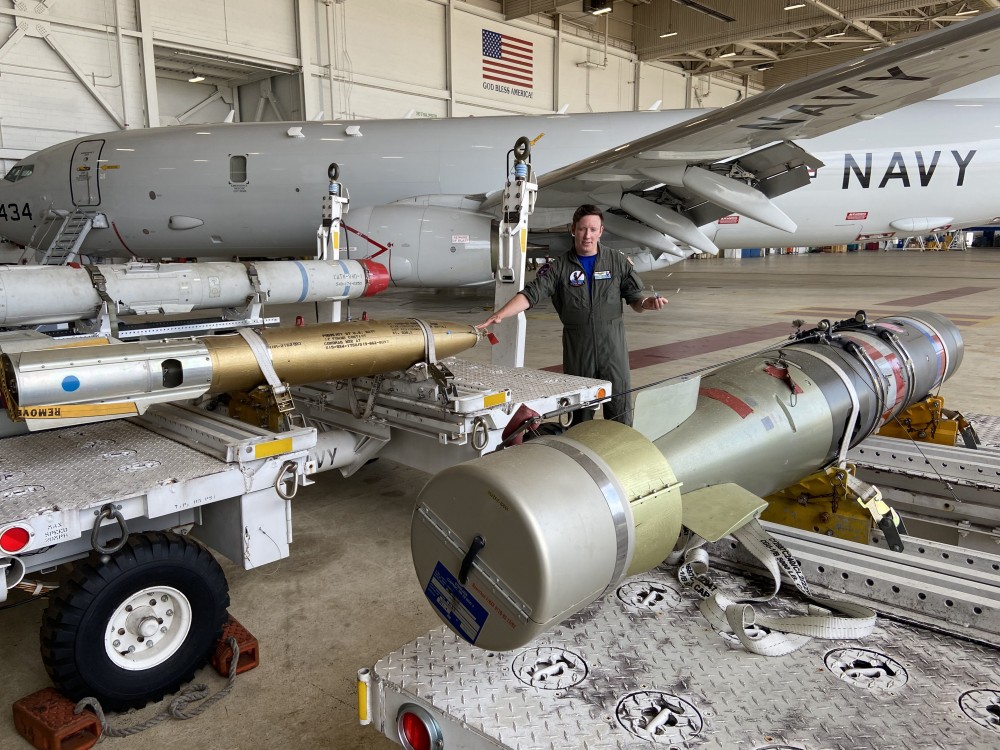 Lt. William Sprott shows the variety of weapons to be carried by the P-8 Poseidon: Torpedo, bomb and the Harpoon anti-ship cruise missile. Photo: Thomas Nilsen
Lt. William Sprott shows the variety of weapons to be carried by the P-8 Poseidon: Torpedo, bomb and the Harpoon anti-ship cruise missile. Photo: Thomas Nilsen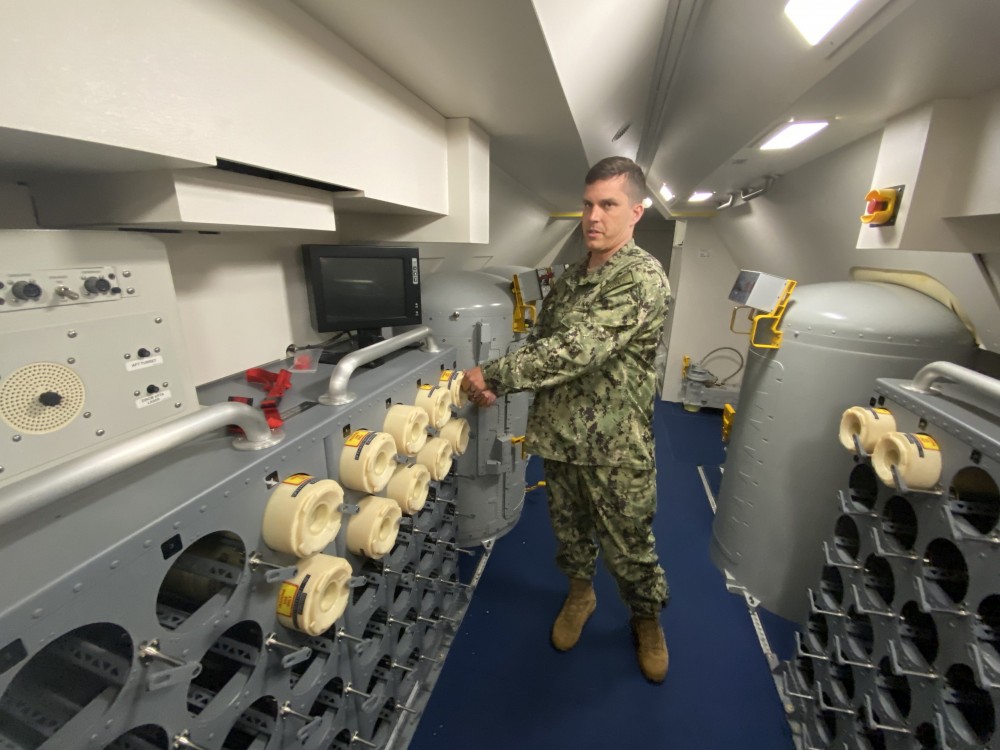 Two racks for numerous sonobuoys and three pressurised launchers are located in the back of the cabin of the P-8s. Photo: Thomas Nilsen
Two racks for numerous sonobuoys and three pressurised launchers are located in the back of the cabin of the P-8s. Photo: Thomas Nilsen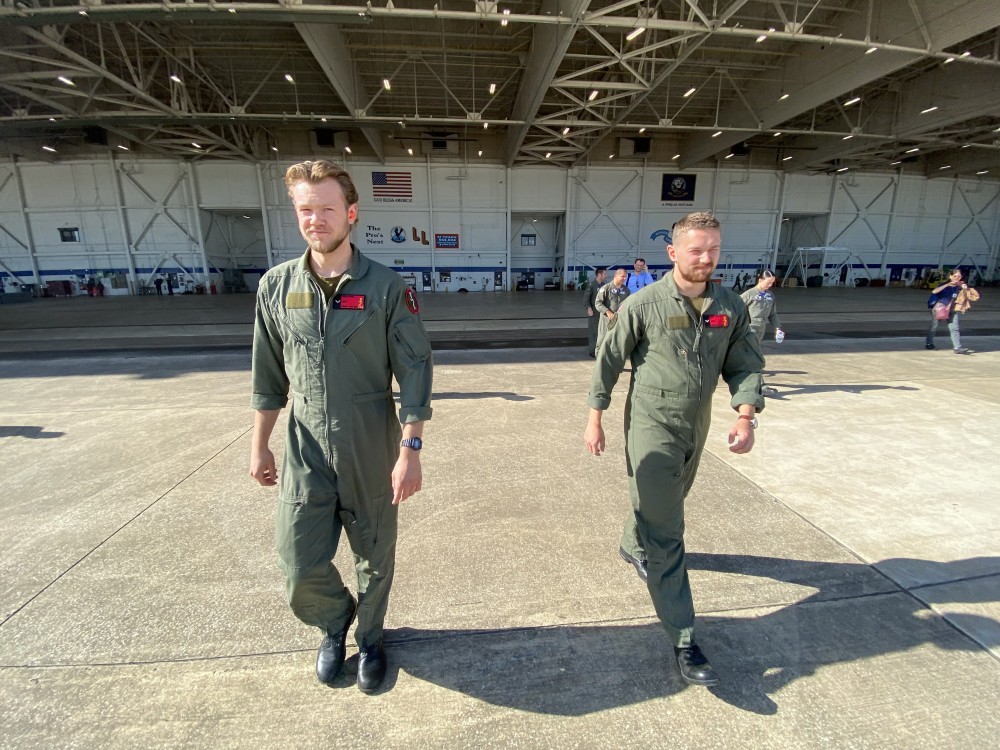 Six months of training in Florida will be followed by another six months at Evenes Air Station in northern Norway for Espen Sollid and Lars Johansen from Tromsø. Photo: Thomas Nilsen
Six months of training in Florida will be followed by another six months at Evenes Air Station in northern Norway for Espen Sollid and Lars Johansen from Tromsø. Photo: Thomas Nilsen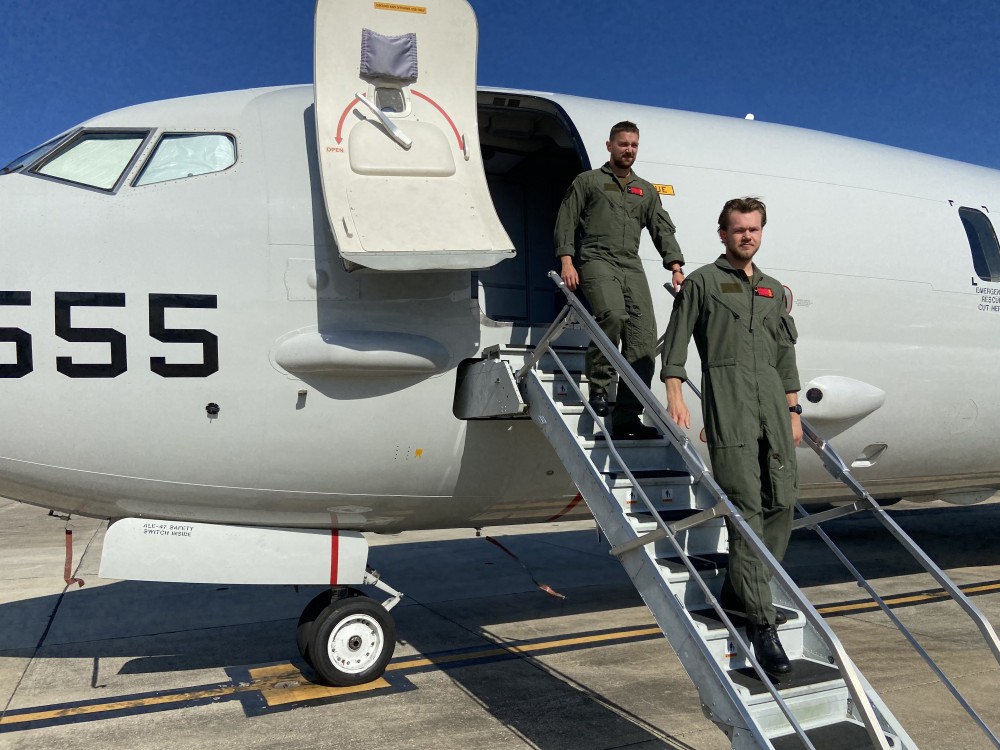 A workplace unlike others: Espen Sollid and Lars Johansen disembarking the P-8 Poseidon plane at Naval Air Station Jacksonville in Florida. After training, the two will search for Russian submarines from the skies above Arctic waters. Photo: Thomas Nilsen
A workplace unlike others: Espen Sollid and Lars Johansen disembarking the P-8 Poseidon plane at Naval Air Station Jacksonville in Florida. After training, the two will search for Russian submarines from the skies above Arctic waters. Photo: Thomas Nilsen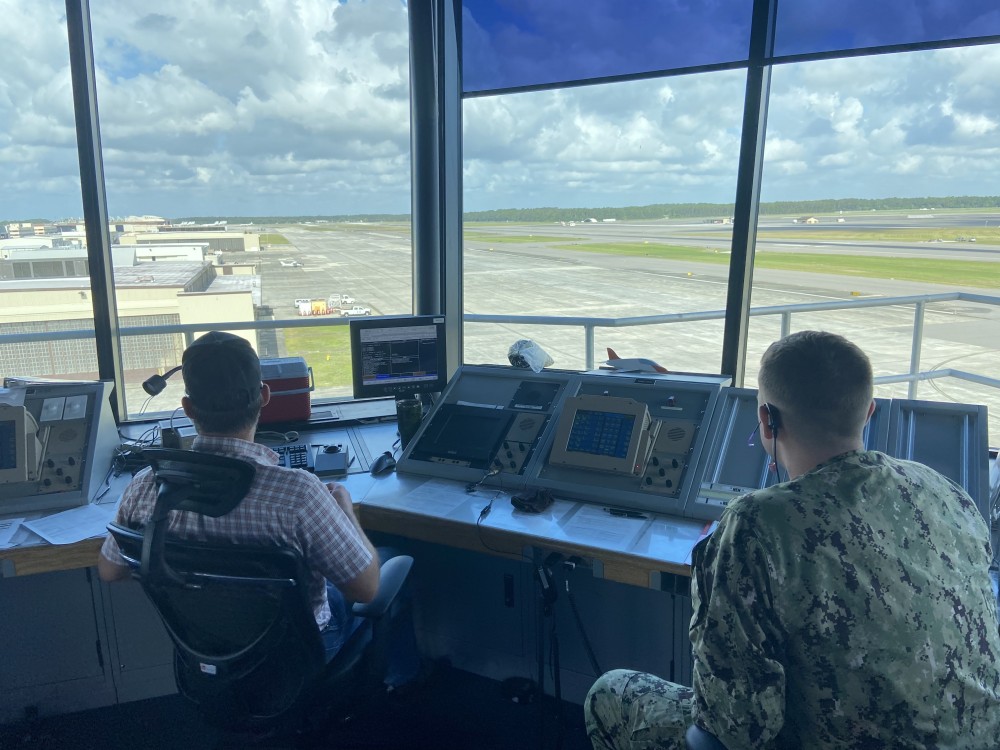 All take-offs and landings at NAS Jacksonville are monitored and cleared from the control tower. Photo: Thomas Nilsen
All take-offs and landings at NAS Jacksonville are monitored and cleared from the control tower. Photo: Thomas Nilsen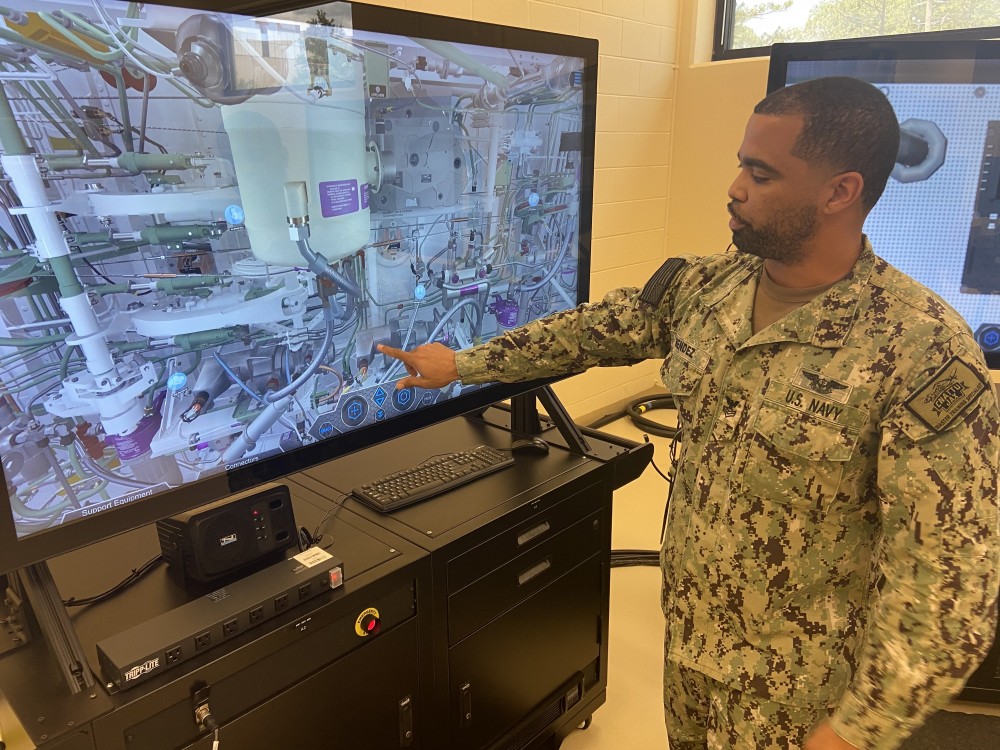 Big touchscreen simulators are developed by Boeing for training of the maintenance personell. Photo: Thomas Nilsen
Big touchscreen simulators are developed by Boeing for training of the maintenance personell. Photo: Thomas Nilsen Model of the specialist radar in the nose of the plane. The radar has a range of up to 250 nautical miles and can detect a submarine if only the periscope is above water line. Photo: Thomas Nilsen
Model of the specialist radar in the nose of the plane. The radar has a range of up to 250 nautical miles and can detect a submarine if only the periscope is above water line. Photo: Thomas Nilsen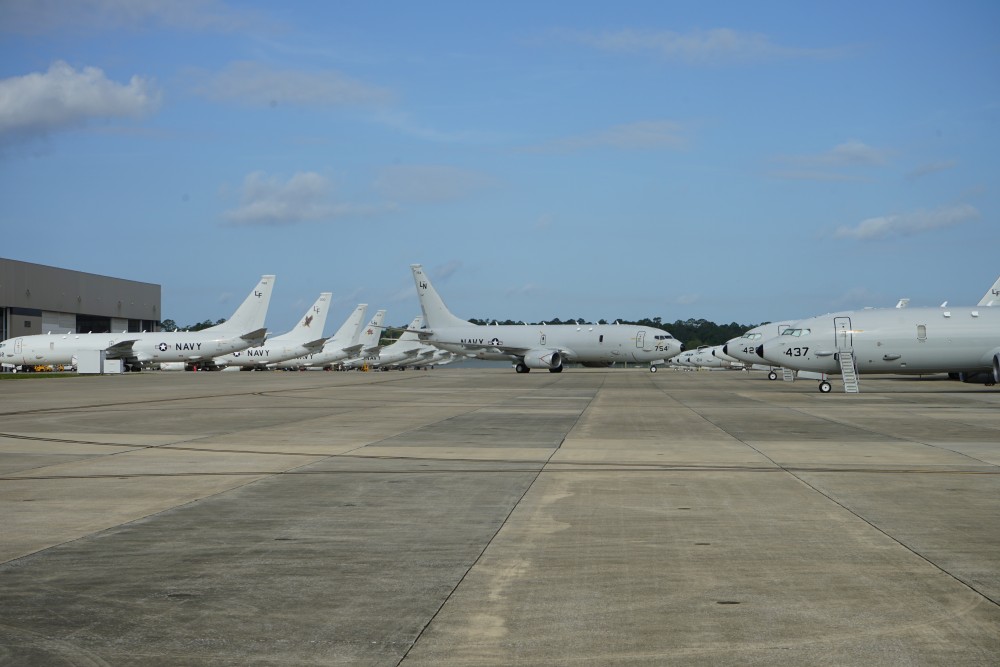 Naval Air Station Jacksonville in Florida is home to Patrol Squadron THIRTY (VP-30) and the Squadron that prepares and trains pilots and operators for domestic and foreign P-8 maritime patrol aircraft. Photo: Thomas Nilsen
Naval Air Station Jacksonville in Florida is home to Patrol Squadron THIRTY (VP-30) and the Squadron that prepares and trains pilots and operators for domestic and foreign P-8 maritime patrol aircraft. Photo: Thomas Nilsen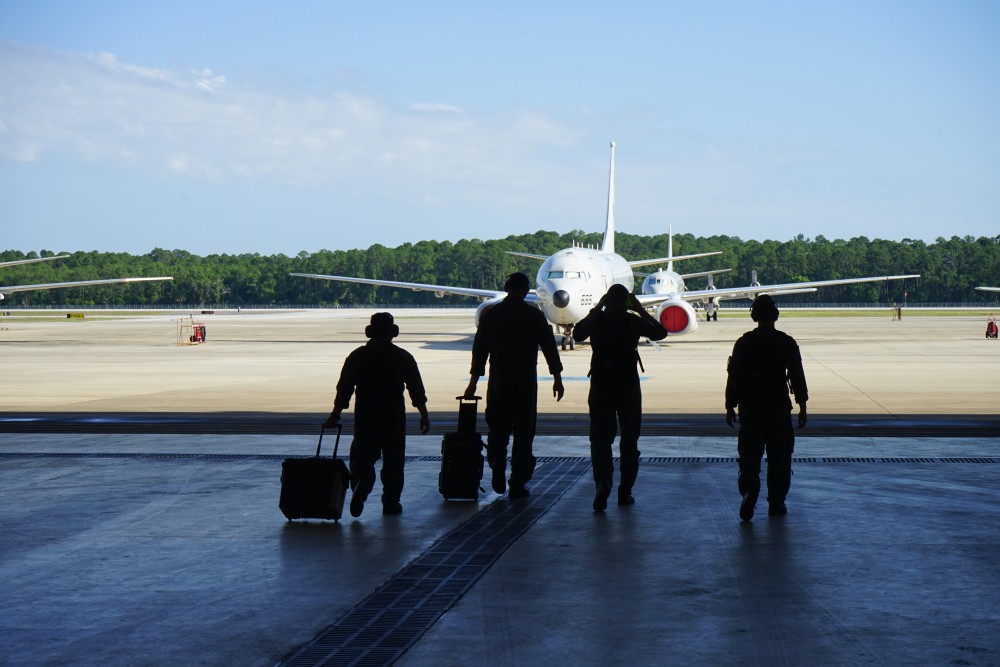 Ready for mission: Crew on their way to board the plane for a flight outside the coast of Florida. Photo: Thomas Nilsen
Ready for mission: Crew on their way to board the plane for a flight outside the coast of Florida. Photo: Thomas Nilsen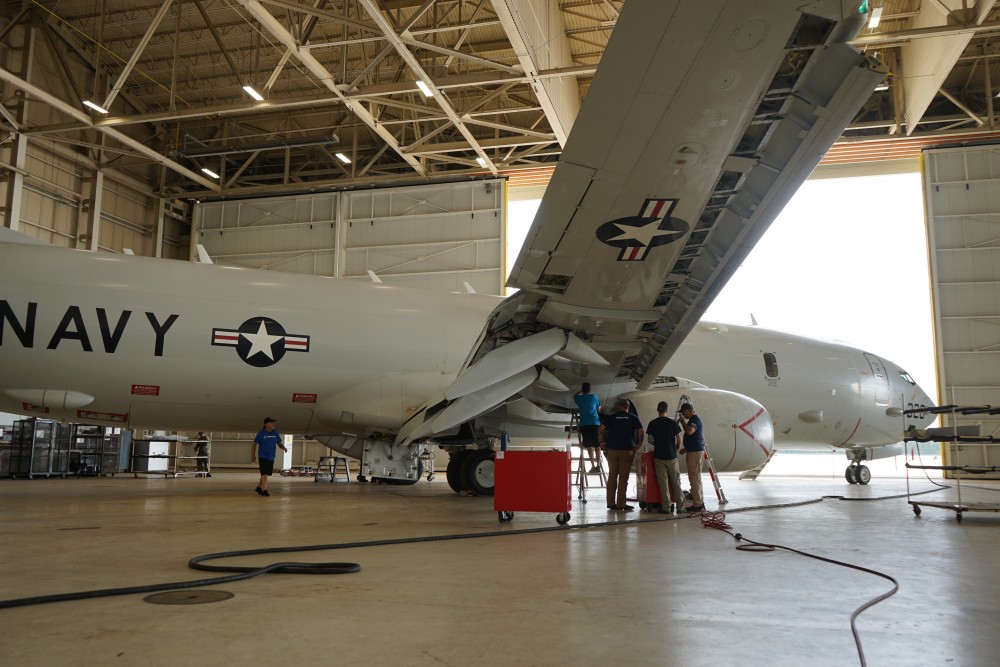 Maintenance work in one of the hangars at NAS Jacksonville. Photo: Thomas Nilsen
Maintenance work in one of the hangars at NAS Jacksonville. Photo: Thomas Nilsen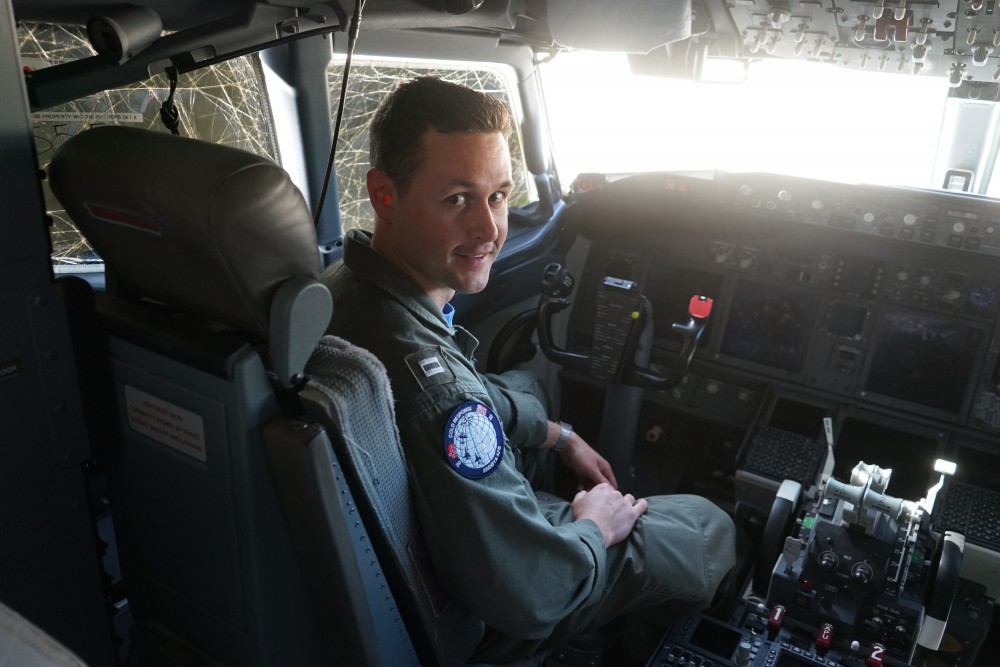 Pilot Lt. Montana Marsh in cockpit of the P-8 Poseidon, an aircraft he flew when participating in the Norwegian-led exercise Cold Response in March 2022. Photo: Thomas Nilsen
Pilot Lt. Montana Marsh in cockpit of the P-8 Poseidon, an aircraft he flew when participating in the Norwegian-led exercise Cold Response in March 2022. Photo: Thomas Nilsen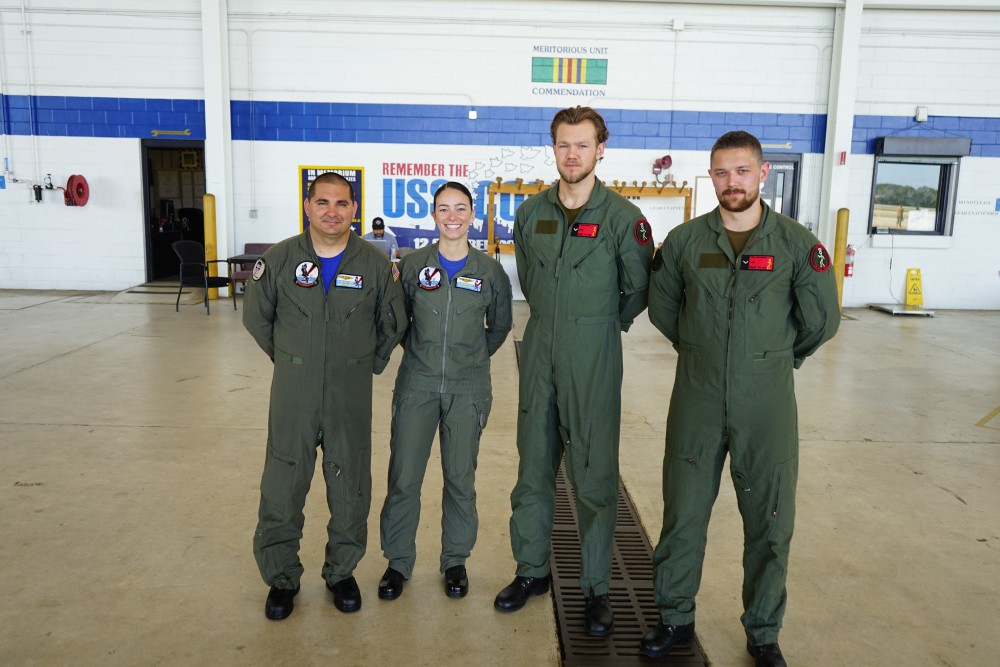 Espen Sollid and Lars Johansen get good marks from these two American instructors at NAS Jacksonville. Photo: Thomas Nilsen
Espen Sollid and Lars Johansen get good marks from these two American instructors at NAS Jacksonville. Photo: Thomas Nilsen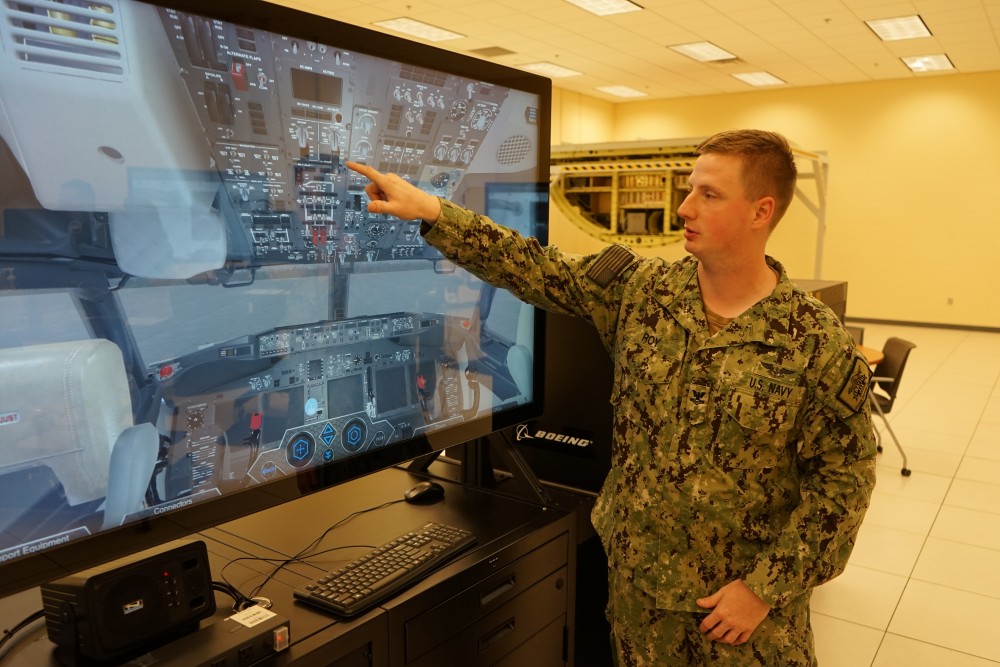 Touchscreen simulator for maintenance work in the cockpit of the P-8. Photo: Thomas Nilsen
Touchscreen simulator for maintenance work in the cockpit of the P-8. Photo: Thomas Nilsen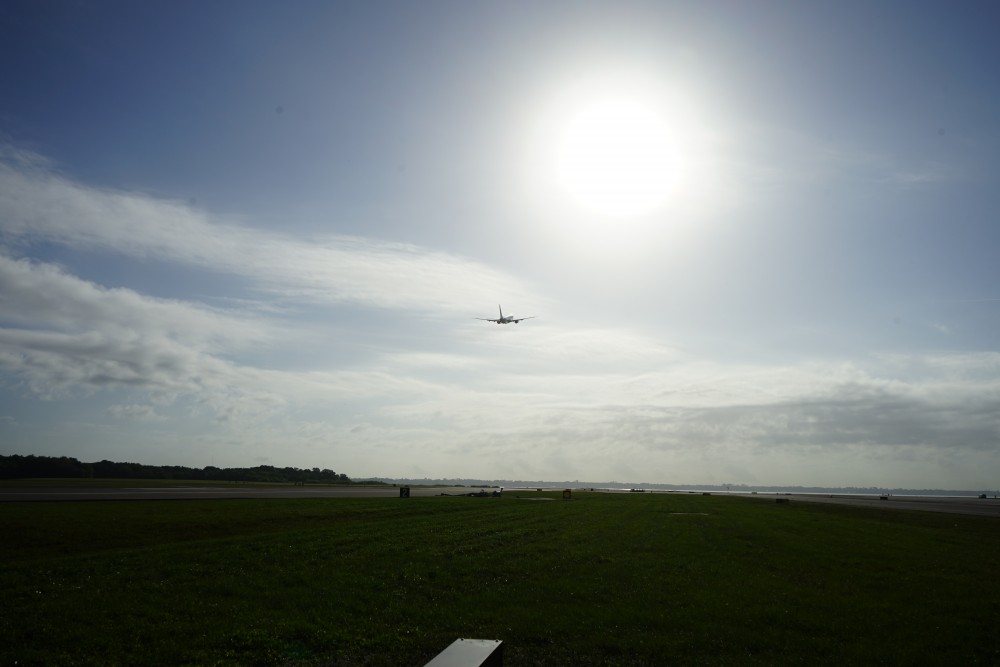 A P-8 Poseidon takes-off for Atlantic mission outside Florida. Photo: Thomas Nilsen
A P-8 Poseidon takes-off for Atlantic mission outside Florida. Photo: Thomas Nilsen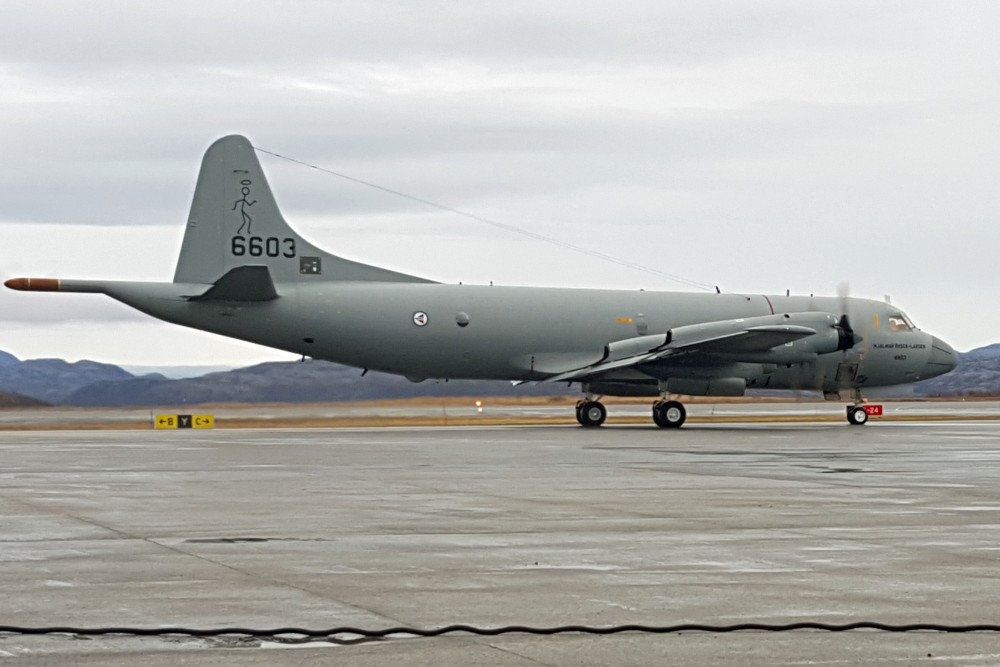 One of Norway's old P-3C Orion turboprop. The Saint as a badge on the tail is a tradition to be continued on the new P-8 Poseidon planes. Photo: Thomas Nilsen
One of Norway's old P-3C Orion turboprop. The Saint as a badge on the tail is a tradition to be continued on the new P-8 Poseidon planes. Photo: Thomas Nilsen
 "Stop Putin, Don't Bomb Ukraine," reads the sign as some 150 people marched towards the border river Pasvik. Photo: Thomas Nilsen
"Stop Putin, Don't Bomb Ukraine," reads the sign as some 150 people marched towards the border river Pasvik. Photo: Thomas Nilsen Photo: Thomas Nilsen
Photo: Thomas Nilsen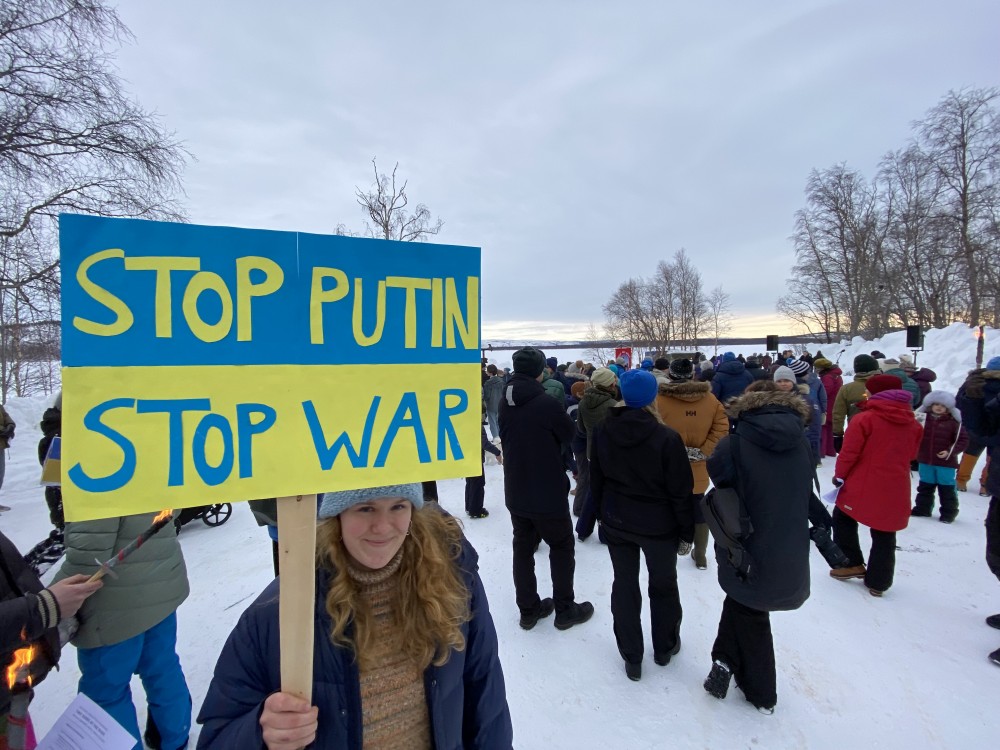 Photo: Thomas Nilsen
Photo: Thomas Nilsen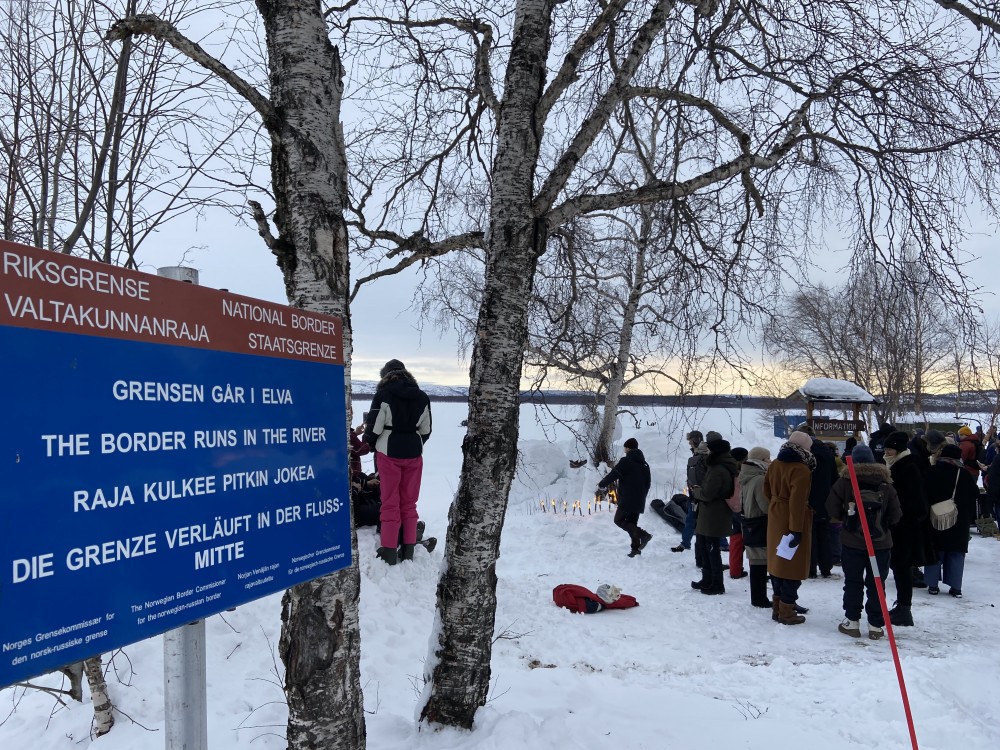 The Norwegian- Russian border follows the deepest part of the Pasvik river. Photo: Thomas Nilsen
The Norwegian- Russian border follows the deepest part of the Pasvik river. Photo: Thomas Nilsen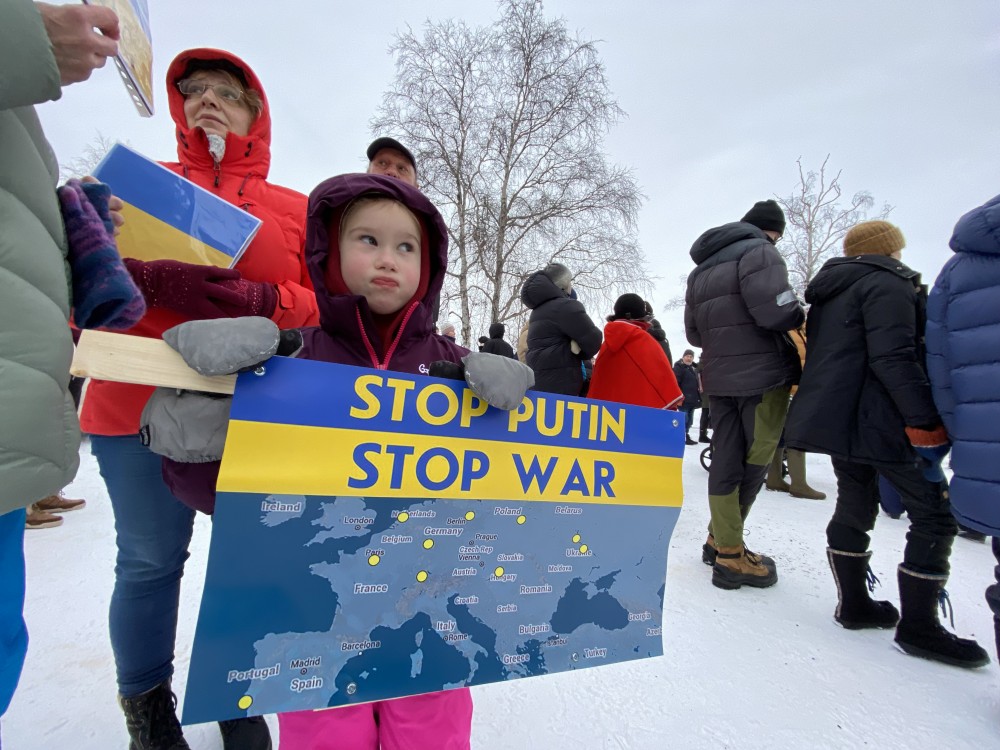 Photo: Thomas Nilsen
Photo: Thomas Nilsen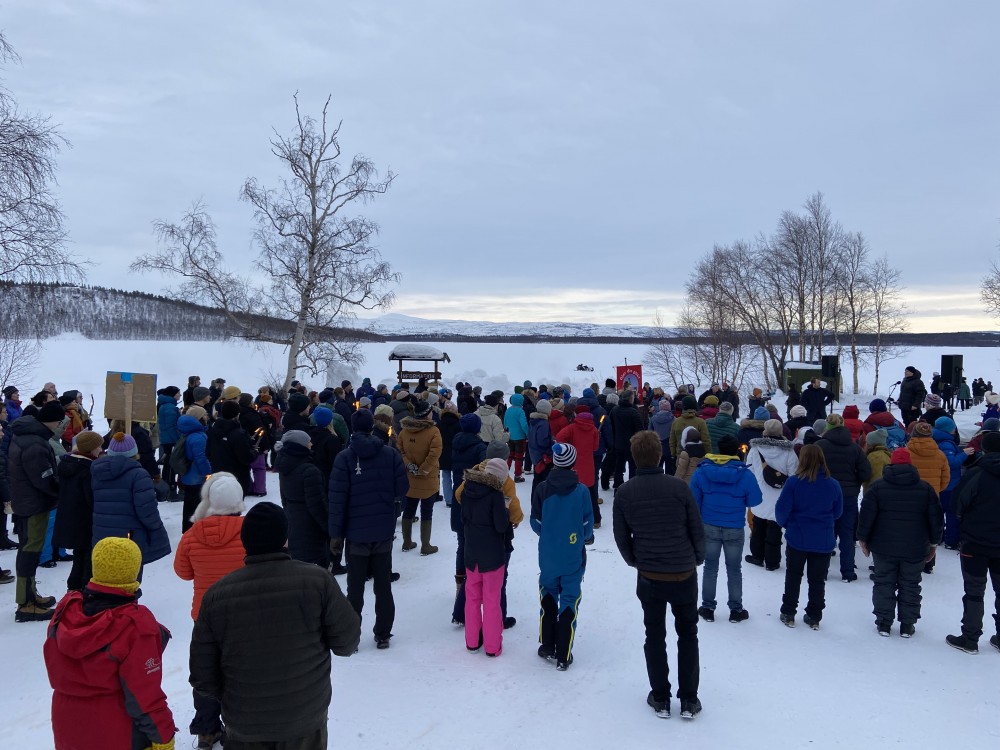 Russia is on the other side of the frozen river. Photo: Thomas Nilsen
Russia is on the other side of the frozen river. Photo: Thomas Nilsen Some 150 people participated in the protest march. Photo: Thomas Nilsen
Some 150 people participated in the protest march. Photo: Thomas Nilsen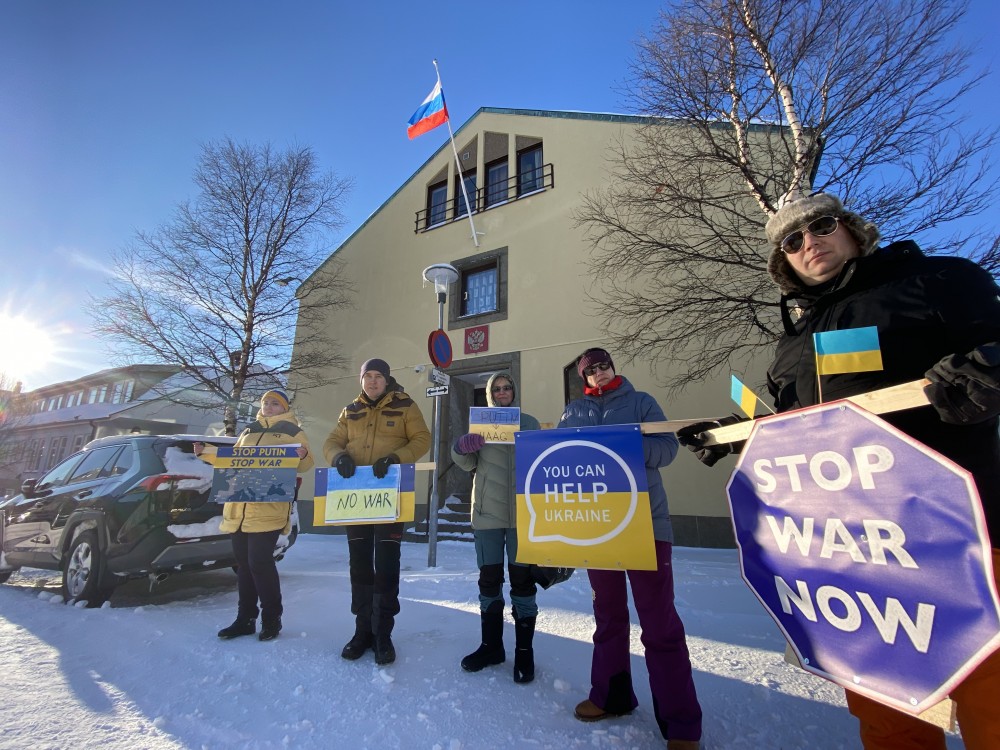 Protest against Putin's war on Ukraine outside Russia's Consulate General in Kirkenes. Photo: Thomas Nilsen
Protest against Putin's war on Ukraine outside Russia's Consulate General in Kirkenes. Photo: Thomas Nilsen
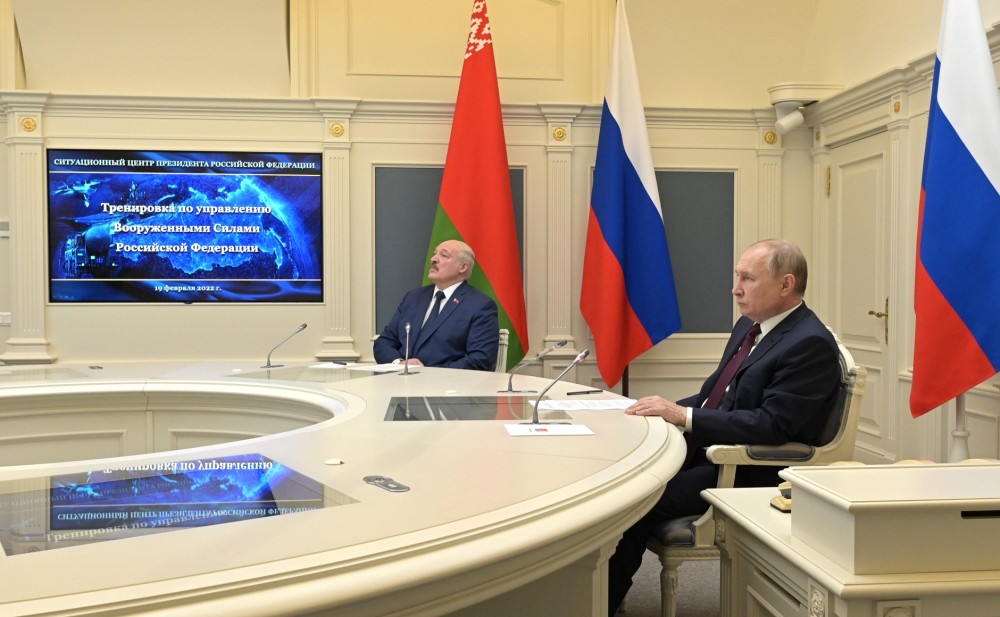 Aleksandr Lukashenko and Vladimir Putin. Photo: Kremlin. (Click on the image for more photos).
Aleksandr Lukashenko and Vladimir Putin. Photo: Kremlin. (Click on the image for more photos).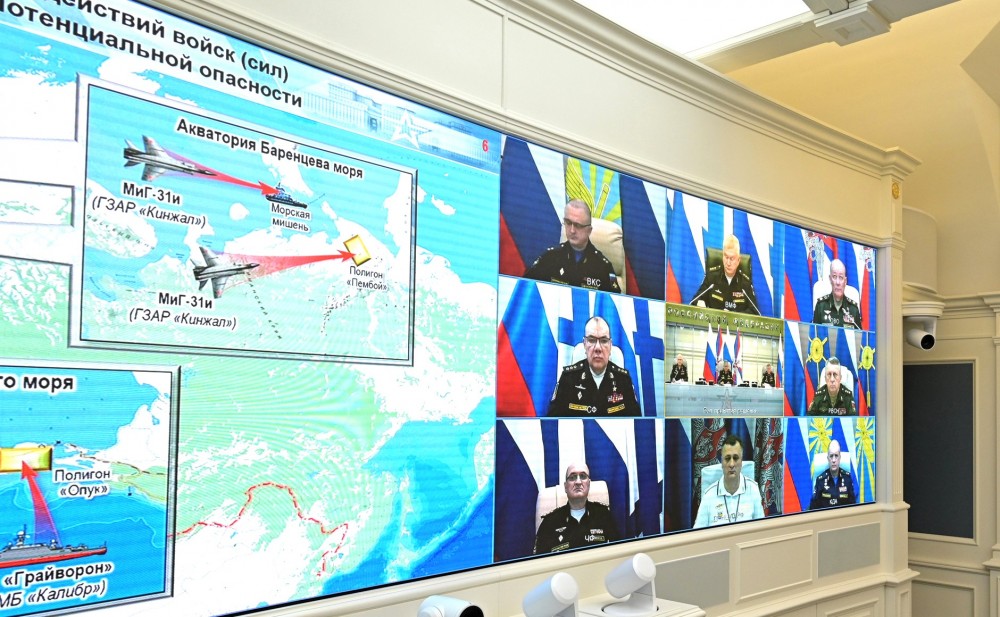 The big screen shows the map of the Barents Sea from where supersonic air-launched Kinzhal cruise missiles were launched from MiG-31K fighter jets towards sea- and land targets. Photo: Kremlin
The big screen shows the map of the Barents Sea from where supersonic air-launched Kinzhal cruise missiles were launched from MiG-31K fighter jets towards sea- and land targets. Photo: Kremlin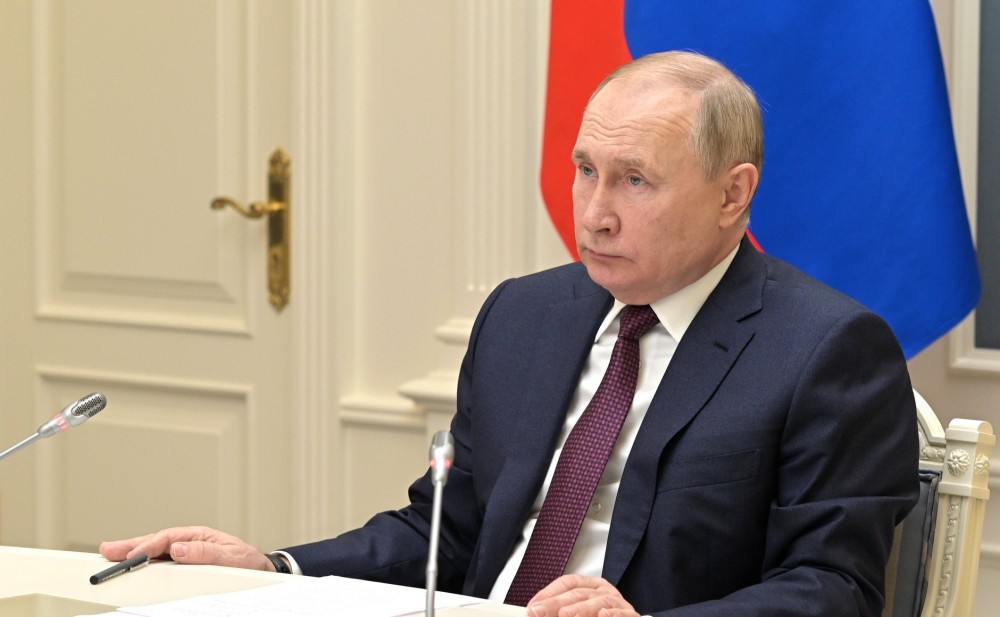 President Putin is the Supreme Commander-in-Chief of the Armed Forces. Photo: Kremlin
President Putin is the Supreme Commander-in-Chief of the Armed Forces. Photo: Kremlin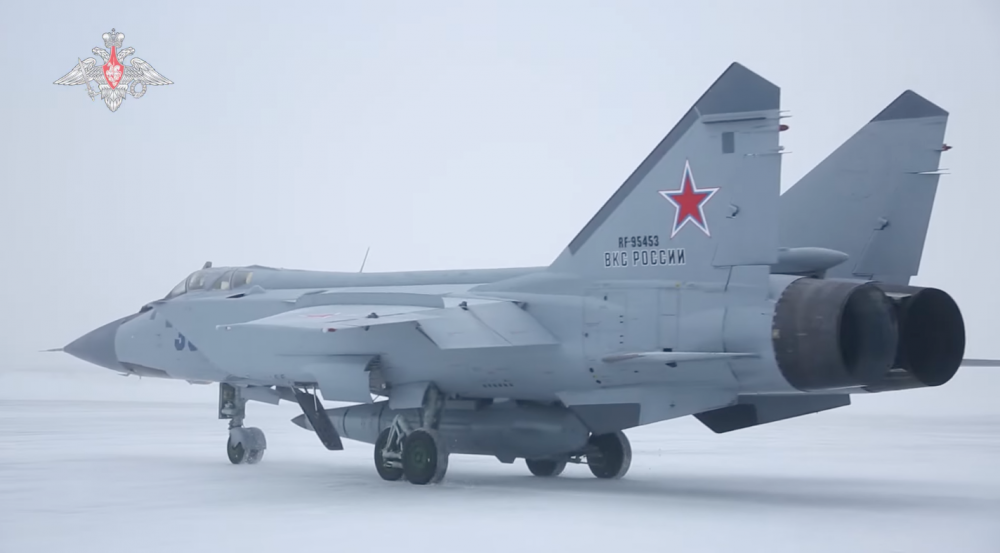 A MiG-31K ready for take-off with the Kinzhal missile from a military airfield on the Kola Peninsula. Photo from a video by the Defense Ministry
A MiG-31K ready for take-off with the Kinzhal missile from a military airfield on the Kola Peninsula. Photo from a video by the Defense Ministry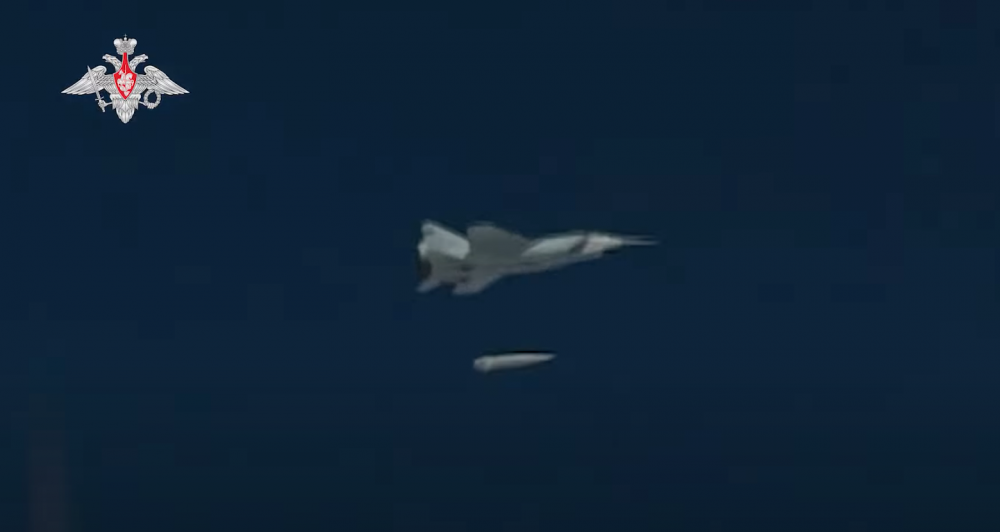 A MiG-31K launches the Kinzhal missile. Photo from video by the Defense Ministry
A MiG-31K launches the Kinzhal missile. Photo from video by the Defense Ministry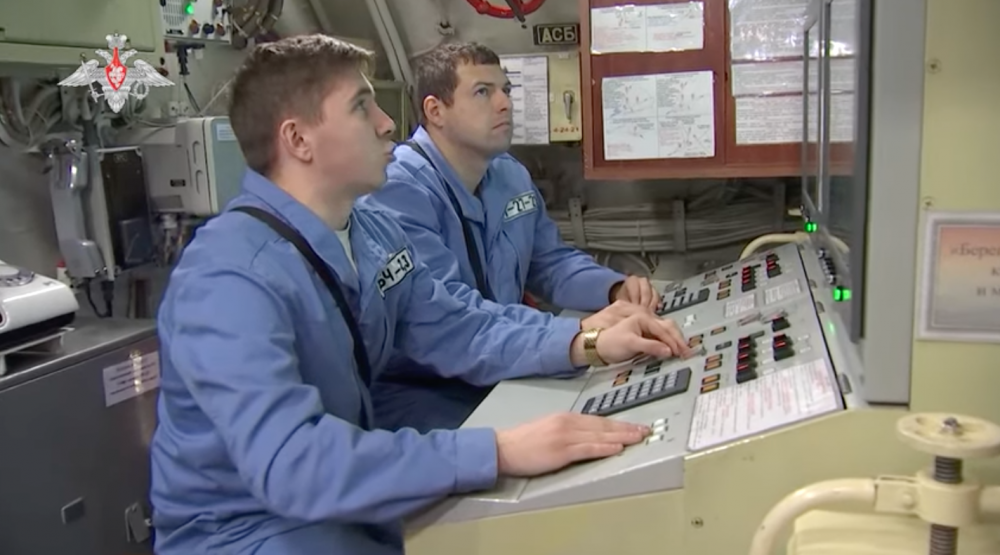 Control room for launching a Kalibr cruise missile from a submarine in the Barents Sea. Photo from video by the Defense Ministry
Control room for launching a Kalibr cruise missile from a submarine in the Barents Sea. Photo from video by the Defense Ministry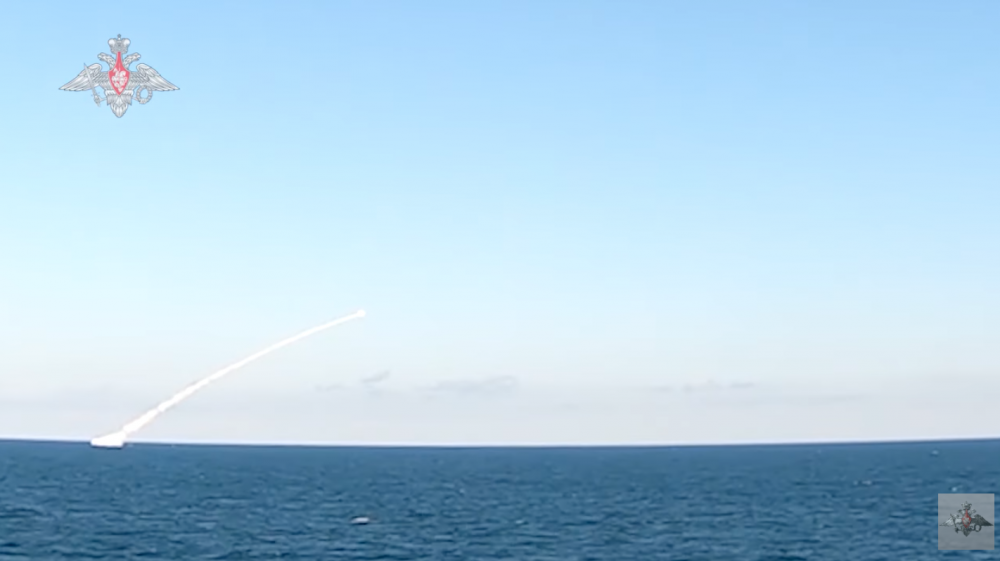 A Kalibr cruise missile was launched from a submarine. Blue skies indicate that this is an older film. On Saturday, it was clouded and snowy in the Barents Sea. Photo from video by the Defense Ministry
A Kalibr cruise missile was launched from a submarine. Blue skies indicate that this is an older film. On Saturday, it was clouded and snowy in the Barents Sea. Photo from video by the Defense Ministry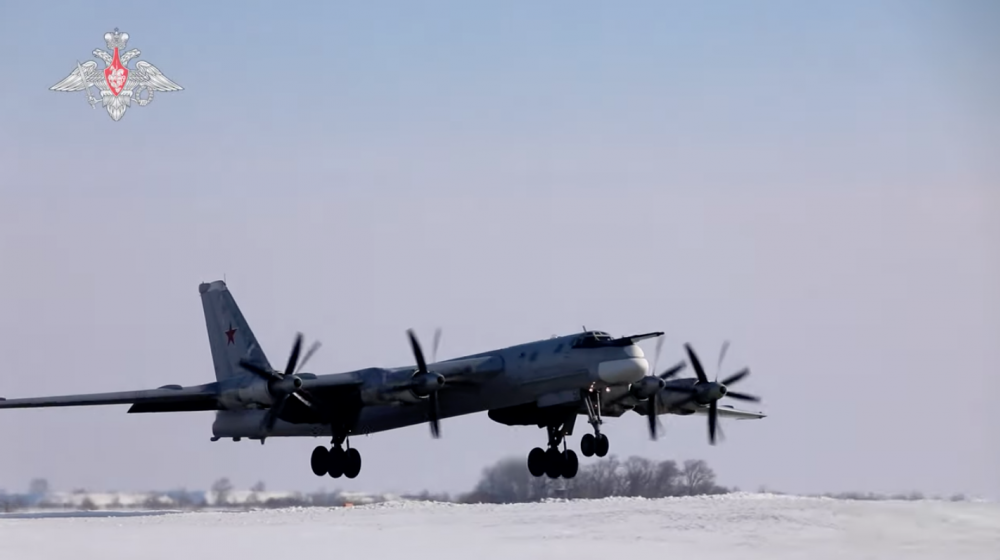 Tu-95 long-range strategic bombers took part in the exercise and launched a cruise missiles towards targets at the Pemboi and Kura ranges. Photo from video by the Defense Ministry
Tu-95 long-range strategic bombers took part in the exercise and launched a cruise missiles towards targets at the Pemboi and Kura ranges. Photo from video by the Defense Ministry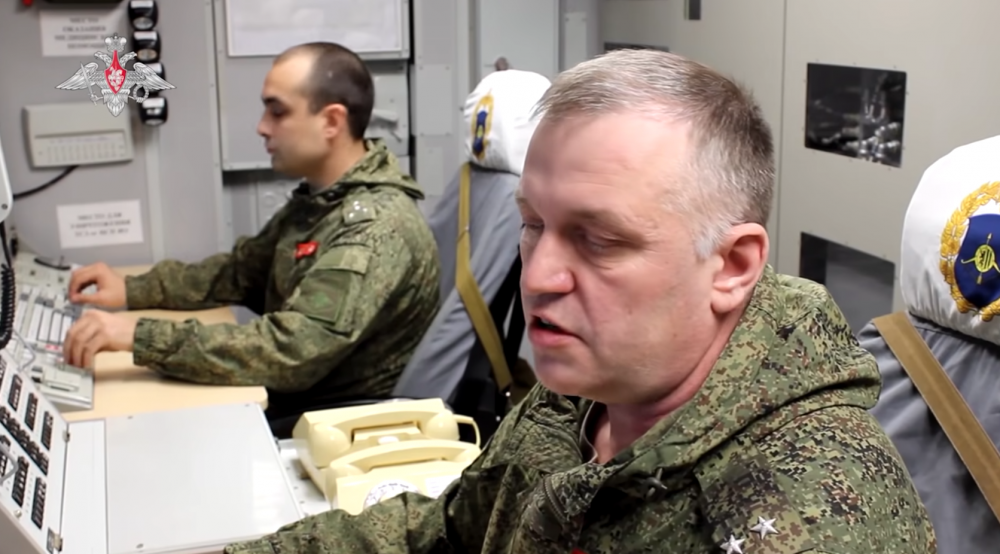 Control room for the launch of a Yars ballistic missile from the Plesetsk cosmodrome. Photo from a video by the Defense Ministry
Control room for the launch of a Yars ballistic missile from the Plesetsk cosmodrome. Photo from a video by the Defense Ministry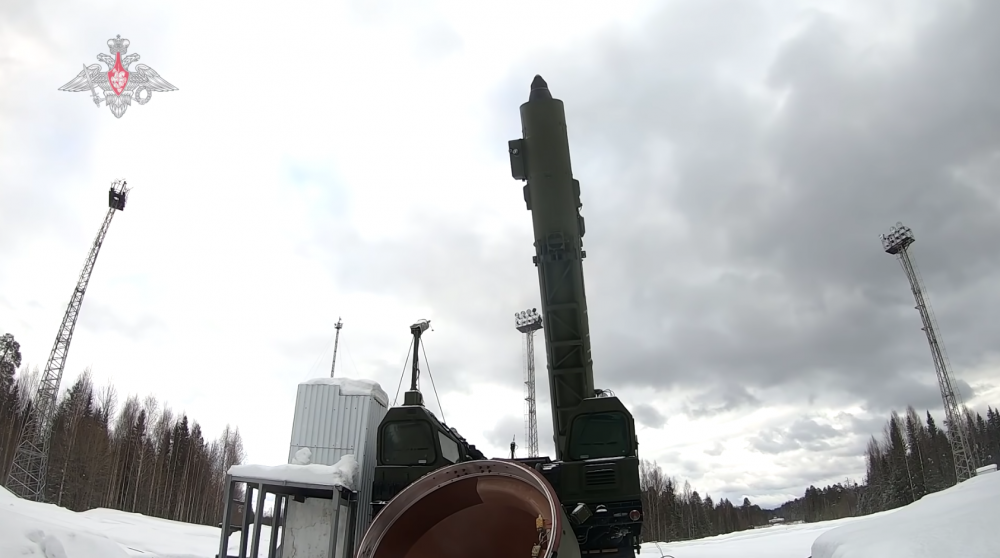 The RS-24 Yars is a mobile-based intercontinental ballistic missile armed with a payload containing several thermonuclear warheads. This missile was Saturday tested from the Plesetsk cosmodrome. Photo from video by the Defense Ministry
The RS-24 Yars is a mobile-based intercontinental ballistic missile armed with a payload containing several thermonuclear warheads. This missile was Saturday tested from the Plesetsk cosmodrome. Photo from video by the Defense Ministry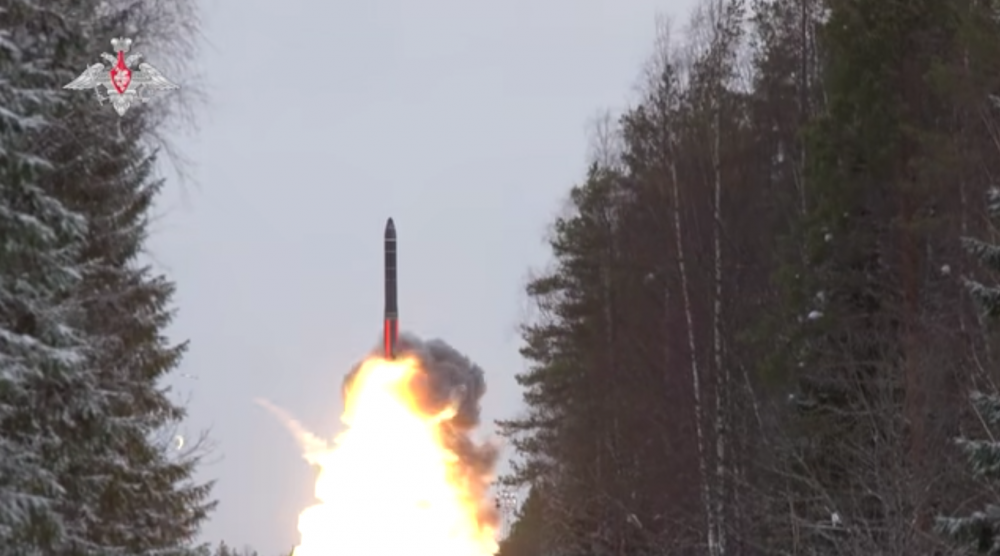 The Yars ballistic missile launched from Plesetsk hit a target on the Kura range in Russia's Far East. Photo from video by the Defense Ministry
The Yars ballistic missile launched from Plesetsk hit a target on the Kura range in Russia's Far East. Photo from video by the Defense Ministry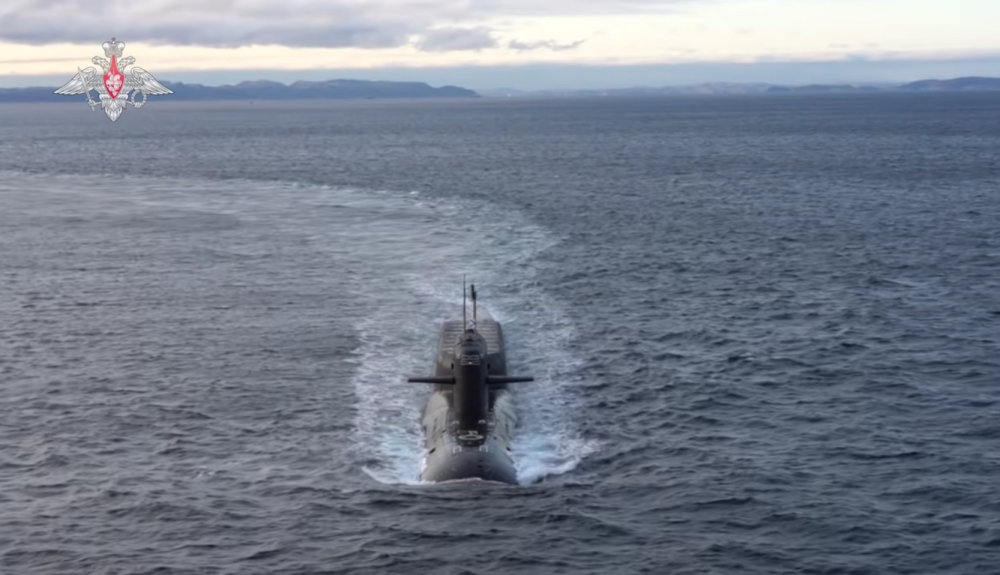 The Delta-IV class submarine "Karelia" launched a Sineva ballistic missile. Photo from video by the Defense Ministry
The Delta-IV class submarine "Karelia" launched a Sineva ballistic missile. Photo from video by the Defense Ministry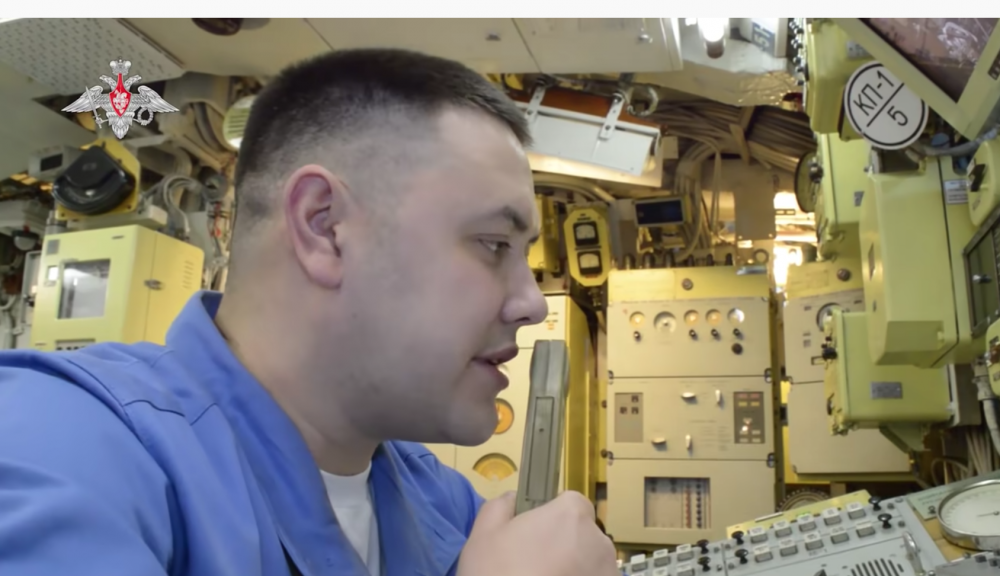 Control post for missile launch in "Karelia" nuclear-powered submarine sailing the Barents Sea. Photo from video by the Defense Ministry
Control post for missile launch in "Karelia" nuclear-powered submarine sailing the Barents Sea. Photo from video by the Defense Ministry
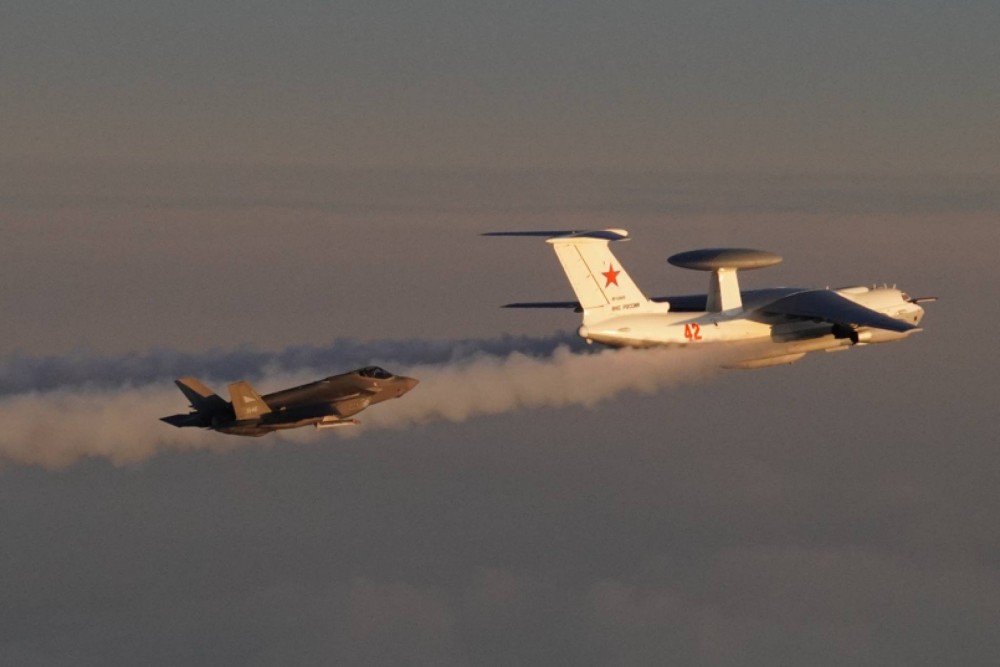 A Norwegian F-35 follows the Russian Beriev A-50 plane north of Norway. Photo: Norwegian Air Force
A Norwegian F-35 follows the Russian Beriev A-50 plane north of Norway. Photo: Norwegian Air Force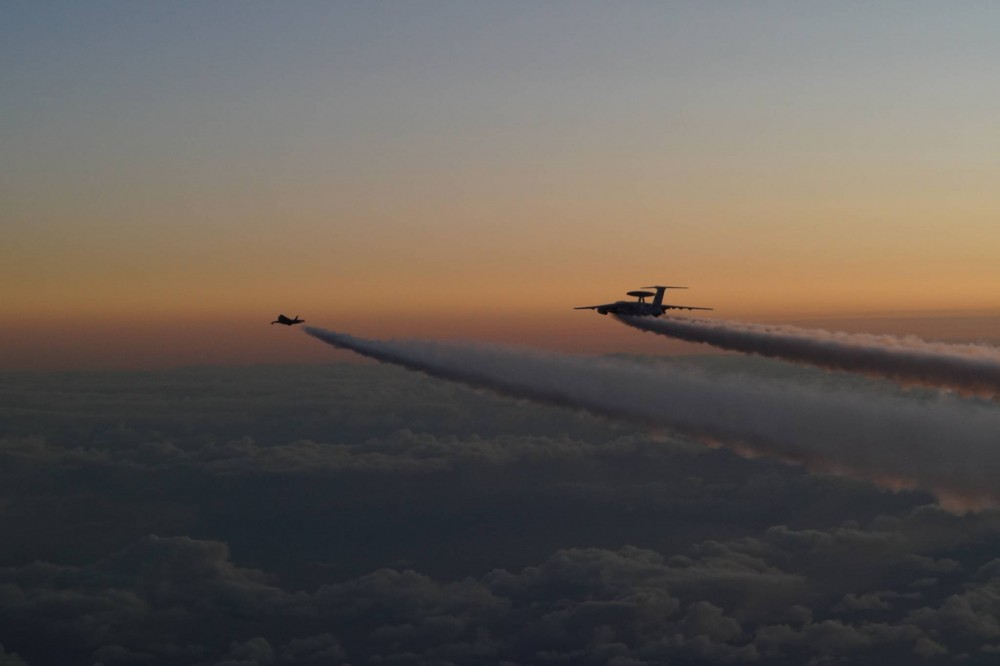 The Beriev A-50 is an early warning and control aircraft often flying together with a group of long-range bombers and fighter jets out of Russian airspace northwest of the Kola Peninsula and north of Norway. Photo: Norwegian Air Force
The Beriev A-50 is an early warning and control aircraft often flying together with a group of long-range bombers and fighter jets out of Russian airspace northwest of the Kola Peninsula and north of Norway. Photo: Norwegian Air Force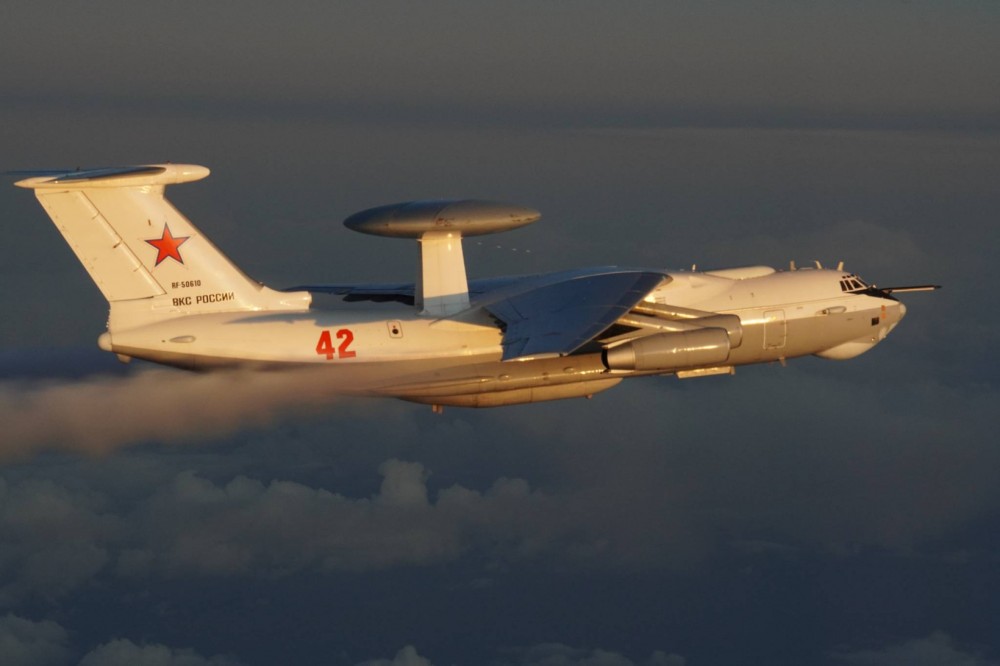 A large surveillance radar with its antenna in an over-fuselage rotodome, which has a diameter of 9 metres, makes the Beriev A-50 very characteristic. Photo: Norwegian Air Force
A large surveillance radar with its antenna in an over-fuselage rotodome, which has a diameter of 9 metres, makes the Beriev A-50 very characteristic. Photo: Norwegian Air Force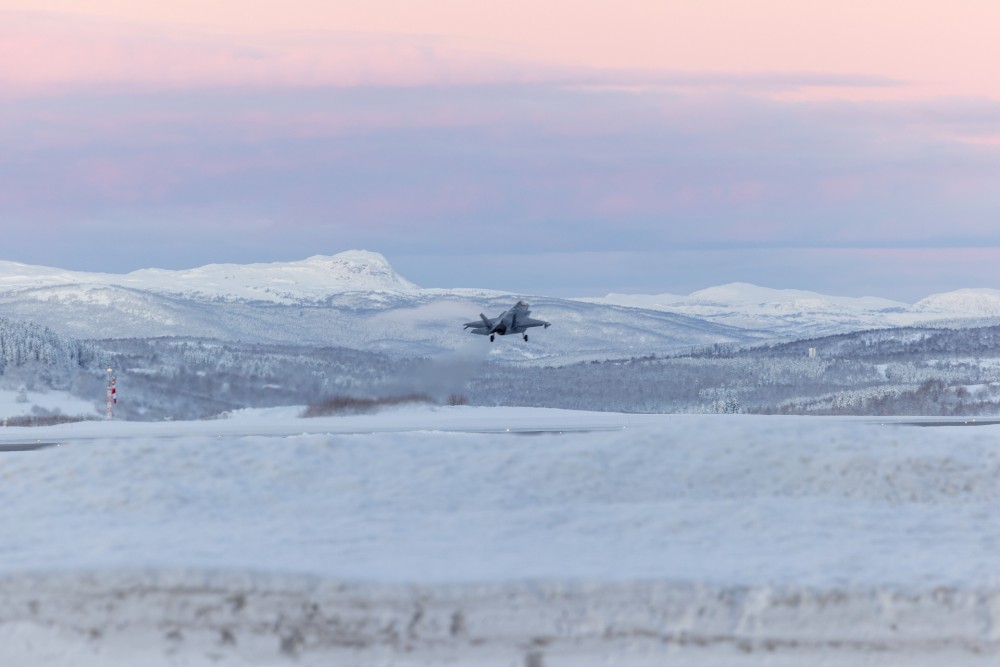 Two Norwegian F-35 on NATO's Quick Reaction Alert (QRA) scrambled from Evenes airport inside the Arctic Circle on Wednesday to identify the Russian military planes. Photo: Tiril Haslestad/ Norwegian Armed Forces
Two Norwegian F-35 on NATO's Quick Reaction Alert (QRA) scrambled from Evenes airport inside the Arctic Circle on Wednesday to identify the Russian military planes. Photo: Tiril Haslestad/ Norwegian Armed Forces

